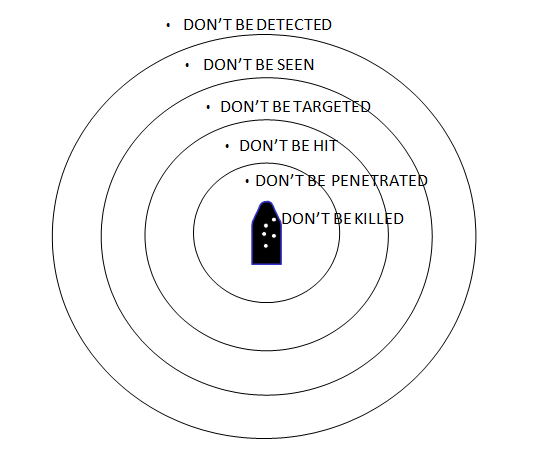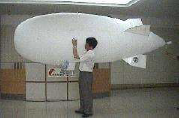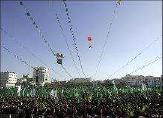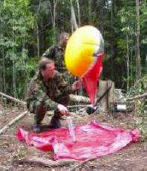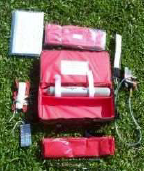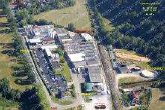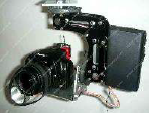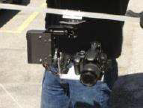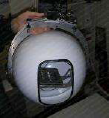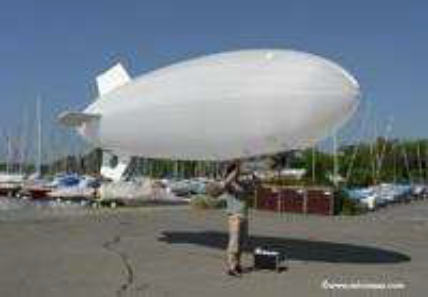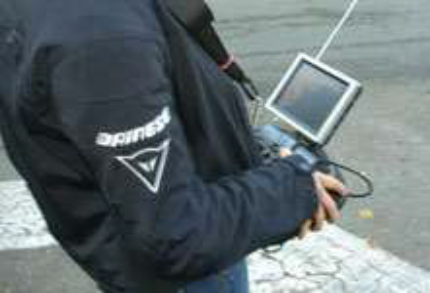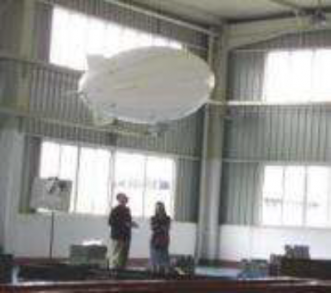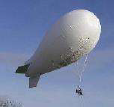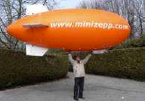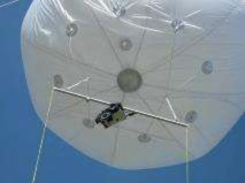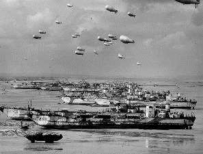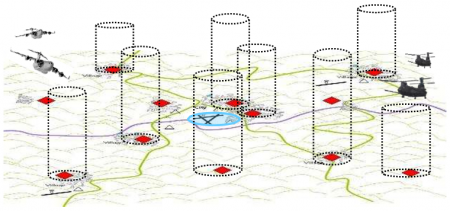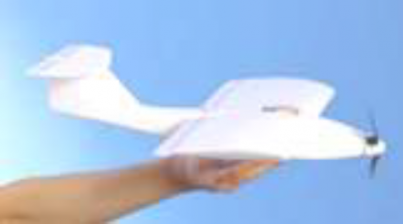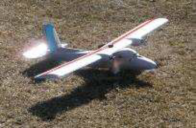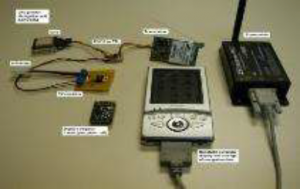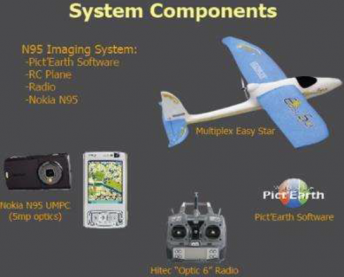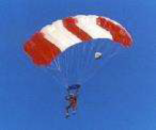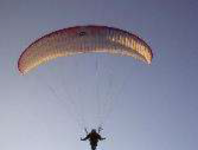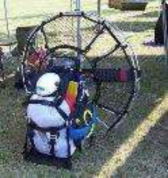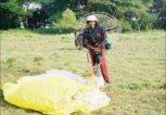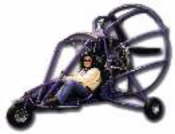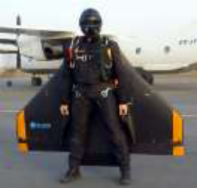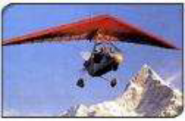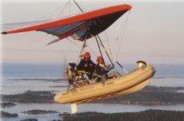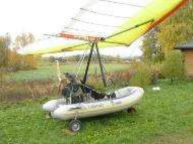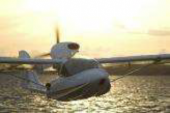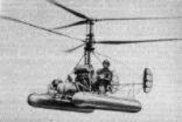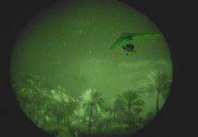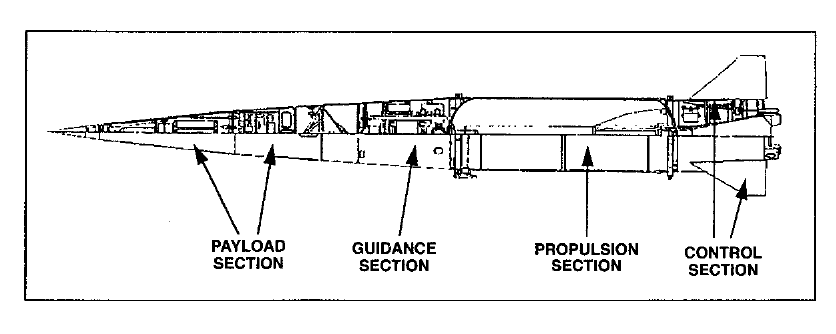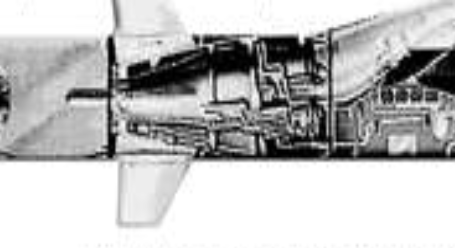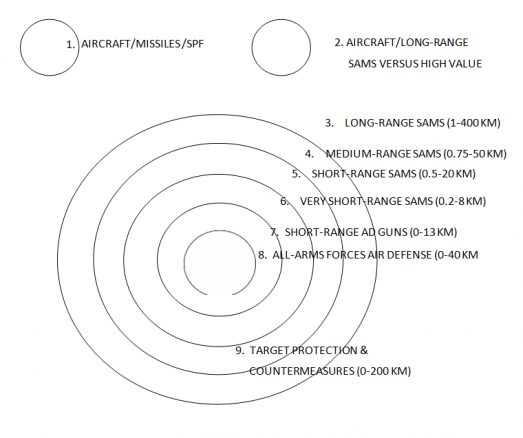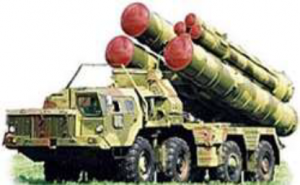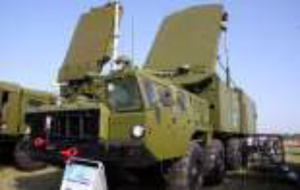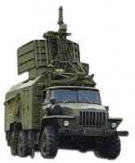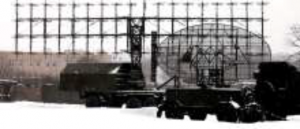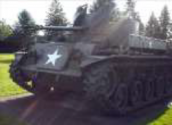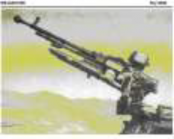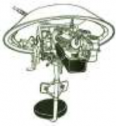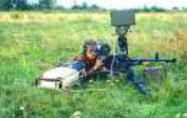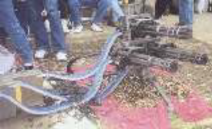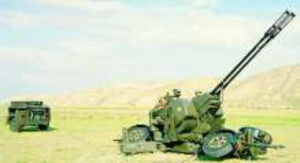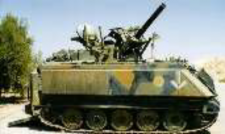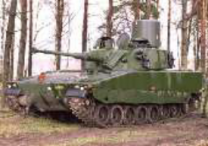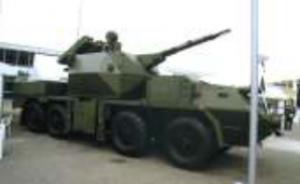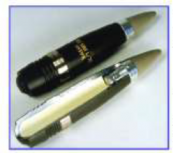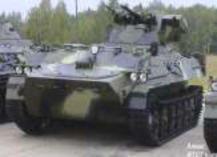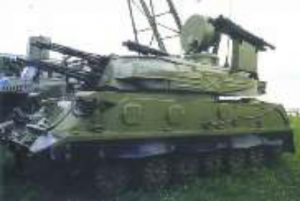Difference between revisions of "Volume 2: Air and Air Defense Systems"
(Created page with "== Chapter 1: Rotary Wing Aircraft == This chapter provides the basic characteristics of selected rotary-wing aircraft readily available to the OPFOR. The sampling of systems...") (Tag: Visual edit) |
(Tag: Visual edit) |
||
| Line 20: | Line 20: | ||
E-mail address: [[Mailto:john.m.cantin.ctr@mail.mil|john.m.cantin.ctr@mail.mil]] | E-mail address: [[Mailto:john.m.cantin.ctr@mail.mil|john.m.cantin.ctr@mail.mil]] | ||
| − | === | + | === ROTARY WING AIRCRAFT WEAPONS AND AIRCRAFT- DELIVERED MUNITIONS (ADM) === |
A wide variety of weapons and munitions can be employed on rotary- wing aircraft for use against aerial, ground, and waterborne targets. Weapons can be generally categorized as guns, launchers, and dispensers. Munitions are primarily rounds, rockets, missiles, bombs, grenades, mines, and torpedoes (see the tables below). However, new technologies continue to emerge, and are expanding the ability of aircraft to deliver lethality and execute other missions for and against military forces. Technology trends for more lethal air attack include abilities to: launch reconnaissance UAVs to support their missions in roles such as target selection and designation, launch attack UAVs, and add new weapons and munitions for long-range precision attack. The following weapons and munitions apply to RW systems in this chapter. Fixed-wing aircraft can use these munitions and a variety of heavier ones. | A wide variety of weapons and munitions can be employed on rotary- wing aircraft for use against aerial, ground, and waterborne targets. Weapons can be generally categorized as guns, launchers, and dispensers. Munitions are primarily rounds, rockets, missiles, bombs, grenades, mines, and torpedoes (see the tables below). However, new technologies continue to emerge, and are expanding the ability of aircraft to deliver lethality and execute other missions for and against military forces. Technology trends for more lethal air attack include abilities to: launch reconnaissance UAVs to support their missions in roles such as target selection and designation, launch attack UAVs, and add new weapons and munitions for long-range precision attack. The following weapons and munitions apply to RW systems in this chapter. Fixed-wing aircraft can use these munitions and a variety of heavier ones. | ||
{| class="wikitable" | {| class="wikitable" | ||
| Line 328: | Line 328: | ||
'''Other assets, such as aircraft or ground''' | '''Other assets, such as aircraft or ground''' | ||
| − | ''''''forces with LTD can laze rockets to target. S-8PM with jammer'''''' | + | '<nowiki/>'''''forces with LTD can laze rockets to target. S-8PM with jammer'''''' |
|- | |- | ||
|'''Hydra-70/''' | |'''Hydra-70/''' | ||
| Line 335: | Line 335: | ||
|'''U.S.''' | |'''U.S.''' | ||
| − | ''''''Others'''''' | + | '<nowiki/>'''''Others'''''' |
|'''70''' | |'''70''' | ||
|'''No''' | |'''No''' | ||
| Line 360: | Line 360: | ||
|'''MPSM is multipurpose,''' | |'''MPSM is multipurpose,''' | ||
| − | ''''''programmable time fuze. SAL-H in R&D.'''''' | + | '<nowiki/>'''''programmable time fuze. SAL-H in R&D.'''''' |
|- | |- | ||
|'''S-13''' | |'''S-13''' | ||
| Line 1,976: | Line 1,976: | ||
|} | |} | ||
| − | ==== | + | ==== COUNTERMEASURES BY FUNCTIONAL AREA AND TYPE SYSTEM ==== |
{| class="wikitable" | {| class="wikitable" | ||
|'''Functional Area''' | |'''Functional Area''' | ||
| Line 2,214: | Line 2,214: | ||
|} | |} | ||
| − | ===== | + | ===== TECHNOLOGIES AND APPLICATIONS FOR USE BY OPFOR: NEAR AND MID-TERM ===== |
{| class="wikitable" | {| class="wikitable" | ||
|'''TECHNOLOGY CATEGORY''' | |'''TECHNOLOGY CATEGORY''' | ||
| Line 2,409: | Line 2,409: | ||
|} | |} | ||
| − | ===== | + | ===== ANTI-TANK ===== |
{| class="wikitable" | {| class="wikitable" | ||
|'''SYSTEM''' | |'''SYSTEM''' | ||
| Line 2,458: | Line 2,458: | ||
|} | |} | ||
| − | ===== | + | ===== ENGINEER ===== |
{| class="wikitable" | {| class="wikitable" | ||
|'''SYSTEM''' | |'''SYSTEM''' | ||
| Line 2,489: | Line 2,489: | ||
|} | |} | ||
| − | ===== | + | ===== INFORMATION WARFARE ===== |
{| class="wikitable" | {| class="wikitable" | ||
|'''SYSTEM''' | |'''SYSTEM''' | ||
| Line 2,538: | Line 2,538: | ||
|} | |} | ||
| − | ===== | + | ===== COMMAND AND CONTROL ===== |
{| class="wikitable" | {| class="wikitable" | ||
|'''SYSTEM''' | |'''SYSTEM''' | ||
| Line 2,551: | Line 2,551: | ||
|} | |} | ||
| − | ===== | + | ===== DECEPTION AND COUNTERMEASURE SYSTEMS ===== |
{| class="wikitable" | {| class="wikitable" | ||
|'''SYSTEM''' | |'''SYSTEM''' | ||
| Line 2,570: | Line 2,570: | ||
|} | |} | ||
| − | ===== | + | ===== ROTARY WING AIRCRAFT ===== |
{| class="wikitable" | {| class="wikitable" | ||
|'''SYSTEM''' | |'''SYSTEM''' | ||
| Line 2,621: | Line 2,621: | ||
|} | |} | ||
| − | ===== | + | ===== FIXED WING AIRCRAFT ===== |
{| class="wikitable" | {| class="wikitable" | ||
|'''SYSTEM''' | |'''SYSTEM''' | ||
| Line 2,644: | Line 2,644: | ||
|} | |} | ||
| − | ===== | + | ===== OTHER MANNED AERIAL SYSTEMS ===== |
{| class="wikitable" | {| class="wikitable" | ||
|'''SYSTEM''' | |'''SYSTEM''' | ||
| Line 2,663: | Line 2,663: | ||
|} | |} | ||
| − | ===== | + | ===== UNMANNED AERIAL VEHICLES ===== |
{| class="wikitable" | {| class="wikitable" | ||
|'''SYSTEM''' | |'''SYSTEM''' | ||
| Line 2,696: | Line 2,696: | ||
|} | |} | ||
| − | ===== | + | ===== THEATER MISSILES ===== |
{| class="wikitable" | {| class="wikitable" | ||
|'''SYSTEM''' | |'''SYSTEM''' | ||
| Line 2,741: | Line 2,741: | ||
|} | |} | ||
| − | ===== | + | ===== AIR DEFENSE ===== |
{| class="wikitable" | {| class="wikitable" | ||
|'''SYSTEM''' | |'''SYSTEM''' | ||
| Line 2,941: | Line 2,941: | ||
E-mail address: [[Mailto:jennifer.v.dunn.civ@mail.mil|jennifer.v.dunn.civ@mail.mil]] | E-mail address: [[Mailto:jennifer.v.dunn.civ@mail.mil|jennifer.v.dunn.civ@mail.mil]] | ||
| − | === | + | === Airships in Military Applications === |
[[File:Air Chapter5 Zeppelin.png|right|frameless]] | [[File:Air Chapter5 Zeppelin.png|right|frameless]] | ||
Airships (“lighter-than-air” craft) have been used in warfare since the 1800s, when balloons offered elevated platforms for military observers. Airships are increasingly used in civilian venues and offer capabilities for military use. Primary roles are: | Airships (“lighter-than-air” craft) have been used in warfare since the 1800s, when balloons offered elevated platforms for military observers. Airships are increasingly used in civilian venues and offer capabilities for military use. Primary roles are: | ||
| Line 4,650: | Line 4,650: | ||
Developments continue. New thermal night sights are offered. One particularly active area for MANPADS is in support assets. Passive support systems include acoustic detection systems, unattended ground sensors, and remote passive IR camera systems. Radars and links to IADS can link directly with MANPADS or indirectly through the transport/fire support vehicles. | Developments continue. New thermal night sights are offered. One particularly active area for MANPADS is in support assets. Passive support systems include acoustic detection systems, unattended ground sensors, and remote passive IR camera systems. Radars and links to IADS can link directly with MANPADS or indirectly through the transport/fire support vehicles. | ||
| − | === | + | === Recent Developments in Medium-Range Air Defense (MRAD) Systems === |
In the past, the US and Russia dominated military markets in medium-range SAM systems. Most well-fielded MRAD systems are Russian systems, or license-produced copies or variants of those systems. Most still have some effectiveness for AD, especially with upgrade programs. But new systems and new producers are expanding options for their MRAD choices. | In the past, the US and Russia dominated military markets in medium-range SAM systems. Most well-fielded MRAD systems are Russian systems, or license-produced copies or variants of those systems. Most still have some effectiveness for AD, especially with upgrade programs. But new systems and new producers are expanding options for their MRAD choices. | ||
| Line 4,661: | Line 4,661: | ||
Other countries have entered the development arena for indigenous MRAD systems. A number of air-to-air missiles have been adapted for ground mounts as medium-range SAMs. Others are indigenous developments, which offer export capabilities and flexible adaptation to meet specific customer needs. See some of the many variant examples with the Aspide 2000 missile (next page). Other systems have been developed by Sweden (RBS 23/BAMSE) Israel (Spyder-MR), and South Korea. Israel is also developing Arrow as an anti-theater ballistic missile (ATBM) system. India and several other countries have foreign system acquisition/upgrade programs, as well as indigenous development programs underway. European countries (SAMP-T), Norway (NASAMS, with the AMRAAM missile), and Turkey are currently in MRADS development programs. China is offering its KS-1A system. European firms are adapting the IRIS-T AAM for ground launchers. | Other countries have entered the development arena for indigenous MRAD systems. A number of air-to-air missiles have been adapted for ground mounts as medium-range SAMs. Others are indigenous developments, which offer export capabilities and flexible adaptation to meet specific customer needs. See some of the many variant examples with the Aspide 2000 missile (next page). Other systems have been developed by Sweden (RBS 23/BAMSE) Israel (Spyder-MR), and South Korea. Israel is also developing Arrow as an anti-theater ballistic missile (ATBM) system. India and several other countries have foreign system acquisition/upgrade programs, as well as indigenous development programs underway. European countries (SAMP-T), Norway (NASAMS, with the AMRAAM missile), and Turkey are currently in MRADS development programs. China is offering its KS-1A system. European firms are adapting the IRIS-T AAM for ground launchers. | ||
| − | === | + | === Recent Developments in Long-Range and High-Altitude Air Defense Systems === |
The worldwide trend in modernization of long-range AD (LRAD) and high-altitude continues, even in times of shrinking military budgets. The trend is driven by expanding strategic threats of aerodynamic systems (e.g., ballistic and cruise missiles, UAVs, and stealth aircraft), and deadly munitions (e.g., weapons of mass destruction and effects, and precision weapons). | The worldwide trend in modernization of long-range AD (LRAD) and high-altitude continues, even in times of shrinking military budgets. The trend is driven by expanding strategic threats of aerodynamic systems (e.g., ballistic and cruise missiles, UAVs, and stealth aircraft), and deadly munitions (e.g., weapons of mass destruction and effects, and precision weapons). | ||
| Line 4,674: | Line 4,674: | ||
Russia intends to upgrade strategic SAM systems and upgrade all S-300 and S-400 systems into an integrated network. Priorities are for every battery to be able to counter ballistic missiles, surges, and high-value systems (stealth, AWACS, and SEAD). China is upgrading its SA-10/SA-20 systems and to compete with Russian systems. Many forces are adding new long-range EW and TA radars and other sensors, and upgrading older systems to extend range and digitally integrate them into IADS. These include ELINT, other passive sensors, and responsive, jam-resistant, secure C3 networks to destroy UCAVs and stealth aircraft. | Russia intends to upgrade strategic SAM systems and upgrade all S-300 and S-400 systems into an integrated network. Priorities are for every battery to be able to counter ballistic missiles, surges, and high-value systems (stealth, AWACS, and SEAD). China is upgrading its SA-10/SA-20 systems and to compete with Russian systems. Many forces are adding new long-range EW and TA radars and other sensors, and upgrading older systems to extend range and digitally integrate them into IADS. These include ELINT, other passive sensors, and responsive, jam-resistant, secure C3 networks to destroy UCAVs and stealth aircraft. | ||
| − | === | + | === S-300P Series Strategic Air Defense Systems Comparison* === |
{| class="wikitable" | {| class="wikitable" | ||
|NATO DESIGNATOR | |NATO DESIGNATOR | ||
Revision as of 21:58, 24 July 2017
Contents
- 1 Chapter 1: Rotary Wing Aircraft
- 2 Chapter 2: Fixed Wing Aircraft
- 3 Chapter 3: Unmanned Aerial Vehicles
- 4 Chapter 4: Equipment Upgrades, Countermeasures, and Emerging Technology Trends
- 4.1 EQUIPMENT UPGRADES
- 4.2 OPFOR AIR DEFENSE SYSTEMS UPGRADES
- 4.3 OPFOR AERODYNAMIC SYSTEM UPGRADES
- 4.4 COUNTERMEASURES
- 4.5 LETHALITY COMPONENT VERSUS COUNTERMEASURE RESPONSES
- 4.6 Emerging Technology Trends
- 4.6.1 OPFOR Technologies And Emerging Operational Environments[edit]
- 4.6.2 PROJECTED OPFOR CAPABILITIES: NEAR – AND MID – TERM
- 4.6.2.1 RECONNAISSANCE, INTELLIGENCE, SURVEILLANCE, TARGET ACQUISITION
- 4.6.2.2 ANTI-TANK
- 4.6.2.3 ENGINEER
- 4.6.2.4 INFORMATION WARFARE
- 4.6.2.5 COMMAND AND CONTROL
- 4.6.2.6 DECEPTION AND COUNTERMEASURE SYSTEMS
- 4.6.2.7 ROTARY WING AIRCRAFT
- 4.6.2.8 FIXED WING AIRCRAFT
- 4.6.2.9 OTHER MANNED AERIAL SYSTEMS
- 4.6.2.10 UNMANNED AERIAL VEHICLES
- 4.6.2.11 THEATER MISSILES
- 4.6.2.12 AIR DEFENSE
- 4.7 MILITARY TECHNOLOGY TRENDS FOR VOLUME 2 SYSTEMS IN 2025
- 5 Chapter 5: Unconventional and SPF Aerial Systems
- 6 Chapter 6: Theatre Missiles
- 7 Chapter 7: Air Defense Systems
- 7.1 Air Defense Command and Control and RISTA in Training Simulations
- 7.2 Air Defense Systems and Domains
- 7.3 Aircraft Survivability and Air Defense Countermeasures
- 7.4 Air Defense Systems: Key Technology Trends
- 7.5 Air Defense and Other Technology Counters to Unmanned Aerial Vehicles (UAVs)
- 7.6 Air Defense Trends in Countering Low Observable (LO) and Stealth Aerial Systems
- 7.7 Electronic Intelligence (ELINT) Support to Air Defense
- 7.8 Recent Developments in Very Short Range Air Defense (VSHORAD) Systems
- 7.9 Adaptive Weapons for Air Defense in Close Terrain
- 7.10 Air Defense/Antitank (ADAT) Vehicles
- 7.11 Short-Range Air Defense: Gun and Gun/Missile System Technology Trends
- 7.12 Recent Developments in Medium-Range Air Defense (MRAD) Systems
- 7.13 Recent Developments in Long-Range and High-Altitude Air Defense Systems
- 7.14 S-300P Series Strategic Air Defense Systems Comparison*
Chapter 1: Rotary Wing Aircraft
This chapter provides the basic characteristics of selected rotary-wing aircraft readily available to the OPFOR. The sampling of systems was selected because of wide proliferation across numerous countries or because of extensive use in training scenarios. Rotary-wing aircraft covers systems classified as light, attack, multirole, transport, and reconnaissance aircraft. Rotary wing aircraft can be used for a variety of roles, including attack, transport, direct air support, escort, target designation, security, reconnaissance, ambulance, anti-submarine warfare (ASW), IW, airborne C2, search and rescue (SAR), and anti-ship.
Because of the increasingly large numbers of variants of each aircraft, only the most common variants produced in significant numbers were addressed. If older versions of helicopters have been upgraded in significant quantities to the standards of newer variants, older versions may not be addressed. Helicopters can be categorized into capability tiers. Upgrades may designate different configurations of the same aircraft in different tiers. Technology priorities include multirole capability, more lethal weapons with longer range, ability to operate in all terrains, survivability/countermeasures, and sensors for day/night all-weather capability.
Helicopters can be configured for various combat missions (attack, direct air support, escort, target designation, etc.). The best armed combat helicopters are attack helicopters, which may be used for all combat missions (including attack, direct air support, escort, anti-ship, etc), and some non-combat missions (transport, reconnaissance, SAR, etc). Helicopter gunships (combat configurations of multirole helicopters) can be used for all combat and non-combat missions, but are less suitable for attack missions against well-defended targets. Some of these missions can be executed by armed multirole helicopters.
The weapon systems inherent to the airframe are listed under Armament. They use various weapon mounts, including fuselage or turret nose gun, external mounted pylons (or hardpoints), and cabin weapons, including door guns. Pylons can mount single munitions, launchers or pods, sensor pods, or fuel tanks.
Munitions available to each aircraft are noted, but not all may be employed at the same time. Munition selection is based on mission and flight capability priorities. Munitions include bombs, missiles (ATGMs, air-to-surface missiles/ASMs, air-to-air missiles/AAMs), or rockets (single or in pods), mine pods, and automatic grenade launchers. For helicopter missions, other weapons and more ammunition can be carried in the passenger compartment. The most probable weapon loading options are also given, but assigned mission dictates actual weapon configuration.
Tables on aircraft weapons and aircraft-delivered munitions (ADMs) are at pages 2-22 to 2-26.
Questions and comments on data listed in this chapter should be addressed to:
Mr. John Cantin
DSN: 552-7952, Commercial (913) 684-7952
E-mail address: [[1]]
ROTARY WING AIRCRAFT WEAPONS AND AIRCRAFT- DELIVERED MUNITIONS (ADM)
A wide variety of weapons and munitions can be employed on rotary- wing aircraft for use against aerial, ground, and waterborne targets. Weapons can be generally categorized as guns, launchers, and dispensers. Munitions are primarily rounds, rockets, missiles, bombs, grenades, mines, and torpedoes (see the tables below). However, new technologies continue to emerge, and are expanding the ability of aircraft to deliver lethality and execute other missions for and against military forces. Technology trends for more lethal air attack include abilities to: launch reconnaissance UAVs to support their missions in roles such as target selection and designation, launch attack UAVs, and add new weapons and munitions for long-range precision attack. The following weapons and munitions apply to RW systems in this chapter. Fixed-wing aircraft can use these munitions and a variety of heavier ones.
| GUNS | |||||||
| Mount/Gun Name | Producing Country | Caliber or mm/Type | Barrels (if 2+) | Mount, Fixed or Turret/ Pod (Fixed) | # of Rounds/ Rds per Min | Munition Types (Other Than Ball-T, API-T, HEI-T) | Munition Range (m)/ Lethality (penetration-mm) |
| AA-52 | France | 7.62 MG *1 | 1 | Pod | 500+/900 | 1,200 heavy barrel | |
| M134 | U.S. | 7.62 Mini- gun | 6 | M27or Mini-TAT turret, M18 pod | 1500/2,000,
4,000 |
1,500 m | |
| PKM | Russia | 7.62 MG | Cabin, rear | Varies/250prac tical | 1,000/ 8 at 500 m | ||
| PKT | Russia | 7.62 MG | Nose fixed, rear, pod | 3,800/250
practical |
2,000/ 8 at 500 m | ||
| AN/M2 | U.S./Other s | .50-cal MG | 1 | Door pintle, or fixed, pod | /750-850 | APFSDS-T, SLAP | 1,800 |
| NSV-T | Russia | 12.7 MG | 1 | Door pintle or fixed, pod | /800 | Incendiary, Duplex-T *2 | 2,000/20 at 500, 13.2 at 1,000 |
| YakB-12.7 | Russia | 12.7
Gatling |
4 | USPU-24 chin turret
GUV-8700 pod |
1,470/4,500
750/4,500 |
Incendiary, Duplex-T *2 | 2,000 |
| M197 | U.S. | 20 Gatling | 3 | Nose turret | /750 | 1,500 | |
| M 621 | France | 20 Cannon | 1 | THL-20 turret, pod,
right side fixed *3 |
100+/650 | APDS | 1,500-2,000 m |
| 9A669 GUV
9A624 9A622 |
Russia | 23 Cannon
7.62 Mini- gun |
2
4 |
Pod with 3 guns, the 23-
mm, and 2 x 7.62 mini- guns |
750/300 or
3,400 2200/ |
Frangible, APFSDS-T | 2,500+/16 at 1,000 m for Frangible
2,000/ 8 at 500 m |
| GSh-23L
Type 23-3 |
Russia China | 23 Cannon | 2 | USPU-24 chin turret NPPU-24 right side *3 UPK-23-250 pod fixed *3 | 470/3,400
470/4,300 250/300 or 3,400 |
Frangible, APFSDS-T | |
| NS-23KM | Russia | 23
Cannon |
2 | Right side fixed | 550 practical | Frangible, Frag-HE, CC*4 APFSDS-T | 2,500/19 @ 1000 m API-T |
| 2A42 | Russia | 30
Cannon |
1 | NPPU-280 chin turret | 460/250/200
or 600 |
Frangible, Frag-HE, CC*4 APFSDS-T | 4,000/45 at 2,000 m for APFSDS-T |
| GSh-30K | Russia | 30
Cannon |
2 | Right side fixed | 250/varies to 2,600 | Frangible, Frag-HE, CC*4 APFSDS-T | 4,000/45 at 2,000 m for APFSDS-T |
*1 Early versions of AA-52 were in 7.5 x 54 mm.
*2 Duplex round has 2 cartridges, to double fire saturation in the beaten zone.
*3 Gun (on fuselage or in a pod) has a fixed base mount, but can flex in elevation. An example is the UPK-23-250 flexible gun pod, which can depress guns to 30 degrees.
*4 CC is a 30mm canister round with 28 sub-projectiles for use against soft targets and personnel with increased fire saturation in the beaten zone.
| AERIAL ROCKETS | ||||||||
| Name | Producing Country | Caliber (mm) | Guidance No/Yes | Pod Name (# per pod) | Munition Nomenclature | Lethal Munition Type | Munition Range (m)/Lethality (penetration) | Comments |
| SNIA | France | 50 | No | /28 | 500+/900 | |||
| S-5 | Russia
Others |
57 | No/SAL-H | UB-9
UB-16-57 UB-32 |
S-5K, KO, KP, KPB
S-5, S-5M, S-5OM S-5Cor |
HEAT-Frag,
Frag-HE Frag-HE HEAT SAL-H |
2,000/200
4,000 4,500 7,000/200 |
SAL-H: Semi-active Laser-Homing, aircraft with a laser target designator. |
| SNEB | France | 68 | No/SAL-H | Heli TDA 68- 12C/12 Heli TDA 68-
22C/22 |
Type 253 Type 26P Type 24, 26 | HEAT-MP
Frag-HE APERS |
1,600/INA
1,600 |
There are reports of SAL-H capability - see above |
| S-8 | Russia
Others |
80 | No/SAL-H | B-8V7/7
B-8V20A/20 B-8M1/20 |
S-8KOM
S-8T S-8DM S-8BM S-8ASM S-8Cor |
HEAT-Frag
Tandem HEAT Frag HE APHE Flechette HEAT SAL-H |
4,000/400 antitank
4,000/600+ antitank 4,000/HE fuel- air 2,200/2 m concrete + HE INA 8,000/ 400 |
SAL-H see above.
Other assets, such as aircraft or ground 'forces with LTD can laze rockets to target. S-8PM with jammer' |
| Hydra-70/
2.75 inch rkt |
U.S.
'Others' |
70 | No | M260/7,
M261/19 |
M151 and M229
M261 M255A1 |
HE
HE-MPSM Flechette |
8.8/M151 10-lb
Warhead, M229 17-lb 7,000/9 DP submunitions |
MPSM is multipurpose,
'programmable time fuze. SAL-H in R&D.' |
| S-13 | Russia
Others |
122 | No/SAL-H | B-13R/5
B-13L/5 |
S-13
S-13-OF S-13DF S-13T S-13Cor |
HEAT
Frag-HE HE thermobaric APHE HEAT SAL-H |
4,000/3 m soil,
1 m concrete +HE 3,000/Frag-HE 6,000/equal to 40 kg of TNT 4,000/6 m soil, 1 m concrete + HE 9,000/700 |
SAL-H see above |
| S-24B | Russia | 240 | No/SAL-H
Inertial |
/1 | V-24APD
RV-24 S-24BMZ |
Frag-HE PD
fuze Frag-HE prox fuze Frag-HE |
2,000/23.5 kg
warhead |
SAL-H option see above
Fuze conversion kit with fins |
| S-25 | Russia | 340 | No/SAL-H | O-25/1 | S-25-OFME
S-25L S-25LD |
Frag-HE prox
fuze HE SAL-H HE SAL-H |
2-4,000/190 kg warhead
7,000/150 kg HE warhead 10,000/150 kg HE, 8 m CEP |
SAL-H see above
S-25LD can also use TV or IR-homing |
| Type 90-1 | China | 90 | No | /7 | Type 90-1 | Frag-HE | 7,000 | Chinese |
| ANTITANK GUIDED MISSILES (ATGMS) | |||||||||
| Name | Producin g Country | Rate of Fire (#/mi n, based on range) | Guidance | #/Po d | Munition Nomenclatu re
(If different) |
Munition Type | Munition Range (m)/ Penetration (mm) | Comments | |
| AT-2c | Russia | 3-4 | RF SACLOS | 2 | HEAT, HE | 4,000/650 | |||
| AT-3c and AT- 3e | Russia Others | 2-3 | Wire SACLOS | 1 or
3 |
AT-3c, AT-3E | HEAT
(comment s), HE |
3,000/520, 800
AT-3e |
AT-3e has Tandem HEAT. Other Countries make copies/varian
ts. |
|
| AT-
6/Shturm-V |
Russia | 3-4 | RF SACLOS | 4
*1,2 |
HEAT, HE | 5,000/650 | |||
| AT-
6b/Shturm- V1 |
Russia | 3-4 | RF SACLOS | 4
*1,2 |
Tandem HEAT, HE | 6,000/1,000 | |||
| AT-
6c/Shturm- V2 |
Russia | 3-4 | RF SACLOS | 4
*1,2 |
Tandem HEAT, HE | 7,000/1,000 | |||
| AT-9/Ataka | Russia | 3-4 | RF SACLOS | 4
*1,2 |
Tandem HEAT, HE, AA
frangible rod |
6,000/1,100 | Expected upgrades include 8-km range, IR/radar homing. See
*1. |
||
| Krizantema/ AT-15 | Russia | 4-6 | RF ACLOS/LBR | 4 | Tandem HEAT | 6,000/1,250+E RA (1,500+) | 2
simultaneous, separate targets |
||
| AT-16/Vikhr- M | Russia | 2-3 | Laser-beam rider | 8 *2,
3 |
Tandem HEAT/HE
*2 |
10,000 /1,200
*3 |
Proximity fuze on/off
per target. |
||
| Hellfire | U.S./UK | 2-3 | SAL-H *5 | 4 *3 | Hellfire, Hellfire II | Tandem HEAT + HE
*2 |
Hellfire II
8000/1300+ equiv |
||
| Hermes-A | Russia | 2-2 | Inertial/RF/S AL-H *5 | 6 | Tandem HEAT + HE
*2 |
18,000/1300+
equiv |
28 kg
warhead, 40 km version due |
||
| HOT | Europe | 3-4 | Wire SACLOS | 2, 3,
4 |
HOT-2, HOT- 3 | Tandem HEAT | HOT 3
4000/1250+ |
||
| LAHAT | Israel | 2-4 *4 | SAL-H *5 | 4 | Tandem HEAT | 13,000/1,000+
Dive attack |
|||
| Mokopa | South Africa | 2-4 *4 | SAL-H *5 | Tandem HEAT | 10,000/1,350+ | Variant of Hellfire | |||
| Red Arrow-8F | China | 3-4 | Wire SACLOS | 2 or
4 |
Tandem HEAT | 4,000/1,100 | |||
| Spike-ER | Israel | 2-3 | Fiber-Optic *5 and IIR
homing |
2 or
4 |
Tandem HEAT | 8,000/1,000+
Dive attack |
AKA: NTD,
Dandy. ER stands for Extended Range | ||
| TOW/BGM-71 | U.S./Others | 3-4 | Wire SACLOS | 2 or 4 | TOW-2 | Tandem HEAT | TOW 3750/900+ | 2 | 2-missile pod on MD-500.
Other countries make copies/variants. |
*1. AT-6 and variants, and AT-9 and variants, are interchangeable in launchers for each other.
*2. Launcher pods can also launch AA-16, AA-18, or AA-18S air-to-air missiles, decreasing the number of ATGMs in the pod for a given mission.
*3. AT-16 and Hellfire II have combined HEAT and HE warheads for multi-role use. The AT-16 also has proximity fuse that can be engaged in-flight for aircraft and materiel targets.
*4. With semi-active laser homing (SAL-H) guidance, launcher craft can hand off missile control to another designator, and launch other missiles without delays from missile flight time.
*5. Guidance modes such as SAL-H and fiber-optic can be categorized as non-line-of-sight, whereby the launcher craft can be outside of view of the target, and can avoid return fires.
*6. For additional information on antitank and anti-armor missiles, see Vol 1 Chapter 6.
| AIR-TO-AIR MISSILES (AAMS) | |||||||
| Name | Producing Country | Also SAM or ATGM *1 | Guidance | Pod Name (# per
pod) |
Munition Type | Munition Range (km)/Warhead
(kg) |
Comments |
| AA-2C or
D/ATOLL/R-13M |
Russia | IR-homing | /1, 2 | Frag-HE | 8/7.4 | AIM-9L
upgrade phasing out | |
| AA-8/APHID/R- 60M | Russia | IR-homing | /1 | HE
Continuous rod prox |
8 low
altitude/3.5 |
Upgrade missile with
DU rod | |
| AA- 11/ARCHER/R-
73 RMD1 |
Russia | IR-homing | /1 | HE
Continuous rod prox |
30/7.4 | ||
| AA- 11/ARCHER/R-
73 RMD2 |
Russia | IR-homing | /1 | HE
Continuous rod prox |
40/7.4 | ||
| SA-7b/Strela- 2M | Russia/Others | MANPADS SAM | IR-homing | /1 | Frag-HE | 5/1.15 | |
| SA-14/Strela-3 | Russia/Others | MANPADS SAM | IR-homing | /1, 2, 4 | Frag-HE | 6/1.0 | |
| SA-16/Igla-1 | Russia/Others | MANPADS SAM | IR-homing | /1, 2, 4 | Frag-HE | 5.2+/1.27 | |
| SA-18/Igla | Russia/Others | MANPADS SAM | IR-homing | /1, 2, 4 | Frag-HE | 6/1.27 | |
| SA-24 (SA- 18S) | Russia | MANPADS SAM | IR-homing | /1, 2, 4 | Continuous rod, prox fuze | 6+/2.5 | Aka: Igla- S/Igla-Super |
| AIM-
9L/Sidewinder |
U.S./Others | Veh/towed SAM | IR-homing | Frag-HE | 17.7/9.5 | ||
| AT-6c and AT- 9/Ataka | Russia | Veh ATGM | RFSACLOS | /4, 8 *1
*2 |
Tandem HEAT | 7/7.4, 6/7.4
Ataka |
Penetration 1,000-1,100
mm |
| Ataka 9A2200 Missile | Russia | Veh ATGM | RFSACLOS | 4, 8 *1
*2 |
Continuous rod, prox fuze | 6/ | Also fit AT-6 launchers |
| AT-16/Vikhr-M | Russia | RW ATGM | Laser-beam rider | /8 *1 *2 | HEAT/HE
with prox on/off |
10,000 /INA | Penetration 1,300+ mm |
| Mistral 2 | France | Veh/pedestal SAM | IR-homing | ATAM/1, 2 | Frag-HE, prox | 6/3 | On Gazelle |
| Spike-ER | Israel | Veh/man-port ATGM | FOG_M,
IIR-homing |
/4 *1 *2 | Tandem HEAT | 8.0/INA | Penetration 1,000+ mm |
| Starstreak | UK | AD/AT or multi- role | Laser-beam rider | ATAS/4
*1 |
3 x Sabots with Frag- HE | 7/.9 kg per submissile | 3 x high- velocity submissiles |
| Stinger | U.S./Others | Veh/MANPADS SAM | IR-homing | ATAS/4, 2 | HE | 4.5+/1.0 | |
| TY-90/Yitian | China | Veh-launch SAM | IR-homing | /2, 1 | HE,
frangible rod |
6/3 | Too large for MANPADS
use |
*1. All ATGMs can be used to engage helicopters hovering or flying low and slow, esp. nap-of-the-earth mode (35 km/hr or less). These ATGMs can engage RW aircraft at all times.
*2. ATGM launcher can substitute 1 or more SAMs.
| AIR-TO-SURFACE MISSILES (ASMS) | |||||||
| Name | Producing Country | Mission | Guidance | #/Pod | Warhead Type | Munition Range (km)/ Penetration
(mm) |
Comments |
| AS-10/KAREN/Kh- 25ML
Kh-25- MR Kh-25- MT Kh- 25MTP |
Russia | Tactical Tactical, AT Tactical, AT Tactical, AT | SAL-H
RF-Guided TV-Guided Thermal-Guided |
1 | Frag-HE/90 kg
Frag-HE/90 kg Frag-HE/90 kg Frag-HE/90 kg |
20/
10/ 20/ 20/ |
|
| AS-12/KEGLER/Kh- 25MP | Russia | Anti-radar | Passive-homing | 1 | 90 kg | 40/ | |
| AS-12/AS.12 | France | Tactical, AT, Anti-ship | Wire SACLOS | 2 | SAPHE, 28
kg |
7/ | |
| AS- 17/KRYPTON/Kh-
31P |
Russia | Anti-radar | Passive homing | 1 | 90 kg | 100/ | |
| AS- 17/KRYPTON/Kh-
31A |
Russia | Anti-ship | Active radar | 1 | 90 kg | 50/ | |
| C-701 | China | Anti-ship, land attack | TV, IR-homing | 4 | SAPHE, 29
kg |
20/ | MMW-homing tested |
| Hermes-A | Russia | Tactical, AT | Inertial/RF/SAL- H | 6-8 | Frag-HE, 28 kg | 40/1300+ | 100 km version due |
| Sea Skua | UK | Anti-ship | Semi-active Radar | 1 | SAPHE, 28
kg |
25/ | |
| Guided Rockets see pg 2-23 | Russia | SAL-H | |||||
* Systems designed for use with laser guidance are generally called missiles. However, some rockets can be adapted with SAL-H modifications for near-ASM range and precision.
| BOMBS1 | |||||||
| Weight | Guidance | Type | Nomenclature | Warhead or | Munition | ||
| Name | (kg) | (if any) | Specific Bomb | Submunition/# if more than 1/Nomenclature/Type | Range (m)/
Lethality (penetration- |
Comments | |
| mm) | |||||||
| GBU-100 | 120 | ASW
Depth Bomb |
HE 100 kg | ||||
| SZV | 94 | Underwater Acoustic | ASW
Depth Bomb |
HEAT 19 kg | 600 m in depth | Steers on glide fins | |
| FAB-100 | 117 | General Purpose | M80 | HE 39 kg | |||
| OFAB-100 | 100 | Blast-Frag | Frag-HE 60 kg | ||||
| FAB-250 | 250 | General Purpose | M79 | HE 105 kg | 30 radius | ||
| OFAB-250 | 250 | Blast-Frag | Frag-HE 210 kg | ||||
| RBK-250
Glide bomb (Dispenser) |
273 | Cluster Cluster | RBK-250- 275AO-
RBK-250AD-1 |
150 AO-1sch bomblets
/60 AO-2.5 RT AP bomblets /30 PTAB-2.5KO HEAT bomblets Chemical bomblets |
4,800 m2
destructive area |
Like MK-118 | |
| ZAB-250 | 250 | Incendiary | 200 kg Napalm | ||||
| KhB-250 | Chemical | 200 kg Sarin, VX, mustard, etc | |||||
| FAB- 500/M62 | 500 | General Purpose | HE 450 kg | ||||
| OFAB-500 | 515 | General Purpose | Frag-HE 155 kg | ||||
| OFZAB-500 | 500 | General Purpose | Frag-HE Incendiary 250 kg | ||||
| ODAB- 500PM | 520 | Fuel-Air Explosive | 193 kg | ||||
| KAB-500Kr | 560 | TV guided | Precision Attack | Concrete-piercing 380 kg,
200 kg chg |
1500 m2
destructive area |
||
| KAB-500L | 534 | SAL-H | Precision Attack | HE 400 kg with 195 kg of charge | 1500 m2
destructive area |
||
| RBK-500U
Glide bomb (Dispenser) |
504
500 520 427 334 525 525 525 500 467 |
Cluster | RBK-500AO OAB-2.5RT PTAB
PTAB-1M ShOAB-0.5 BETAB-500ShP OFAB ZAB PPM SPBE-D |
108/ AO-2.5 APAM
ICM/bomblets 126/ 5RTM APAM 352/ PTAB HEAT bomblets 60/ PTAB-2.5KO HEAT bomblets 268/ PTAB-1M HEAT bomblets 565/ 0.5 ShOAB-0.5 AP bomblets 10/ BETAB-M concrete piercing bomblets 10/ OFAB APAM bomblets 168/ ZAB incendiary bomblets 48/ PPM mines 15 IR sensor-fuzed 14.5 kg bomblets Chemical bomblets |
6,400 m2
destructive area 210 m2 destructive area 210 mm penetration top- atk 300 m x 400 m/210 mm top atk 300 m x 400 m Runway penetrators EFP top-attack2 |
Improvement over the RBK-500 | |
| ZAB-500 | 500 | Incendiary | 480 kg Napalm | ||||
*1. Only Russian RW aircraft in this chapter employ bombs. Thus, all bombs listed are Russian.
*2. EFP - Explosively-formed penetrator
Other ordnance includes sub munition and mine dispensers, minelayer ramps, automatic grenade launchers, anti-ship torpedoes, anti-submarine mines, and torpedoes. Selected RW aircraft can launch UAVs; therefore a near-term capability will be ability to launch attack UAVs or UCAVs and guide them to engage targets.
Chapter 2: Fixed Wing Aircraft
This chapter provides the basic characteristics of selected fixed-wing aircraft readily available to COE OPFOR
across the spectrum of joint operations. This sampling of systems was selected because of wide proliferation across numerous countries or because of already extensive use in training scenarios. Additional data sheets addressing other widely proliferated aircraft will be sent with further supplements to this guide. Many foreign militaries are leveraging advances in automated technologies in order to use increasing amounts of data across all warfighting capabilities. Increases in processing power and broadband technologies through commercial research and development make real time situational awareness and communications on the move a tangible objective for many foreign forces. The emergence of rudimentary Integrated Battlefield Management Systems (IBMS) in tier three forces represents this global trend. Net Centric operations are viewed worldwide as a key element of modern military operations, an IBMS is a system that integrates multiple command and control formats as well as sensor data into one display that improves situational awareness through multiple sources.
Because of the increasingly large numbers of variants of each aircraft, only the most common variants produced in significant numbers were addressed. If older versions of airplanes have been upgraded in significant quantities to the standards of newer variants, the older versions were not addressed.
Fixed-Wing Aircraft generally covers the systems that will affect the planning and actions of the ground maneuver force, aircraft commonly employed by the OPFOR when in close proximity to enemy ground forces, as well as strategic aircraft. This chapter classifies aircraft as fighter/interceptor, strike, ground- attack, multi-role, bombers, special-role, and transport aircraft. Multi-role aircraft are able to support missions across each of the categories. This chapter encompasses many aircraft which may have a dual civil/military application. It does not include, however, aircraft designed and used primarily for civil aviation.
The munitions available to each aircraft are mentioned, but not all may be employed at the same time. The weapon systems inherent to the airframe are listed under armament. The most probable weapon loading options are also given, but assigned mission dictates actual weapon configuration. Therefore, any combination of the available munitions may be encountered.
A wide variety of upgrade programs are underway. The FW aircraft variants noted are only a small representation of those available. For instance, application of GPS and commercial GPS map display units permits even the oldest aircraft to have precision location. Night vision systems coupled with the high level of night illumination existing in most areas of the world permit night use of older aircraft. Even though some weapons require linked effective night sights, many weapons, such as bombs (including sensor-fuzed), standoff GPS programmed cruise missiles, and munitions using remote guidance (such as semi-active laser- homing munitions guided by laser target designators) permit older aircraft to launch the munitions and rely on others to guide them to target. Other aerial systems can substitute for FW aircraft to execute what were FW missions. These include rotary-wing aircraft, unmanned aerial vehicles (including attack UAVs and UCAVs), improvised systems such as airships, and cruise missiles.
Many data sheets for joint systems were provided by Mr. Charlie Childress of JFCOM. Questions and comments on data listed in this chapter should be addressed to:
Mr. John Cantin
DSN: 552-7952 Commercial (913) 684-7952
E-mail address: [[2]]
Chapter 3: Unmanned Aerial Vehicles
An aviation technology which has seen the greatest expansion of research, development, and fielding activity in recent years is the unmanned aerial vehicle (UAV). According to a 2015 research report by the Rand Corporation there are 960 UAVs being produced by 270 companies in 57 countries. They also claim that in the past two years the number of UAVs has gone up 40% with the number of UAV companies entering the market increasing by 20% and the number of countries involved up by 50%. Another market study from the Teal Group in 2014 estimated UAV spending will nearly double over the next decade from current worldwide UAV expenditures of $6.4 billion annually to $11.5 billion, totaling almost $91 billion in the next ten years.
Despite defense budget cutbacks, UAVs are projected to see steady growth as users continue to seek their versatility, robustness, and feasibility. Reasons for expanding the use of these systems are their capabilities to extend our vision and reach over any terrain, against any force, with fewer restrictions, dangers, and support requirements as opposed to manned systems. Since they are unmanned they can go into areas where risk to crews might hinder a mission. Uses for UAVs have also expanded beyond their initial RISTA mission, to include, security patrolling, delivery of information warfare (INFOWAR) systems (e.g., jammers), communications retransmission, attack, counter-air harassment of enemy aircraft, and remote materials delivery. Advances in lightweight materials, imagery systems, and navigation technologies, particularly commercial, have lowered costs and facilitated these changes.
This chapter provides characteristics of selected UAVs in use or readily available to the OPFOR. UAVs discussed are those likely to be encountered by U.S. forces in various environments and levels of conflict, or are representative of the range of systems fielded and available. The selection of UAVs is not intended to be all-inclusive.
UAVs come in various types, sizes, and levels of complexity, each having their own purpose and advantage in an operational environment. For example, fixed-wing, propeller-driven platforms excel in endurance and range. Jet-propelled UAVs trade endurance and maneuverability for speed. Rotary-wing UAVs can carry relatively large payloads, offer the best maneuverability, and trade higher initial cost for long-term reliability and reduced casualty rates.
A UAV is a system comprised of self-propulsion, maneuver capability, and guidance. Current UAV sizes range from large high-altitude long endurance (HALE) aircraft, to tactical mini-UAVs (MUAVs), which can now mount a stabilized gimbaled payload with multiple sensors. A rapidly expanding trend is the proliferation of MUAVs and micro-aerial vehicles (MAVs) for use at the lower tactical levels as well as civilian applications. The MAVs are normally hand launched, hard to detect, easy to use, and relatively inexpensive to purchase.
Among the most critical considerations for selecting UAVs are their operating range, operating altitude, and endurance (e.g. flight time). Tactical and operational systems must be reusable so the operating radius is critical. UAVs must at least range beyond the longest weapon range to provide warning time. Those not directly supporting weapons must have more range and time to observe larger areas. Usually,
fixed-wing systems are better suited for covering wide areas and rotary-wing for supporting tactical weapons and operating in defilade areas.
Diverse transport and launch configurations are available for UAVs. Israeli helicopters have carried Skylite A UAVs in ATGM racks, and launched them to survey areas where there may be some risk. The Skylite A has also be canister-mounted to fit on vehicles for launch at short halts, or launch from mortars. Another likely mini-UAV launch platform in the near-term (1-5 years) are airships (e.g. powered blimps and air defense aerostat balloons). Naval ships are using UAVs; and submarines have demonstrated their use while operating at periscope depth.
Several terms have recently been used to categorize UAVs and other unmanned aerial surveillance systems. However, the terms listed below should be understood to avoid confusion.
- The acronym, UAS, is currently used in some U.S. communities, with different meanings, but usually as unmanned aerial sensors, to emphasize the wide range of UAV designs available for U.S. force requirements, with a focus on RISTA applications.
- For some users, unmanned aerial sensors is an umbrella term which can include UAVs (vehicles both guided and self-propelled), as well as related technologies (e.g. unmanned aerial sensors other than UAVs). Thus, related technologies include remotely launched sensor munitions, with still cameras or video-cameras which sense and emit while in their trajectory. Another related technology are airships, such as balloons, with sensor pods mounted on them. The majority of airships are aerostats tethered to fixed sites or to vehicles, for long-term (days) or short-term (minutes) operations while others can be propelled. The above UAS terms are primarily used as sensors, but can be used in other roles such as air to surface attacks with guided missiles. Thus the term UAS is still misleading.
- Some organizations also use UAS to mean unmanned aerial systems, or unmanned aircraft systems. Selected sources have used one of these meanings as well as the one above the same paragraph, for the same system. Each meaning can exclude some aspect of the other or include one beyond the other. An aerial sensor may not be an aircraft, and an aerial system may have roles beyond that of a sensor. The OPFOR community should be wary of confusion between these two very different meanings for the same acronym.
- Because of the potential confusion with the acronym UAS, the OPFOR will avoid it. The WEG will use descriptions of specific technologies, such as UAVs, airships, etc., and generically precise categories like weapon-delivered aerial sensor munitions.
Questions and comments on data list in this chapter should be addressed to:
Mr. Patrick Madden
DSN: 552-7997 Commercial (913) 684-7997
E-mail address: [[3]]
Mini-UAVs and Micro-UAVs for Use in Military Forces
On the modern three-dimensional battlefield, military forces are developing missions for UAVs at all echelons and in many branches, for combat and supporting units. Tactical UAVs can be supplemented with lighter shorter-range UAVs at battalion and below. Air defense, anti-tank, artillery, theater missile, and other units with stationary facilities requiring security patrols can use these UAVs to execute the mission while reducing personnel and vehicle requirements.
System categories and descriptions can be vague and even contradictory. Producers, users, and publications use varied categorizations. For example, UAVs may be termed small UAV, short-range UAVs. International terms gaining the most use are mini-UAV (MUAV) and micro-aerial vehicles (MAVs). MUAVs are typically less than 25 kg and MAVs are typically less than 5 kg in weight. As UAVs have decreased in size, weight categorizations have also decreased.
Currently many MUAVs and the majority of MAVs are easily damaged. They must be low in cost and treated as disposable. A few, however, (e.g. rotary craft like the Russian Zala 421-12) offer stable flight control and designs with good survivability. The Zala 421-12 is used with security forces. Virtually all use electric motors for near silent operation at altitudes of 300 meters or less. Initial costs, repairs and maintenance are factors. They must be integrated into communications schemes and air space restrictions. Some training is required. Nevertheless, as in the commercial sector, the military sector has found a growing need for them. Paramilitary and special-purpose forces use these and other UAVs.
There is also growing interest in the development of MAVs. Key reasons for the interest include a widespread need for inexpensive aerial sensors to observe small areas rapidly. Commercial and scientific applications have resulted in an increase in development programs. Many are hand-size; but most conventional designs with front-mounted propeller have problems in control, wind stability, payload, range, and crash worthiness. Slightly larger sized hand-launched craft like the Zala 421-21, or MAVs close to the 5 kg limit offer better capability. Battery powered rotary-engine designs, especially multi-motors, have the most potential. The 6-rotor MAV 421-21 is stable with a 15 km range; GLONASS navigational feed, and notebook display.
Some Tier 1 forces have MUAVs in tactical battalions and companies. By the near term, forces will have MUAVs or MAVs in platoons. Squads and teams will carry MAVs or other aerial sensors (e.g., weapon- delivered sensors). By mid-term vehicles and dismounted squads and teams will have their own MAVs and small attack munitions will be fitted or optional. In addition to regular forces there is also a growing use by irregular forces to use these type of UAVs. Recent use by ISIS has shown that they use MAVs not only for surveillance but also for targeting and propaganda video footage. It is predicted that other irregular forces will use these inexpensive MAVs for similar purposes.
Chapter 4: Equipment Upgrades, Countermeasures, and Emerging Technology Trends
EQUIPMENT UPGRADES
Armed forces worldwide employ a mix of legacy systems and selected modern systems. In the current era characterized by constrained military budgets, the single most significant modernization trend impacting armed forces worldwide is upgrades to legacy systems. Other factors impacting this trend are:
- A need for armed forces to reduce force size, yet maintain overall force readiness for flexibility and adaptiveness
- Soaring costs for modern technologies, and major combat systems
- Personnel shortages and training challenges
- Availability of a wide variety of upgrade packages and programs for older as well as newer systems
- New subsystem components (lasers, GPS, imaging sensors, microcircuits, and propellants) which permit adaptation of new technologies to platforms, weapons, fire control systems, integrated C2, and munitions
- An explosion of consortia and local upgrade industries that have expanded worldwide and into countries only recently modernized or still in transition.
The upgrade trend is particularly notable concerning aerial and ground vehicles, weapons, sensors, and support equipment. From prototype, to low-rate initial production (LRIP), to adoption for serial production, minor and major improvements may be incorporated. Few major combat systems retain the original model configuration five or more years after the first production run. Often improvements in competing systems will force previously unplanned modifications.
Upgrades enable a military to employ technological niches to tailor its force against a specific enemy, or integrate niche upgrades into a comprehensive and well-planned modernization program. Because of the competitive export market and varying requirements from country to country, a vehicle may be in production simultaneously in many different configurations, with a dozen or more support vehicle variants concurrently filling other roles. In light of this trend, OPFOR equipment selected for portrayal in simulations and training need not be limited to the original production model of a system, but may also employ other versions that incorporate the armed force's strategic and modernization plans, along with likely constraints that would apply.
The adaptive OPFOR will introduce new combat systems and employ upgrades on existing systems to attain a force structure which supports its plans and doctrine. Because the legacy force mix and equipment were selected in accordance with past plans and options, upgrading an existing system will often present an attractive alternative to costly new acquisitions. A key consideration is the planned fielding date. For this document, the OPFOR planning time-frame is current to near-term. Thus, only upgrades currently available (or marketed, with production capability and fielding expected in the near term), are considered. Also, system costs and training and fielding constraints should be considered.
The following tables describe selected upgrades currently available for system modernization. These lists are not intended to be comprehensive. Rather, they are intended to highlight major trends in their respective genres. With armored combat vehicles, for instance, the focus is on upgrades in mobility, survivability, and lethality.
The category of survivability upgrades includes countermeasures (CM). Depending on their applicability and availability within the contemporary operating environment, the CM upgrades can apply not only to systems associated initially with specific branches (tanks, IFVs, and air defense guns), but over time to other systems that are vulnerable to similar threats. An example of this is the proliferation of smoke grenade launchers tailored for use with artillery and air defense vehicles.
Implementation of all upgrade options for any system is generally not feasible. Because of the complexity of major combat systems and the need for equipment subsystem integration and maintenance, most force developers will chose a mix of selected upgrades to older systems, augmented with limited purchases of new and modern systems. Please note that systems featured in this document may be the original production system or a variant of that system. On data sheets, the VARIANTS section describes other systems available for portrayal in training and simulations. Also, equipment upgrade options (such as night sights) and different munitions may be listed, which allow a user to consider superior or inferior variants. Within the document chapters, multiple systems are listed to provide a range of substitution options. Of course there are thousands of systems and upgrade options worldwide that could be considered for adoption by an innovative OPFOR.
OPFOR trainers have the prerogative to inject systems or upgrade packages not included in the OPFOR Worldwide Equipment Guide (WEG), in order to portray an adaptive, thinking OPFOR. In future WEG updates, we will expand the upgrade tables to include by-name descriptions of upgrade options and specific systems applications that have been noted elsewhere throughout the document. Our functional area analysts are available to assist OPFOR planners in selecting reasonable upgrade options that tailor system configurations to specific force portrayals. Questions and comments on tables and data contained in this chapter should be addressed to the respective POCs designated for corresponding individual chapters placed throughout all three volumes of the WEG.
Jim Bird
DSN: 552-7919/Commercial (913) 684-7919
e-mail address: [[4]]
OPFOR AIR DEFENSE SYSTEMS UPGRADES
| AIR DEFENSE GUN/GUN-MISSILE SYSTEM | MANPORTABLE AIR DEFENSE SYSTEM | SURFACE-TO-AIR MISSILE SYSTEM |
| Light AD vehicle: Combat support vehicle with light armor and TV, thermal sights, AD machine gun. Add encrypted voice and digital data capability, azimuth plotting board alert system and overhead launch turret or MANPADS. MMW radar for detection and possible fire control.
High velocity laser beam rider MANPADS ranges to 7+ km, 0-5 km alt Armored AD vehicle: See IFV upgrades, e.g. Improved armor and suspension, 2-man turret. CM, e.g. multi-spectral smoke grenades, LWR Upgraded FCS: Cdr’s independent viewer, 2-plane stabilized TV, auto- tracker, FLIR, multi-mode targeting (TV/radar, day/night modes). Dual- mode (TA/FC) low probability of intercept radar with longer range. Reduced radar mean-time to detect and system response time. Links to AD network, encrypted voice, digital data transmission capability, computer display GPS, and inertial land navigation, IFF. Improved multiple auto-cannons to 30 mm, with stabilized guns and fire-on-the-move capability. Improved rounds, e.g. electronic- fuzed HE, APFSDS-T, and frangible or canister rounds. Two-stage high-velocity laser beam- rider AD missiles with MMW radar, to out-range helicopter launch missile systems. Kinetic-energy missiles for use in AD role, and against ground vehicle targets. Altitude is 0-6 km. Range 0-8 km. Jam capability is 0. UPGRADE PRIORITY Improved day/night optics and radar Light AD/MANPADS and MG Battalion AD fire support vehicle with HV launcher and MANPADS dismount teams Armored brigade AD vehicle with overhead turret and: High-velocity missiles 30-mm stabilized auto-cannon MMW TA radar Automated secure links to AD network |
Vehicle, ground platform, helicopter mounts, missiles in disposable launch tubes
Early warning datalinks and alert display boards for mount on launcher. Upgraded IFF capabilities. FLIR night sight Improved missiles and seeker heads with better counter- countermeasure resistance. Proximity/PD fuze. Thrust-vectoring capability, all-aspect engagement capability, strap-on imaging infrared or thermal sights Improved larger warheads and blast/frag effects, base fuzing or propellant for increased blast Increased range to 7 + km. Improved aerodynamics, fuels, and materials, for increases in speed, reduced smoke signature, maneuverability, and accuracy ½ of missiles are high velocity ADAT missiles with laser beam rider KE missile and 3 LBR sub-missiles to 7 = km, 0 – 5 km altitude, and nil countermeasure vulnerability. Integrate AD defense with anti- helicopter mines UPGRADE PRIORITY Improved sights and warning display boards Prox Fuze MANPADS with Strap-on II/FLIR, improved seekers, warheads, propulsion, wider FOV, IR CCM/Flare rejection capability Add ½ High velocity ADAT missiles MMW radar |
Improved vehicle or platform launcher for rapid emplacement/displacement
CM e.g. multi-spectral smoke, LWR Upgraded FCS: 2-plane stabilized TV gunner sights, 1 – 2 gen FLIR, multiple target engagement capability, All-weather fire control, multi-mode targeting, with TV and radar, day and night. Improved EW and target acq radars, longer range, low probability of intercept, and signal processing in radars Reduced radar mean-time to detect, and system response time Links to AD network, encrypted voice, digital data transmission capability, computer display GPS and inertial land navigation, and graphic display battle management system, IFF Missiles with SACLOS, ACLOS radar, IR or multi-band terminal seekers, more lethal warheads, longer range, maneuverability with improved counter-countermeasure resistance Vertical missile launch UPGRADE PRIORITY Improved FCS with day/night optics and radars, and multi-target capability and modes Automated secure links, digital AD network Improved missiles and guidance CM protection from jamming and ARMs |
OPFOR AERODYNAMIC SYSTEM UPGRADES
| ROTARY-WING AND FIXED-WING AIRCRAFT | UNMANNED AERIAL VEHICLE (UAV) | THEATER MISSILES |
| Older airframes and utility helicopters can add upgraded sensors and weapons. Service life extension programs
Western upgraded avionics, fire control computers, sights, and technology readily available to retrofit into existing older airframes Emerging belief in upgrade of existing platforms rather than developing new airframes, primarily due to financial constraints Two-seat conversions for adding weapons officers and multi-role use Development of quieter, more efficient main and tail rotor blades and more powerful engines to increase performance and load capacity Digital data-linking with ground systems and air defense networks Increased use of millimeter wave, FLIR, and NVG technologies to allow greater night/ weather weapons delivery and mission completion Self-protection jammers and IIR vs pyrotechnic IR seeker decoys Laser altimeters replace radar altimeters to reduce RF detectability Added weapon mounts to increase mission load capacity Improved weapons and munitions, including ATGMs, air-to-surface missiles, rockets and precision bombs Laser seekers and designators for missile/rocket/bomb conversion GPS course-corrected munitions (bombs and missiles) UAV launch capability, permits them to precede aircraft or replace them in high threat areas UPGRADE PRIORITY MMW, FLIR, and NVG technologies GPS and SAL-H munitions Upgraded avionics Service life extension programs Conversion to multi-role systems |
Extend operational radius and endurance
Reduce sensor-shooter timeline Continued development of micro- UAVs dwell time and image quality Advanced imagery fusion from multiple UAVs Real-time teaming between manned/unmanned fixed-wing aircraft Enhanced third-generation image intensifiers and second-generation thermal imagers may be available to limited countries. Multiple sensors will be employed on the same platform for enhanced target detection under all-weather conditions and may be linked to weapon delivery platforms. Integrated laser target designators for smart munitions in priority target areas Multiple sensors for chemical and biological agents will be employed on this platform and may be linked to comms platforms. Precision attack variants, such as anti-radiation UAVs for radar attack SATCOM stand-off navigation and sensor communications Miniaturization and reduced weight of munitions UPGRADE PRIORITY Extend operational radius and endurance Obtain improved EO capability Reduce sensor-shooter timeline Laser target designator integration |
Ballistic missile Improved launchers (swim capability, multiple missile capability, reduced signature)
Reduced preparation time, emplace and displace times, shoot and scoot operation Launcher countermeasures: decoys, missile non-ballistic launch trajectory, smokeless solid fuel Autonomous operations or increased interval between launchers Missile countermeasures (e.g., non- ballistic trajectory, penetration aids, separating warhead, multiple maneuvering re-entry vehicles) Automated secure digital C2 network, linking with artillery, air, EW, and reconnaissance units Navigation system with GPS/inertial update, linked to automated net, and homing options Extended range missiles, some to 500+ km Multi-sensor or other improved homing, especially GPS with increased accuracy (10-50 m CEP) Advanced munitions (cluster munitions, FAE, jam, thermobaric munitions, biological, electro-magnetic pulse, anti- radiation missiles), larger payloads Cruise missiles (CMs) with pre- programmed multiple waypoints, and manned guidance option CM multi-seeker modes, including GPS, loiter and radar/IR homing, SAL-H, cluster PGM warheads UPGRADE PRIORITY 10-50 CEP with GPS Improved smokeless solid fuel Separating warhead and larger payloads Decoys |
COUNTERMEASURES
Countermeasures (CMs) are survivability measures that enhance the protection of assets and personnel by degrading enemy sensors and weapons effectiveness. These measures often fall under the rubric of the US Army term CCD (camouflage, concealment and deception) or within the OPFOR term C3D (camouflage, cover, concealment and deception). Decoys used by tactical units within branch operations are designed to aid survivability, and are considered to be countermeasures. Countermeasures can take the form of tactical CMs (also called reactive measures), or technical CMs. The various types of tactical CM change, alongside new unit tactics techniques and procedures (TTP), allowing adaptation to a given situation in compliance with prescribed rules of engagement. This document focuses on technical CMs. In certain specialized branches the development of new technical CMs is persistent and ongoing.
Modern forces will upgrade existing systems by augmenting them with selected force protection countermeasures. Many CMs noted are intended to protect combat vehicles from anti-armor sensors and weapons. Although the CMs shown below can be used to counter precision weapons, many were originally developed for use against conventional weapons. Priorities for countermeasures are dictated by the goals of survival, mission success, and maintaining effectiveness. The first CM priority is to avoid detection until you can control the events. Among goals for using countermeasures, mission success is the most important.
COUNTERMEASURE PRIORITIES
Survival ("Don't Be Killed") encompasses the following prerequisites in order of priority: operating system or network survival, vehicle survival, vehicle avoidance of major damage, crew survival, and vehicle avoidance of minor repair. A compatible suite of countermeasures may be limited to a more modest goal, to preserve a measure of effectiveness, even at the cost of system survival. Effectiveness in this context could be defined as: ability to successfully execute the immediate and subsequent missions, until system or subsystem failure interrupts this process. Effectiveness includes: crew effectiveness, crew fitness, mission success, operating system effectiveness, and vehicle/soldier readiness for employment.
Several factors must be considered when selecting countermeasures.
- Countermeasures should be fielded and mounted on systems with a holistic and rational approach to assure survivability. The rational developer will focus his countermeasures, assigning the highest priority to protection against the most likely and most lethal threats. However, evolution of threat capabilities over time, in combination with conflicting priorities, can prevent success of the current CM mix. Most CM are responses to specific perceived threats, and limited by prohibitive costs and budget constraints. With the modern reliance on precision weapons, military forces may seek out complex and expensive countermeasure "suites" to degrade their opponents’ capabilities.
- Some countermeasures can diminish or neutralize the effects of numerous sensors and weapons. These CM can be categorized based on generic types of threats, such as artillery or ATGM. Others are more adversary technology-specific, and may only become available once the technology in question makes its appearance in the Operational Environment. Pressure from new and threatening technologies may compel designers to launch short-response programs to expedite the fielding of adaptive countermeasures.
- The R&D process has led to the development of counter-countermeasures, intended to negate the effects of CMs. However in a certain context these too fall under the rubric of CMs. To avoid confusion with semantics, the WEG regards all of them as countermeasures.
- When countermeasures are added to a vehicle or in close proximity to it, they must be mutually compatible and also compatible with other relevant subsystems. Accordingly issues like electromagnetic interference and self-blinding with smokes should also be taken into account.
- Although a variety of countermeasures are now marketed, many technical and financial factors can negate their advantages. Countermeasure development may be restricted due to limitations in resources, technology, and fielding capacity. All will vary by country and time frame. At times budget limitations may compel fielding of CM that fall short of desired standards. For instance, active protection systems can counter some weapons; but they are expensive, hazardous to soldiers, and ineffective against many weapons. Thus they may be unsuitable for application to many systems. OPFOR users should consult the appropriate WEG chapter POC if assistance is needed to adopt CMs against a specific system.
- Countermeasures will not replace the need for armor protection and sound tactics.
LETHALITY COMPONENT VERSUS COUNTERMEASURE RESPONSES
The intent of this table is to assist in selecting CM and understanding the categories used in upgrade schemes. Many of the more widely-fielded countermeasures are designed to degrade a variety of sensors and munitions, for minimal cost. Thus, countermeasure types may be replicated across several functions. Because new technologies are emerging rapidly, and systems are being applied throughout several CM modes, the placement of CMs can be somewhat arbitrary. CM uses against artillery, ATGMs, and mounted ground vehicle weapons systems will vary in type. The following list of CM can be used for artillery, air defense, antitank, armor, aircraft, theater missile, and other systems, depending on the platform, gun, sensor, and munition configuration of the system.
| Capability to Be Degraded | Type of Countermeasure |
| Detection and location | Camouflage: nets, paints, fasteners for added natural materials Cover: entrenching blades, hole-blast device, underground facilities
Concealment: screens, skirts, thermal engine covers, scrim, other signature reduction Deformers, engine exhaust diversion, other signature alteration measures Aerosols: smoke and flares, water spray systems Decoys, clutter, and acoustic countermeasures Counter-location measures: GPS jammers, laser and radar warning systems |
| C2/sensor-shooter links | See Information Warfare (IW) Chapter |
| Platform or weapon | Counterfire: directional warning systems, laser radars, for rapid response
Directed energy weapons (DEW), such as high-energy lasers System prioritization for hard-kill, e.g., anti-helicopter mines (See Engineer Chapter) |
| Weapon sensors and fire control | CCD as noted above.
Directed energy weapons, such as low-energy lasers (LEL) Electro-optical countermeasures ( EOCMs ) |
| Submunition dispensing/activation | Global positioning system (GPS) jammer
Fuze (laser/IR/RF), RF barrage jammers, acoustic jammers |
| Precision munition and submunition sensors | CCD as noted above.
False-target generator (visual, IR, RF/acoustic) Electromagnetic mine countermeasure system, to pre-detonate or confuse Fuze jammers (laser/IR/RF), RF barrage jammers, acoustic jammers |
| Munition/submunition in-flight, and its effects | Sensors to detect munitions: MMW radars, RF/IR/UV passive sensors
Air watch and air defense/NBC warning net, to trigger alarm signal Active protection systems, for munition/submunition hard kill Cover, additional armor to reduce warhead effects |
| Other System Effects | Miscellaneous CM (See below) |
COUNTERMEASURES AGAINST SENSORS
| Type Countermeasure | Countermeasure | Example | Application |
| Camouflage | Camouflage nets, Camouflage paints, IR/radar/and laser- absorptive materials/paints Fasteners, belts for
attaching natural materials |
Russian MKS and MKT Salisbury screen rubber epoxy
Chinese “grass mat” set |
Variety of vehicles Variety of systems
Uniforms and vehicles |
| Cover | Natural and manmade cover, civilian buildings Entrenching blade to dig in vehicles
Hole-blast devices for troop positions, spider holes Underground facilities, bunkers, firing positions |
Tree cover, garages, underpasses
T-80U tank, BMP-3, IFV, 2S3 arty Hardened artillery sites, bunkers |
TELs, vehicles, troops IFVs, tanks, SP arty Infantry, SOF
Iraqi and NK sites |
| Concealment | Screens, overhead cover for infantry (conceal IR/visible signature) Canvas vehicle cover, to conceal weapons Thermal covers, vehicle screens
Scrim, side skirts, and skirting around turret |
Colebrand netting
Cover on Chinese Type 90 MRL Kintex thermal blanket over engine French “Ecrim” track cover scrim |
Infantry, weapon, sensor
Truck-based weapons For combat vehicles Combat vehicles |
| Deformers/signature modification | “Wummels” (erectable umbrellas to change/conceal shape/edges)
Exhaust deformers (redirect exhaust under/behind vehicle Engine and running gear signature modification (change sound) IR/radar deformers (in combination with RAM and RAP, etc.) |
Barracuda
RAPCAM/TOPCAM Russian exhaust deflectors Track pads, road wheel/exhaust change Cat-eyes, Luneberg lens |
Vehicles, sites, weapons
Combat vehicles Tracked, other vehicles Tracked, other vehicles |
| Aerosols | Visual suppression measures, smokes, WP rounds
Multi-spectral smokes for IR and/or MMW bands Flares, chaff, WP, to create false targets, disrupt FLIR Toxic smokes (irritants to disrupt infantry and weapons crews) Water spray systems (to reduce thermal contrast) |
Smoke generators, fog oil, S-4, RPO-D
ZD-6 Smoke grenades (visual/IR) WP rounds, Galix 6 flare system Adamsite and CN in smoke mix Add-on kits for vehicles |
Blinding, screening
Vehicle protection Combat vehicles, arty Smoke generators Recon, C2, AD, arty |
| Decoys | Clutter (civilian/military vehicles, structures, burning equipment
Low to high-fidelity (multi-spectral) decoys Radar/IR decoy supplements (to add to visual/fabricated decoys) Acoustic countermeasures (to deceive reconnaissance sensors) |
Log site, truck park, tank farm, derricks
Shape International decoys Corner reflectors, KFP-1-180 IR heater Acoustic tape/speaker systems |
Artillery, combat vehicles
TBMs, SAMs, radars Vehicle/site decoys Vehicles, sites |
| Counter-location measures | Degrade GPS by jamming to reduce precision location capability
Jam radars/IR sensors Laser, IR, and radar warning systems (to trigger move/CM) |
Aviaconversia GS jammer
SPN-2 truck-borne jammer set Slovenian LIRD laser warner |
Infantry and others
Tactical/operational area Combat vehicles |
COUNTERMEASURES AGAINST WEAPONS AND WEAPON SENSORS
| Type Countermeasure | Countermeasure | Example | Application |
| Added protection
(supplements to armor in reaction to specific capability |
Armor supplements (ERA, screens, bar or box armor, sand bags)
Armor skirts over road wheels Mine rollers, plows, and flails Vehicle belly armor, raised or redesigned belly design, skirt Vertical smoke grenade launchers (to counter PGM top attack) |
Barracuda, SNPE ERA
KMT-5, KMT-6 |
|
| EOCM | Use EOCMs such as IR jammer/IR searchlights to redirect ATGM | KBCM infrared CM system | Combat vehicles |
| False-target Generators | Acoustic jammers and directed acoustic countermeasures Laser false-target generator (against semi-active laser homing) Electromagnetic mine countermeasure system, counters, fuzes | In development, can be improvised
In development |
To distract acoustic seekers
Combat vehicles |
| Jammers | Altimeter jammer
(counters submunition dispersion altimeter) Fuze jammers (to spoof RF proximity fuzes on munitions) Incoherent infrared jamming (to jam IR fuzes on munitions) GPS jammers to confuse navigation and course correction systems |
SPR-1 armored ECM vehicle | High priority sites, CPs, etc. |
| Active Countermeasures | Active protection systems, for munition hard kill High energy laser weapons to destroy munitions or sensors Low energy lasers to blind or dazzle
Radio-frequency weapons to burn electronics and detonate munitions Directed MGs |
Arena hard-kill system
ZM-87 laser weapon VEMASID counter-mine system |
Tanks, recon vehicles, IFVs
AT, AD systems |
| Counterfire/Threat response warners | Directional warning system (locate laser/radar, to direct weapons) Employ sensors
(RF/IR/UV –to detect munitions) Acoustic directional systems (to detect munitions) Laser radars (laser scanner to locate optics and direct weapons) Directed energy weapons (against optics) Anti-helicopter mines (against aircraft) Employ air watch/security, AD, NBC, nets to trigger alarm signal Dazzle grenades (temporarily blind personnel) |
Pilar acoustic detection system
Star-burst grenades |
Infantry |
| Miscellaneous CM | Optical filters to degrade effect of battlefield lasers Pulse code/thermal CCM beacons on SACLOS ATGMs (to counter EOCM) | HOT-3 ATGM |
COUNTERMEASURES BY FUNCTIONAL AREA AND TYPE SYSTEM
| Functional Area | System | Type Countermeasure | Countermeasure |
| Air Defense, Artillery, Radar units, Theater Missile units, Aviation, Headquarters | Command and communications vehicles, radars, missile launchers, aircraft
(High value targets) |
Camouflage
Cover Concealment Deformers/signature modification Aerosols Counter-location measures Decoys CM Operational Technologies |
Camouflage paints,
IR/radar/and laser-absorptive materials/paints Entrenching blade to dig-in vehicles Underground facilities, bunkers, firing positions Canvas vehicle covers, to conceal weapons when not in use Thermal covers, vehicle screens Scrim, side skirts, and skirting around turret “Wummels” (erectable umbrellas to change/conceal shapes/edges Exhaust deformers (redirect exhaust under/behind vehicle Engine and running gear signature modification (mask sound) IR/radar deformers (in combination with RAM and RAP, etc.) Visual suppression measures, smokes, WP rounds Multi-spectral smoke grenades for IR and/or MMW bands, flares, chaff, WP, to create false targets, disrupt FLIR Degrade GPS by jamming to reduce precision location capability Jam radars/IR sensors Laser, IR, and radar warning systems (to trigger move/CM) Clutter (civilian/military vehicles, structures, burning equipment) Low to high-fidelity (multi-spectral) decoys Radar/IR decoy supplements (to add to visual/fabricated decoys) Acoustic countermeasures (to deceive reconnaissance, sensors) Anti-helicopter mines (against aircraft) Beyond line-of-sight modes Non-ballistic launch modes Anti-radiation missiles Low energy lasers to blind/dazzle optics on designators/aircraft Encoded laser target designators to foil false target generators Radio-frequency weapons – burn electronics/detonate munitions High energy laser weapons to destroy munitions or sensors Laser false-target generator (against semi-active laser homing) Altimeter jammer (counters submunition dispersion altimeter) Fuse jammers (to spoof RF proximity fuzes on munitions) Incoherent infrared jamming (to jam IR fuzes on munitions) GPS jammers to confuse navigation and course correction systems Optical filters to degrade effect of battlefield lasers |
| Aircraft Units
Reconnaissance UAVs Theater Missile Units |
Helicopters
Fixed-wing aircraft UAVs Attack UAVs Missiles |
Camouflage
Decoys Counter-location measures CM Operational Technologies |
Camouflage paints,
IR/radar/and laser-absorptive materials/paints Launcher decoys Flares, chaff, WP – decoy seekers, create false targets, disrupt FLIR Clutter (civilian/military vehicles, structures, burning equipment) Jam Radars Stealth materials and coatings GPS jammers to confuse navigation and course correction systems Jam IR sensors and seekers with laser/IR devices Fuze jammers (to spoof RF proximity fuzes on munitions) Radio-frequency weapons – burn electronics/detonate munitions Laser, IR, and radar warning systems (to trigger move/CM) Low energy lasers to blind or dazzle Optical filters to degrade effect of battlefield lasers Encoded CCM beacons on SACLOS ATGMs (to counter EOCM) Stand-off precision munitions (maneuvering) Beyond-line-of-sight and over-the-horizon modes Non-ballistic launch modes for missile launcher/missile survival Anti-radiation missiles to counter radars and aircraft Maneuvering re-entry vehicle (with warhead) for ballistic missiles |
| Information Warfare/ Deception Units | IW vehicles | Camouflage
Cover Deformers/signature modification Aerosols Counter-location measures Decoys |
Camouflage paints,
IR/radar/and laser-absorptive materials/paints Natural and manmade cover, civilian buildings Underground facilities, bunkers, firing positions “Wummels” (erectable umbrellas to change/conceal shapes/edges) IR/radar deformers (in combination with RAM and RAP, etc.) Visual suppression measures, smokes, WP rounds Multi-spectral smoke grenades for IR and MMW bands; flares, chaff, WP, to create false targets, disrupt FLIR Degrade GPS by jamming to reduce precision location capability Jam radars/IR sensors Laser, IR, and radar warning systems (to trigger move/CM) Clutter (civilian/military vehicles, structures, burning equipment) |
| All Units | Combat support vehicles (Light strike vehicles, Tactical utility vehicles, Motorcycles, ATVs, Armored CSVs, etc.), Trucks | Camouflage
Cover Concealment Deformers/signature modification Aerosols Decoys CM Operational Technologies |
Low to high-fidelity (multi-spectral) decoys
Radar/IR decoy supplements (to add to visual/fabricated decoys) Acoustic countermeasures (to deceive reconnaissance, sensors Camouflage paints, IR/radar, and laser-absorptive materials/paints Fasteners, belts for attaching natural materials Natural and manmade cover, civilian buildings Underground facilities, bunkers, firing positions Armor supplements (ERA, screens, bar or box armor, sand bags) Thermal covers, vehicle screens Engine and running gear signature modification (change sound) IR/radar deformers (in combination with RAM and RAP, etc.) Multi-spectral smoke grenades for IR and/or MMW bands; Flares, chaff, WP to create false targets, disrupt FLIR Clutter (civilian/military vehicles, structures, burning equipment Air watch/security, AD, NBC, nets to trigger alarm signal Acoustic-directed counter-fire system |
Emerging Technology Trends
In order to provide a realistic OPFOR for use in Army training simulations, we must describe the spectrum of contemporary and legacy OPFOR forces in the current time frame, as well as capabilities in emerging and subsequent operational environments (OEs). This chapter does not predict the future, rather notes emerging adversary capabilities which can affect training.
The OPFOR timeframes for emerging OPFOR are: 2015-2020 (Near Term) and 2021-2028 (Mid-Term). The subsequent time frame is "future" OPFOR time frame. Time lines were determined in part to assist in building OPFOR systems and simulators and for use in Army training simulations. The timeframes are arbitrary and selected for ease in focusing and linking various trends. However, they also generally match force developments for U.S. Army forces, as well as thresholds in emerging and advanced technologies which will pose new challenges to military force planners and developers.
In these time frames, the mix of forces will continue to reflect tiered capabilities. The majority of the force mix, as with all military forces, will use legacy systems. Periods 2015 and after will also see new OPFOR systems and whole new technologies. The most notable difference between the OPFOR force mix and U.S. forces is that the OPFOR will have a broader mix of older systems and a lower proportion of state- of-the-art systems. Rather, OPFOR will rely more on adaptive applications, niche technologies, and selected proven upgrades to counter perceived capabilities of their adversaries. Force developers for OPFOR will retain expensive legacy systems, with affordable upgrades and technology niches. A judicious mix of equipment, strategic advantages, and sound OPFOR principles can enable even lesser (lower-tier) forces to challenge U.S. military force capabilities.
The OPFOR systems must represent reasonable responses to U.S. force developments. A rational thinking OPFOR would study force developments of their adversaries as well as approaches of the best forces worldwide, then exploit and counter them. Thus worldwide and adversary equipment upgrades will trigger OPFOR forces to modify their equipment and tactics to deter, match, overmatch, or counter those changes.
OPFOR Technologies And Emerging Operational Environments[edit]
As noted in Chapter 1 on COE OPFOR, the adaptive OPFOR will introduce new combat systems and employ upgrades on existing systems to attain a force structure which supports its plans and doctrine. Because a legacy force mix and equipment were historically selected earlier in accordance with plans and options, upgrades versus costly new acquisitions will always be an attractive option. A key consideration is the planned fielding date. To project OPFOR capabilities in the future, we should look at the technologies in various stages of research and development today, as well as those in the concept stage for applications in the Future OPFOR time frame. Military engineering experience has demonstrated that the process of formulating military requirements, as well as technology, engineering, and budgeting factors can dramatically affect equipment modernization time lines. In addition, scientific discoveries and breakthroughs in the civilian sector have greatly contributed to the so-called "Revolution in Military Affairs", which has increased the capability for battlefield awareness, integration, timeliness, and lethality. The table below shows OPFORs in emerging and Future OEs, and some considerations.
Considerations in Determining Emerging OPFOR Technologies by Time Frame[edit]
| OPFOR Consideration | Near-Term (2015-2020) | Mid-Term (2021-2025) |
| Challenging OPFOR | Emerging OPFOR | Objective OPFOR |
| Technology Source | Current marketed/fielded systems and subsystems | Recent major weapons, upgrade applications |
| Budget | Constricted but available for niche technologies | Improved, some major system acquisitions |
| Implications for OPFOR equipment | Many subsystem upgrades, BLOS
weapons, remote sensors, countermeasures |
More costly subsystems, recent major weapons, competitive in some areas. |
| Implications for OPFOR tactics and organization, Implications for U.S. | COE tactics with contingency TTP updates. Slight subunit changes add BLOS and AT systems for integrated
RISTA and strikes. |
Integrated RISTA with remotes. Strikes all levels. Combined arms integrated in small units for increased lethality and
autonomy. |
TECHNOLOGIES AND APPLICATIONS FOR USE BY OPFOR: NEAR AND MID-TERM
| TECHNOLOGY CATEGORY | TECHNOLOGY | TECHNOLOGY APPLICATION |
| Psychological Operations | Mood altering aerosols
Reproductive terrorism Non-lethal technologies |
Military and civilian targets, for short-term and long-term goals |
| Information Operations: Sensors | Higher-resolution multispectral satellite images
New sensor frequencies for acquisition New sensor frequencies for operational security Use of light spectrum bandwidths (ultraviolet, etc.) Passive detection technologies and modes Auto-tracking for sensors and weapons Image processing and display integration Micro-sensors/imaging system miniaturization Unmanned surveillance, target acquisition/designation Multispectral integrated sensors and Multispectral integrated transmission modes Precision navigation (cm/mm three-dimension) Undersea awareness (sensors, activity) Underground awareness (sensors/mines) |
High-intensity use of LITINT
(Internet, periodicals, forums) Increased use of information from commercial, industrial, scientific, and military communities Increased adoption of dual-use technologies |
| Information Operations: Computers and Comms | Low-Probability-of-Intercept communications
New power sources and storage technologies: Micro-power generation and Energy cells Advanced Human/Computer Interface Automatic Language Translators |
New communities (Blogs, flash mobs, etc., to coordinate and safeguard comms)
Secure encryption software New communications tools (Internet, social media and subscriber links) |
| Electronic Attack | Anti-Satellite weapons for RF, EMP, Hard kill
Wide-area weapons (EMP, graphite bombs, etc.) EMP Precision (small area) weapons Computer Network Attack (worms, viruses, Trojan horses) Net-centric warfare (spoofing sensors, spoofing/intercepting data stream/spyware) |
Attack electronic grid or nodes at critical times |
| Chemical/Biological/Radiological Attack | Dirty bombs
Genetic/Genomic DNA tagging to assassinate Genetic/Genomic/DNA targeting for Bio attack Designer Drugs/Organisms/Vectors Biologically based chemicals (Mycotoxins) Anti-materiel corrosive agents and organisms |
Agricultural attack (animal and plant stocks and supplies)
Use of tagging to eliminate political leaders |
| Physical Attack | Mini-cruise/ballistic missiles for precision, surgical strikes and widespread use
Attack UAVs (land, sea, undersea UUVs) Micro-aerial vehicles-widespread use Swarming for coordinated attack Notebook-command semi-autonomous links Vehicle launch for NLOS attack/defense Multi-mode guidance systems: preprogrammed/guided/homing New types of warheads (wider area/different effects; tailorable warhead effects) Precision Munitions: Course-corrected/guided/homing; widespread – almost all weapons; Loiter/IFF Directed Energy Weapons (DEW): Blinding/high energy lasers; RF weapons against electronics; RF against people, vs. structures or systems; Directed acoustic weapons |
|
| Sustainment, Protection | New battery/power cell technologies Neurological performance enhancers
Better lightweight body armor Personal actuators, exoskeletons, anti-RF suits Active armor & protection systems Countermeasures to defeat rounds and sensors Counter-precision jammers, especially GNSS All-spectrum low-observable technologies Anti-corrosives Biometric prosthesis & cybernetics Robot-assisted dismounts/sensors/logistics Robotic weapons systems |
Battlefield fabrication of spare parts Airborne/shipborne refineries Potable water processing systems Transportable power generation systems |
PROJECTED OPFOR CAPABILITIES: NEAR-TERM AND MID-TERM
The next table provides projected OPFOR systems descriptions and capabilities that may confront US and coalition forces in future operating environments. Data for the first timeframe (2015-2020) reflects systems and subsystems already known to exist, and assumes their introduction to the emerging OPFOR adversary force. Timelines reflect capability tiers for systems which may already be fully fielded (not Interim Operational Capability or First Unit Equipped) in brigade and division-level units during the respective time frames indicated.
The systems projections are not comprehensive, and represent shifting forecasts. They may accordingly shift further as we approach the specified time frames. Because clarity diminishes as projections attempt to discern enemy capabilities beyond the turn of the present decade, current views on future trends become less specific for the out-years . Accordingly, the second column (Mid-Term 2021-2025) focuses more on technologies, and less on defined systems.
The columns can be treated as capability tiers for OPFOR operating within specified time frames. Please note: No force in the world possesses all systems at their most modern tier. The OPFOR, as with all military forces worldwide, is a mix of legacy and modern systems. Thus the emerging OPFOR force comprises a mix of COE time frame Tier 1-4 systems and newer systems. One would expect that some Near- or Mid-term adversaries with lower military technology capabilities could move up one or two capability tiers from (for instance) current COE capability Tier 4, to COE Tier 2. The most likely upgrade for emerging OPFOR used in most training simulations would be to move the OPFOR from COE Tier 2 to Tier 1, selectively adding some new systems that reflect emerging niche technologies.
We have previously stated that an OPFOR can portray a diverse force mix by separating brigades and divisions into different tiers. The OPFOR also has the option of incrementally adding higher tier systems to lower tier units, as selective upgrades. Because most of the systems shown below in the 2015-2020 column are currently fielded, an adversary might also incrementally upgrade COE Tier 1 or 2 units by adding fielded assets from 2015-2020 as described in that column. However, as time progresses through that period, we cannot be sure beforehand when and if all of those technologies will come online. Again, the tables are not predictive. The OPFOR force designer may choose a middle road between current Tier 1-4 and future systems; in many countries they are upgrading legacy and even recent systems to keep pace with state-of-the-art improvements. Thus they may look to subsystem upgrades discussed earlier in this chapter.
If a specialized system for a specific role is missing from the table below, continue to use the OPFOR system noted in Tiers 1-4. Please remember that these projections reflect "possible" technology applications for future systems. They incorporate currently marketed systems and emerging technologies and subsystems, and thus may be combined in innovative ways. The table below is not a product of the U.S. intelligence community, and is not an official U.S. Army forecast of future "threats". It is approved only for use in Army training applications and simulations.
Future OPFOR (2025 and after) is described in various media, but is generally FOUO or classified and is not included in the WEG.
PROJECTED OPFOR CAPABILITIES: NEAR – AND MID – TERM
RECONNAISSANCE, INTELLIGENCE, SURVEILLANCE, TARGET ACQUISITION
| SYSTEM | NEAR-TERM OPFOR (2015-2020) | MID-TERM OPFOR (2021-2025) |
| Smart Dust | Rocket/UAV/aircraft emit signals for
½ hour that neutralize sensors |
Scattered dust attaches to metal; acoustic/crush/seismic. Emits 1 hour |
| Acoustic sensor vehicle | Vehicle mounts microphones or dismount array, DFs/acquires aircraft, vehicles, or artillery. Rapid queuing and netted digital display. Range 10 km, accuracy 200m.
Three-vehicle set can locate artillery to 30 km with 1-2% accuracy in 2- 45 sec. DF/queuing rate 30 targets per minute. |
Range extends to 20-30 km with 10 m accuracy. Micro-UAVs with microphones to supplement the network in difficult terrain. Tracks and engages multiple targets.
Hybrid electric/diesel engine. |
| Ground or Vehicle Launched Mini- UAV and Micro UAV | Dual backpack system. Man- portable ground launcher, and laptop terminal. Vehicle-launch from rail or canisters. TV/FLIR. Range 35
km, 3-hour endurance. |
IR auto-tracker. Laser designator. Cassette launcher for vehicles.
Signal retransmission terminal. Dispenses micro-UAVs, UGSs mines. |
| Micro-UAV | Hand-launched 4-rotor, 4kg, 5 km/1 hr, GPS map/view on PDA/netbook.
Atk grenade. |
< 1kg for dismounted sqd/team, 2 km range. Add grenade for atk
UAV. |
| Airborne (Heliborne) MTI Surveillance Radar | Range 200 km, endurance 4 hrs. | SAR mode added. Range to 400 km. |
| Commercial Satellite Imagery | Resolution 5 m for IR, SAR also available. < 2 days for request. Terminal on tactical utility vehicle at division. Can be netted to other
tactical units. |
Response time reduction (to , 6 hours). 1-m resolution. |
ANTI-TANK
| SYSTEM | NEAR-TERM OPFOR (2015-2020) | MID-TERM OPFOR (2021-2025) |
| Manpack Air Defense and Antitank (ADAT) Kinetic-Energy Missile Launcher
(also listed in Air Defense) |
Co/Bn substitute for ATGMs and AD. Targets helicopters and LAVs. Shoulder launched missile with 3 KE LBR submissiles 8 km, 0 m altitude. Submissiles have 25-mm sabot/HE warhead. Nil smoke.
Mounted on robotic launcher (below). FLIR night sight. |
Fits into 45-100-mm gun-tubes. Defeats all targets up to 135 mm KE. Range 8 km, time-in-flight 6 sec. Fused FLIR/II sight 10 km. Launch from enclosed spaces. Can mount on robotic ADAT launcher or ADAT Robot vehicle (below) |
| Robotic ADAT Launcher ADAT Robot Vehicle | Pintle mounted, shoulder/ground/ATV/vehicle launched. Robotic launcher-60 m link. Twin auto-tracker. Operator in cover/spider hole. MMW/IR absorbent screen and net for operator, launcher, and surrounding
spall. CPS/ATS. |
Masted 4-missile, hybrid drive. Self- entrenches, moves to launch point. Fused FLIR/II sight 10 km. Remote link to 10 km. Most AD and AT vehicles have 2 control stations, 2 robots. ATGM is SAB. CPS. |
| Attack UAV | Hit-to-kill system. Day/night 60+ km, up to 2 hours. GNSS/inertial navigation, TV/FLIR, Frag-HE warhead. They include an anti- radiation variant. | Cargo UAV 100 km dispenses IR/MMW/SAL DP (600-mm HEAT) submunitions, EMP munitions, SAL ATGMs – UAV LTD 30 km. |
| Attack UAV Launcher Vehicle | Hit-to-kill UAV launched from modular launcher, 18 UAVs. GPS/inertial nav, to 500 km. First version anti-radiation homing.
Added TV guided and multi-seeker attack (hit-to-kill) UAV. Laser designator range 15 km. CPS/ATS. |
Hybrid drive. Bus reusable UCAV with 4 ATGMs to 10 km, SAL-H bombs, or bus dispensing 16 terminally-homing submunitions (with MMW/IR seekers, or laser- homing DP submunitions). CPS.
LTD. |
| Micro-Attack UAV | Hand or canister-launched UAV with TV and FLIR guidance to 10 km, 100-600 m altitude, with .25-.5
kg warhead. |
Cassette/smoke grenade launcher launch for tactical vehicles. Recon and attack (top-attack) UAVs. |
| Mini-Attack UAV | Hand or vehicle canister-launched UAV with TV and FLIR guidance to 35 km, 100-600 m altitude, 1-4 kg
warhead. |
Cassette launcher launch for tactical vehicles. Recon and attack (DP with tandem 600 mm top-
attack). |
ENGINEER
| SYSTEM | NEAR-TERM OPFOR (2015-2020) | MID-TERM OPFOR (2021-2025) |
| Scatterable Mines | Deliver by artillery, cruise missile, UAV, rotary or fixed-wing aircraft. Non-metallic case, undetectable fill, resistant to EMP and jammers, with
self-destruct. |
Advanced multi-sensor mines with wake-up and target discrimination. Prox fuze mines. Controlled mine- fields and intelligent mines. |
| Off-Route Mines
(Side-Attack and Top-Attack) |
Autonomous weapons that attack vehicles from the side as the vehicles pass. 125-mm Tandem HEAT (900+ mm). Target speed 30-60 km/h, range 150m, acoustic and infrared sensors. | Sensor-fuzed EFP 600mm KE top attack. Remote or sensor-activated (controller turn-on/off), 360-degree multi-sensor array. Hand/heli/UAV/arty/ATGL mortar emplace. |
| Controlled Mines and Minefields | AT/AP, machine emplace able. Armed, disarmed, detonated by RF command. Chemical fills and non- metallic cases are undetectable.
With CM and shielding, can negate jammers/pre-detonating systems. |
Control may be autonomous, based on sensor data and programmed into decision logic, or by operators monitoring with remote nets. |
| Smart Mines | Wide-area munitions (WAM) smart autonomous, GNSS, seismic/acoustic sensors. AT/AV top-attack, stand-off mine. Lethal radius of 100 m, 360 degrees.
Hand-emplaced. |
Can discriminate among targets. Reports data to monitor, evaluates target paths, built-in logic. Uses GNSS to arty/heli-emplace. Non- nuclear EMP or HPW options. |
INFORMATION WARFARE
| SYSTEM | NEAR-TERM OPFOR (2015-2020) | MID-TERM OPFOR (2021-2025) |
| Electronic Warfare Radio Intercept/DF/Jammer System, VHF | Intercepts, DF, tracks & jams FH; identifies 3 nets in non-orthogonal FH, simultaneously jams 3 fixed freq stations (Rotary/fixed wing/UAV capable) | Integrated intercept/DF/jam for HF/VHF/UHF |
| Radio Intercept DF/HF/VHF/UHF | Intercept freq range 0.1-1000 MHz. (Rotary/fixed wing/UAV capable) | Wider Freq coverage. SATCOM intercept. Fusion/cue wuth other RISTA for for target location/ID |
| Radio HF/VHF/UHF Jammer | One of three bandwidths; 1.5-30/20- 90/100-400 MHz, intercept and jam. Power is 1000W. (Rotary/fixed
wing/UAV capable) |
Increased capability against advanced signal modulations. UAV abd mini-UAV Jammers |
| Portable Radar Jammer | Power 1100-2500W. Jams airborne SLAR 40-60 km, nav and terrain radars 30-50 km. Helicopter,
manpack. |
UAV and long range fixed wing jammers |
| High-Power Radar Jammer | Set of four trucks with 1250-2500 watt jammers at 8,000-10,000 MHz. Jams fire control radars at 30-150
km, and detects to 150 km. |
UAV jammer and airship jammer. Hybrid electric/diesel drive. |
| Portable GPS jammer | 4-25 W power, 200 km radius. Man- portable, vehicle & airborne GPS jammers, airship-mounted jammers. | Man-portable, vehicle & airborne (UAV) GPS jammers-increased range and power, and
improvements in antenna design. |
| Missile and UAV-delivered EMP Munition | Cruise missiles and ballistic missile unitary warhead and submunition | Increased capability against advanced signal modulations |
| Cruise Missile Graphite Munitions and Aircraft “Blackout Bombs” | 400-500 kg cluster bombs/warheads with graphite strands to short-out transmission
stations and power grids |
Rocket precision and UAV-delivered munitions |
COMMAND AND CONTROL
| SYSTEM | NEAR-TERM OPFOR (2015-2020) | MID-TERM OPFOR (2021-2025) |
| Radio, VHF/FM, Frequency-hopping | 30-88 MHz, 100 hps, channels: 2,300; mix of analog and digital radios, tactical cellular/digital phone, all nets digitally encrypted. Burst
trans. UAV Retrans |
Digital radios, tactical cellular/digital phone, and satellite phones, all nets encrypted |
DECEPTION AND COUNTERMEASURE SYSTEMS
| SYSTEM | NEAR-TERM OPFOR (2015-2020) | MID-TERM OPFOR (2021-2025) |
| Air Defense System Decoy | Manufactured and improvised decoys used with decoy emitter. Covered by AD systems in air
defense ambushes |
Multispectral simulators of varied gun and missile systems mounted on robotic chassis |
| Air Defense System Decoy RF Emitter | Expendable RF remote emitters with signal to match specific nearby radars, to trigger aircraft self-
protection jammers |
Mounted on robotic chassis |
ROTARY WING AIRCRAFT
| SYSTEM | NEAR-TERM OPFOR (2015-2020) | MID-TERM OPFOR (FY 2021-2025) |
| Attack Helicopter | 30-mm auto-cannnon, 8 NLOS FOG/IIR-homing ATGMs, range 8 km. Two pods semi-active laser homing (SAL-H) rockets 80mm (20x 8 km) or 122mm (5x 9 km). 2x LBR KE ADAT msl (warhead w/3 KE
sub-missiles, 8 km range). Laser designator 15 km. UAVs to 30 km. 2nd gen FLIR auto-tracker. Radar and IR warners and jammers, chaff, flares |
Tandem cockpit, coax rotor, 30-mm auto-cannon. 8 x RF/SAL-H ASMs to 40 km (28+kg HE=1300+mm), 2x SAL-H rocket pods (80mm or 122mm), 2 ADAT KE msl 8 km, and 2x MANPADs. 1/3 have ASM to 100 km. Fire control fused II/FLIR to 30 km, and MMW radar, link to ground LTD. Radar jammer. Atk and LTD UAVs to 30 km |
| Multi-role Medium Helicopter and Gunship | 24 troops or 5000kg internal. Medium transport helicopter. Range 460 km. 30-mm auto-cannon, 8
FOG-M/IIR ATGMs to 8 km, 40 x 80 mm laser-homing rockets, 4 AAMs. ATGM launchers can launch mini- UAVs and more AAMs. Mine pod option. Day/night FLIR FCS |
Fused FLIR/II to 15 km. 6x SAL-H ATGMs 18 km, 2 AAMs, 2 x 80/122-
mm SAL-H rocket pods (20 or 5 ea). Laser designator to 15 km, and link to ground LTD. Aircraft survivability equipment (radar jammers and IR countermeasures). |
| Multi-role Helicopter and Gunship | 12 troops (Load 400 kg internal,
1,600 external). Range 860 km. 23 mm cannon, 2 AAM, 4 SACLOS ATGMs to 13 km, TV/FLIR, day/night. Mine delivery pods |
Launches 6x SAL-ATGM to 18 km, 28+kg HE warhead. 2 x AAM, Air- to-surface missile to 100 km. Pod
w/7x SAL-H 90-mm rockets. Fused FLIR/II to 15 km. ASE |
| Light Helicopter and Gunship | 3 troops (Load 750 kg internal, 700
external). Range 735 km. 20 mm cannon, 1 x 7.62mm MG, 6 SAL-H ATGMs to 13 km, 2 AAMs. FLIR night sight. Laser target designator. Mine pods |
4xSAL-H ATGMs, 18 km range. Fused FLIR/II to 15 km |
| Helicopter and Fixed-Wing Aircraft Mine Delivery System | Light helicopter pod scatters 60-80 AT mines or 100-120 AP mines per sortie. Medium helicopter or FW
aircraft scatters 100-140 AT mines or 200-220 AP mines per sortie. |
Controllable and intelligent mines for aircraft delivery. Larger aircraft can hold multiple pods. |
FIXED WING AIRCRAFT
| SYSTEM | NEAR-TERM OPFOR (2015-2020) | MID-TERM OPFOR (2021-2025) |
| Intercept FW Aircraft | 30-mm auto-gun, AAM, ASM, ARMs TV/laser guided bomb. 8 pylons
Range 3,300 km. Max attack speed: Mach 4. |
Stealth composite. ASE. Max G12+ All weather day/night. Unmanned option. |
| Multi-Role Aircraft | 30-mm gun, AAM, ASM, ARM pods, guided, GNSS, sensor fuzed bombs, 14 hardpoints. Thrust vectoring. FLIR. | Improved weapons, munitions. Unmanned option. ASE all radars. Max G12+ All weather day/night. |
| Ground-Attack Aircraft | Twin 30-mm gun, 8 x laser ATGMs 16 km 32 kg HE, 40 SAL-H 80mm
rockets, ASMs, SAL-H and GNSS sensor fuzed bombs, AA-10 and KE HVM AAM. 10 hardpoints.Range 500+km. FLIR. |
Stealth composite design. ASE. Unmanned option. Max G12+ 80- mm/122-mmrockets SAL-H, SAL-H ASM (28+kg HE=1300+ mm, to 40 km, 2 gen FLIR, radar jammer, day/night. |
OTHER MANNED AERIAL SYSTEMS
| SYSTEM | NEAR-TERM OPFOR (2015-2020) | MID-TERM OPFOR (2021-2025) |
| High-altitude Precision Parachute and Ram-air Parachutes | High-altitude used with oxygen tanks. Ram-air parachute includes powered parachute with prop
engine. |
Increased range and portability. Reduced signature. Increased payload. |
| Ultra-light Aircraft | Two-seat craft with 7.62-mm MG, and radio. Folds for carry, 2 per
trailer. |
Rotary-winged, two-seat, MG, 1/trailer. Auto-gyro, more payload. |
UNMANNED AERIAL VEHICLES
| SYSTEM | NEAR-TERM OPFOR (2015-2020) | MID-TERM OPFOR (2021-2025) |
| UAV (Brigade)
It may also be employed in other units (e.g. artillery, AT missile, and naval) |
Rotary wing, TV/FLIR/auto-tracker, with LRF and LTD acquires targets to 15 km. Flies 180 km/6 hours, 220 km/hr, 2-5,500 m alt, 100kg payload. Can carry 2 AD/anti-armor
missiles +MG for attack. |
Range extends to 250 km. Increased payload. Attack version can carry 2 SAL-H ATGMs (12 km range) or 1+4 70-mmSAL-H rockets (7 km, defeats 200 mm). |
| UAV (Divisional) | Day/night recon to 250 km. GNSS/inertial nav, digital links, retrains. SLAR. SAR, IR scanner, TV, ELINT, ECM suite,
jammer/mine dispensers. Laser designator 15 km. |
Increased range, endurance. Diff GNSS. Composite materials, lower signature engine. SATCOM Retrans/relay links. Attack sub- munitions. |
| UAV (Operational) | Day/night recon to 400+km. GNSS/inertial nav with digital links. SLAR, SAR, TV, IR scanner, ELINT,
ECM suite. Jammer option. Mine dispensers. Laser target designator 15 km. Retrans/relay. |
Increased ranges, endurance. Diff GNSS. High altitude ceiling- 35 km option. Retrans/relay/SATCOM links. UAV attack sub-munitions. Laser target designators. |
| Unmanned Combat Aerial Vehicle (on Operational UAV platform) | Medium UAV with 4 ATGMs (range 10 km), laser-guided bombs. Laser designator 15 km. Mine dispensers. GNSS jammer, EW jammers.
Range 400+ km. |
Stealth composite design. ASE. Twin dispensers (pylons) with 16 terminally-homing sub-munitions, MMW/IR seekers. Range 500+ km. |
THEATER MISSILES
| SYSTEM | NEAR-TERM OPFOR (2015-2020) | MID-TERM OPFOR (2021-2025) |
| Short-Range Ballistic Missile
and Cruise Missile Launcher |
Twin launch autonomous vehicle (GNSS/inertial nav, self-emplace and launch). Range 450 km. Non- ballistic launch, separating GPS corrected reentry vehicle (RV) with decoys, CCD, 10-m accuracy. ICM, cluster, nukes. EMP warhead. EMP warhead. Some convert to 6-Cruise missile launch capability (500 km, 3- m accuracy, below radar). Vehicle decoys. Vehicle has visual/MMW/IR
signature of a truck |
Improved missile range (TBM 800 km, cruise 1,000) with 1-m accuracy. TBM has GNSS- corrected maneuvering RV. Warheads for both: terminal-homing sub-munitions, precision cluster munitions, EMP. Cruise missiles pre-program or enroute waypoint changes. Countermeasures include penaid jammers. |
| Medium-Range Ballistic Missile | Autonomous vehicle. Separating maneuvering warhead to 1300 km. GNSS 10-m CEP. Warheads: ICM, cluster, EMP, and nukes. Penaids include decoys, jammers. Truck
visual/MMW/IR signature. |
Range 2,300 m, 1-m CEP, Diff GNSS, terminal homing, separating warhead. Warheads include EMP, terminal-homing cluster munitions. Non-ballistic launch and trajectory. |
| Cruise Missile Cassette launcher vehicle | Off-road truck, GNSS for autonomous ops. 16/lchr. Range 470 km; preprogram GNSS inertial guidance, with in-course correction, 10 CEP. Munitions include cluster, chemical, thermobaric, DPICM, and
scatterable mine sub-munition |
Launcher fire direction. Supersonic missile Diff GNSS/inertial nav, 1-m CEP. Range 900km. EMP warhead option. Warheads include homing cluster munitions. Penetration aids- countermeasures. |
| Cruise Missile/AD Missile (Multi- role) Launcher Vehicle
Category includes specialized cruise missiles, long-range ATGMs, and SAM systems to engage targets at 12+ km. |
Truck with 24 launchers. Range 100 km. 28-kg Frag-HE warhead = 1300 mm. AT Preprogrammed GNSS/inertial nav phase. LTD veh range 25 km. Thermal camera to 10 km. Radar 40 km. Support UAV with LTD. FW/ship/anti-ship versions.
Anti-heli RF guided MMW radar. |
Penetration aids (countermeasures). IR Terminal- homing warhead or IR-homing sub- munitions can be used. MMW lock- on before/after launch. |
| Land-attack SAM system (secondary role for system) | The SAM system uses its EO sight and LRF (short/med range, strat
“hittiles”). |
Range extends with SAM ranges. Passive operation with TV/FLIR. |
AIR DEFENSE
| SYSTEM | NEAR-TERM OPFOR (2015-2020) | MID-TERM OPFOR (2021-2025) |
| General Purpose and Air Defense Machinegun | 12.7 mm low recoil for ground tripod. Chain gun light strike vehicle, ATV, motorcycle, etc., on pintle. TUV/LAV use RWS. Remotely operated ground or robot option. Frangible rd 2 km, sabot 2.5 km. RAM/RAP/IR camouflage/screens. TV/FLIR fire control. Lightweight MMW radar 5 km. Display link to AD azimuth warning net. Emplace 10 sec. RF/radar DF set. ATS control
option. |
Stabilized gun and sights. Remotely operated computer FCS with PDA/laptop. Fused II/FLIR 5 km.
Frangible, sabot rds to 3 km. Laser dazzler blinds sights. Robot mount and micro-recon/heli atk UAVs. Some light/AD vehicles replace gun with 30-mm recoilless chain gun on RWS firing a HEAT round 4 km; add-on ADAT missile launcher. |
| Improvised Multi-role Man-portable Rocket Launcher
(AD/Anti-armor) |
4-tube 57-mm launcher with high- velocity dual-purpose rockets. EO day/night sight. Blast shield. Range 1,000 m. Penetration 300 mm, 10 m
radius. |
Prox fuze, 1,500 m range. Penetration 400 mm, 20 m radius. |
| Man-portable SAM launcher | 6 km day/night range/ 0-3.5 km altitude all aircraft, velocity mach
2.6. Thermal night sight. Proximity fuze, frangible rod warhead (for 90% prob hit and kill). Approach/azimuth link to AD warning net. Twin launcher vehicle quick mount. Nil smoke. Mount on robotic AD/AT launcher. RF/radar DF set on helmet. |
Warhead/lethal radius increases for air/ground targets. Improved seekers – cannot be decoyed by IR decoys/jammers. Fused II/FLIR 10 km. Launch from enclosed spaces. Laser dazzler. Optional AD/AT LBR KE warhead missile – 8 km.
Mounted on AD/AT robot vehicle. |
| MANPADS Vehicle Conversion Kit (Lt, Stryker, vans, recon TUV, truck etc.) | Twin launcher and ADMG on improvised IR SAM vehicle. Day/night IR auto-track FCS, MMW radar. Display link AD net. RF/radar
DF set to 25 km. Camouflaged. |
Launcher replaced with 3-missile launcher: 2x ADAT KE SAMs, 1x IR SAMs. Total 6 missiles (3 & 3) |
| Manpack Air Defense and Antitank (ADAT) Kinetic-Energy Missile Launcher (also listed in Anti-tank) | At company/battalion, can replace ATGMs and SAMs. Targets helicopters and LAVs. Missile has 3 KE LBR darts (sub-missiles), 8 km, 0 m altitude. Camo screen. Dart is 25-mm sabot with HE sleeve. Nil smoke. Fits on robotic ADAT
launcher. Helmet RF/radar DF. |
Larger sabot kills all targets up to 200 mm (KE) armor. Range 8 km, time of flight 5 sec. Fused II/FLIR 10 km. Launched from enclosed spaces. Can mount on 3x remote launcher w/ IR auto-tracker, which fits on AD/AT robotic vehicle. |
| Towed/Portaged/Vehicle Mounted AA Short Range gun/missile system | 2x23mm gun. MMW/IR camouflage/screen. Frangible round, range 3,000 m (17mm pen). Onboard radar/TV FC with ballistic computer, 5 km MMW radar, thermal night sight, auto-tracker, net
azimuth warner. Twin MANPADS.RF/radar DF set, 25 km. RWS on veh hull/turret. CPS/ATS. |
Replaced with twin 30mm recoilless chain gun. Frangible, sabot, AHEAD rnds to 4 km. TV/fused II/FLIR auto- tracker 10 km. MMW radar, twin MANPADS/ADAT KE missile (8 km) launcher. APU for self-relocating or
robotic mount. Laser dazzler. |
| Air Defense System Decoys (visual decoy, decoy emitter) | See DECEPTION & COUNTERMEASURE SYSTEMS | |
| Brigade gun/missile turret for mount on tracked mech IFV, wheeled mech APC, truck (motorized) chassis | Twin 30-mm gun, APFSDS/frangible rds, 4 km. 30- mm buckshot rd for UAVs. Mounts 4x hyper-velocity LBR-guided SAMs to 8 km, 0m min altitude. Passive IR auto-tracker, FLIR, MMW RADAR. 2 per battalion. Track/launch on the move. Targets: air, LAVs, other ground. RF/radar DF set 25 km
range. CPS/ATS. |
Dual mode (LBR/radar guided) high velocity missile, 12 km, 0m min altitude. Auto-tracker (launch/fire on move). Phased array radars. Fused II/FLIR 19 km. Twin 30-mm recoilless chain gun with AHEAD type rds to 4 km. Micro recon/heli atk UAVs. TV/IR attack grenades. |
| Divisional gun/missile system on tracked mech IFV, wheeled mech APC, truck (motorized) chassis | Target tracking radar 24 km. TV/FLIR. 8x radar/EO FCS high velocity missiles to 18 km/12 at 0 m min altitude. Auto-track and IR or RF guided. 2 twin 30 mm guns to 4 km. 30-mm buckshot rd for UAVs. RF/radar DF. CPS/ATS. | Hybrid drive. Missile 18 km at 0 m, and kill LAVs. Fused II/FLIR auto- tracker, launch on move. Radar 80 km. Home on jam. Twin 30-mm recoilless chain gun, electronic fuzed air-burst rds to 4 km. Micro- recon/heli-atk UAVs. TV/IR atk
grenades. |
| APC Air Defense/AT Vehicle in APC Bn (Company Command Vehicle, MANPADS Vehicle in Bn/Bde) | 1-man turret on 8x8 chassis. 30 mm gun, 30-mm buckshot rd for UAVs. 100-X TV 2 gen FLIR. 2x LBR
ATGM lchrs 6 km, 2x veh MANPADS lchrs. 2 dismount teams. 1xMANPADS lchr, 1xADAT KE lchr. Total 18 missiles. 12.7-mm MG. RF/radar DF to 25 km. CPS/ATS. |
10x10 whld hybrid drive, box armor. 30-mm recoilless gun RWS. Add AHEAD-type 4 km, 2 veh launchers for 5 AD/AT KE LBR HV SAM 8 km.
Anti-helicopter surveillance/atk micro-UAVs. Fused II FLIR 10 km. MMW radar. TV/IR atk grenades. |
| IFV, HIFV, or Tank ADAT Vehicle in Bn/Bde MANPADS | Vehicle on IFV, HIFV, or tank
chassis with above features and weapons. |
See AIR DEFENSE, APC ADAT
above for weapons and upgrades. |
| Towed Medium Range AA gun/missile system | 35mm revolving gun 1,000 rd/min. Rds: frangible, HE prox, electronic- fuzed. 4 SAMs/lchr, 45 km, 0 m min alt. Radar 45 km, 4 tgts. Resists all ECM. 2 gen FLIR auto-tracker 20 km. RF/radar DF 25 km. SAM
includes active homing, home-on- jam. RAP/RAM/IR camo. CPS/ATS. |
Hybrid-drive auxiliary power unit short moves. Improved FCS, radars phased array low probability of intercept acq to 80 km. Fused II/3rd gen FLIR auto-tracker to 35 km in day/night all-weather system. Track and engage 8 targets per radar. |
| Medium-range ground SAM system | Tracked lchr. Radar to 150 km. 4x radar-homing SAMs to 45 km, 0 m min altitude (4 targets at a time). Home on jam. Use as cruise missile
– priority ground tgts to 15 km, water 25km. Fused 3rd gen FLIR auto-track. RF/radar DF. CPS/ATS. |
Hybrid drive. Improved FCS with radars and EO, fused II/3rd gen FLIR day/night all-weather system to range 50 km. Radar range 200 km. |
| Strategic SAM System | Cross-country truck launchers, 1 x track-via-missile SAMs 400 km, at Mach 7. 1x ATBM/high maneuver missile to 200 km. Also 8 x “hittile” SAMs to 120 km. Modes are track- via-missile and ARM (home-on-
jam). All missiles 0 m 50 50 km altitude vs stealth aircraft, UAVs, and SAMs. All strat/op missiles in IADS. Local IADS all AD. Battery autonomous option. Over-the- horizon (OTH) TA radar vehicle to 400 km. Mobile radar 350 km. Site CM, decoys. |
Off-road trucks or tracked with hybrid drive. Most units, launchers have 2 big missiles+8 small “hittile” missiles ranging 200 km, altitude 0 m – 50 km. All missiles Mach 7.
OTH radars operate on the move 600 km range. Targets include all IRBMs. Increased target handling capacity (100/battery in autonomous operations). |
| Operational-Strategic SAM System | Same as above on tracked chassis. Mobile FOs all batteries. AD radars
on airships. |
Same as above on tracked chassis |
| Anti-helicopter Mines
(Remote and Precision Launch) |
In blind zones force helos upward or deny helo hides and landing zones. Range 150m. Acoustic and IR fuse, acoustic wake-up, or cmd detonation. Directed fragmentation. Precision-launch mines use operator remote launch, proximity
fuze for detonation. RF/radar DF. |
Stand-alone multi-fuse systems. Remote actuated hand-emplaced mines with 360-degree multi-sensor array, pivoting/orienting launcher, 4- km IR-homing missile. Operator monitors targets and controls (turns on or off) sections, mines or net. |
| Helicopter Acoustic Detection System | Early warning of helicopters. Acoustic sensors to 10km, 200m CEP. IR sensors can also be linked
to air defense net. |
Range 20 km, 50 m CEP. Track and engage multiple targets. Digital link to AD net, AD unit, IADS. |
MILITARY TECHNOLOGY TRENDS FOR VOLUME 2 SYSTEMS IN 2025
Year 2025 is a demarcation line for focusing on future military technologies. Even with the "Revolution in Military Affairs", most major technology developments are evolutionary, requiring one or more decades for full development. Most of the technologies noted below are in conceptual or early developmental stages, or fielded at this time. Many exist in limited military or commercial applications, and can be easily extrapolated to 2025 and the near future time frame. Throughout this period and beyond, military forces will see some legacy systems become obsolete, then either be replaced, or relegated to lesser roles with lower priorities. Most will be retained and updated several times. New technologies will emerge and be widely adopted, only to be overtaken by still more modern technologies that will drive OPFOR modernization. Additional technologies/adaptations not yet conceived will surface with little warning, be quickly adopted, and significantly impact OPFOR force structure.
SENSORS
- Multi-spectral immediate all-weather sensor transmission with real-time display
- Remote unmanned sensors, weapon-launch and robotic sensors and manned sensors
- Sensor nets integrated and netted from team to strategic and across functional areas
AIRCRAFT
- Continued but selective use of FW and rotary wing for stand-off weapons, sensors
- Aircraft critical for transport, minelaying, jamming, other support missions
- Light aircraft and UAVs adapted with multi-sensor pods for real-time fused intelligence and laser target designation
OTHER AERIAL SYSTEMS
- High-altitude UAVs, long-endurance UAVs, and UCAVs seamlessly integrated with other intelligence and support systems
- Recon/attack low-signature UAVs and UCAVs and stand-off munitions at all levels down to squads
- Ballistic missiles with non-ballistic trajectories, improved GNSS/homing re-entry vehicles, precision submunitions, EMP
- Shift to canister launchers of tactical cruise missiles with precision homing and piloted option, cluster warheads, EMP
- Airships and powered airships for long-endurance and long-range reconnaissance, and variety of other roles
- Increased use of ultra-lights and powered parachutes
AIR DEFENSE
- Integrated Air Defense System with day/night all-weather RISTA access for all AD units
- Improved gun rounds (AHEAD/guided sabot) and missiles (anti-radiation homing, jam-resistant)
- Autonomous operation with signature suppression, counter-SEAD radars and comms
- Shoulder-launch multi-role (ADAT) hypervelocity missiles/weapons immune to helicopter decoys and jammers,
- UAVs and airships for multi-role use includes air defense recon and helicopter attack
- Acquisition/destruction of stealth systems and aerial munitions and ground rockets to 500+ km
INFORMATION WARFARE
- Jammer rounds most weapons, electro-magnetic pulse rounds, weapons of mass effects
- UAVs, missiles and robots carry or deliver jammers/EMP/against point targets and for mass effects
- Multi-spectral decoys for most warfighting functions
- Computer network attack and data manipulation
ACCESS DENIAL
- Use of nuclear/bacteriological/chemical weapons to deny entry, access to areas or resources
- Use of media and public opinion for access denial
- Remotely delivered RF-controlled, smart and sensor-fuzed mines and IEDs defeat jamming
NON-LETHAL WEAPONS
- EMP/graphite/directed energy weapons to degrade power grid, information networks, and military systems
- Space-based data manipulation to deny adversary use of satellite systems
- Population control effects (acoustic devices, bio-chemical and genetic weapons, resources attack, dirty bomb)
- Anti-materiel agents and organisms (microbes, chemicals, dust, and nanotech)
- Countermeasures, tactical and technical, in all units to degrade enemy sensor and weapon effectiveness.
Jim Bird
DSN: 552-7919/Commercial (913) 684-7919
e-mail address: [[5]]
Chapter 5: Unconventional and SPF Aerial Systems
Chapter 5 includes information on unconventional and SPF aerial systems.
The conflict spectrum in the Contemporary Operational Environment includes forces across the capability spectrum. They will use specially-designed military technologies, as well as improvised weapons and other systems. They will also employ all available assets for innovative applications.
That creativity will also extend into the vertical dimension. Increasingly, as modern forces are able to gain air superiority, adversaries will seek innovative ways to deny airspace, while operating in that airspace. They will increasingly turn to innovative and improvised systems. Aerial roles will include reconnaissance for ground forces and for air defense and air attack.
Improvised air and ground systems will also be used for air defense. Creativity in air defense includes decoy and camouflage arrangements. The threat from rotary-wing aircraft has led to responses such as obstacle systems in likely landing zones, use of mines, and improvised explosive devices (IEDs). New technologies such as unmanned aerial vehicles (UAVs) can be used in counter-helicopter roles. The list of improvised weapons available is limited only by human imagination.
Mrs. Jennifer Dunn
DSN: 552-7962 Commercial (913) 684-7962
E-mail address: [[6]]
Airships in Military Applications
Airships (“lighter-than-air” craft) have been used in warfare since the 1800s, when balloons offered elevated platforms for military observers. Airships are increasingly used in civilian venues and offer capabilities for military use. Primary roles are:
- Communication support
- Support to electronic warfare (EW) and artillery units
- Surveillance platforms
- Air defense support
With their low cost, low upkeep, commercial availability, and ability to stay aloft with minimal signature for substantial periods, they will offer more and wider uses for military forces.
Airships can be categorized as non-rigid, semi-rigid, and rigid. Non-rigid describes balloons and blimps.
Balloons can be of various shapes but without internal structure except air pockets for shaping. Most are round. Blimps (see right) generally fit the characteristic shape. Blimps can orient better in wind than round craft. Airships which are moored to a winch on the ground or on a vehicle are also aerostats. Semi-rigid airships have some struts or framing, but use inflation to fill part of the structure. Rigid airships have their overall structure supported with framing. Some aerostats, especially larger ones, are semi-rigid or rigid.
Dirigibles are airships powered by electric or internal combustion engines, and are rigid or semi-rigid. Their max speed varies up to70 km/hr. Zeppelins are special-designed airships trademarked by a German company.
Airships come in various shapes and sizes. They are made of varied materials, mostly PVC or UV-treated nylon. Wind speed should not exceed 25-35 km/hr during flight. Although they can be filled with hydrogen, hot air, etc., the vast majority use helium. Helium can be produced by generators in ground stations or in trailers, compressed in tanks, and distributed to airship users. Helium tanks will sustain a small airship for days. Most airships can absorb several hits while remaining aloft. Most rips and bullet holes can be easily and quickly repaired. An electric hoist can be vehicle-mounted for stationary launch, frequent relocation, and re-launch.
Support to Communications. Balloons can be used in a manner similar to ancient use of pennants and mirrors, to passively signal change in conditions or start an action, while avoiding intelligence and jamming systems. Commercial users often use balloons to trail streamers behind or stretched to the ground to draw attention and mark location of an activity. They can
mark location of an LZ, flight corridor, or a registration point for navigation or fires.
Balloons can be used for rescue missions. The below helikites are offered for military uses. A jungle backpack includes aerostat, valve, helium bottle, line, handle, strobe light, bag, and instructions.
Some signal intelligence and communications units have the option of using aerostats to raise antennae for increased operating range. British Allsopp developed the Mobile Adhoc Radio Network (MANET), with three steerable Low Visibility Skyhook Helikites bearing ITT Spearnet radios to 65-m height. They demonstrated that an infantry radio, usually limited to 1 km range, can send video data (with a 15 kg helikite backpack) to a receiver 10 km away. The set can also be used to retransmit, or to control UAVs in almost any terrain. The company claims that antenna altitude could rise up 500 m.
Electronic warfare units can use aerostats to raise antennae on jammers and recon systems. A simple method would be to attach a jammer round on a cable. A GPS jammer could be mounted on a vehicle-based aerostat or on a dirigible moving within protected zones. Artillery units have long used weather balloons in meteorological units to supply data for calculating fire adjustments. Those units also have helium generators for supplying the gas.
The most widely-used role for airships is reconnaissance. In the U.S. Civil War, balloon gondolas were used by some military observers. Today some military and civilian forces use large aerostat balloons with cameras for border and aerial surveillance. Some sporting events use blimps and dirigibles to feed TV imagery for real-time broadcast. Survey, engineering, and land use organizations also use airship sensor products. The elevated view offers a long-range unobstructed field of view, and extended viewing duration. With the proliferation of small and medium-size commercial balloons, stabilized and gimbaled sensor mounts, and smaller high-resolution optical systems, use of improvised systems is expanding.
Technologies developed for commercial and recreational video-photography, and for remote military sensors and robot systems can be readily adapted to airships. Thus airship-mounted sensor arrays vary from a simple camera or camcorder hung underneath to day/thermal video-camera or TV transmitting real-time to a palm pilot or laptop, or over a digital net. Gondolas can have a camera bar, stabilized mount, or even a gimbaled sensor ball with multiple sensors, laser-rangefinder (LRF), auto-track, and 60+ power digital/optical zoom. Navigation can include GPS location, ground-based location with a LRF, or inexpensive in-viewer display.
The easiest and most numerous applications would be to attach a camera or camcorder underneath. On page 7-7 is a demonstrated sensor set for RC aircraft. It can be mounted on aerostat balloons less than 1-m for quick over-the-hill surveillance. A separate cord can be attached to the camera or balloon to orient it in the desired direction.
Manufacturers such as Inflateable4less offer small aerostat blimps (3-m, below) which can carry a camera. Range for an HF transmitter can limit distance to a ground station (2 km for a low-cost unit); but a hand-held display unit can operate from a vehicle.
Mini-zepp blimps come in sizes 6-13 m, for use as aerostats or as dirigibles. The dirigibles include 2 electric motors and a gas-powered motor. Options include a video head and HF transmission system. In event of a power failure, a cable drops to the ground for recovery.
The Skymedia Pro aerostat system is offered for $4,999. It includes:
- 2.4-m urethane-coated ripstop nylon balloon
- Highly precise camera bar (210° tilt pan, 2 x 360° zoom shoot carbon fiber camera platform)
- HF transmitter on the platform (2 km range)
- A remote control unit, system integrated (HF receiver patch antenna LCD color display 13 cm) -- a suitcase with all necessary chargers, battery, etc.
As airships become better-controlled and more stable, other sensors can be added to the payload. An airship could be used in tactical reconnaissance units to mount a small light-weight radar antenna, such as on the FARA-1E (Vol 1, pg 4-29). The Israeli Speed-A stabilized payload system with automated EO/thermal imager and laser rangefinder fits on lightweight airships.
Air defense units will use airships in above roles. Airship antennae can extend the range of tactical AD radio nets. Airship-mounted camera systems can detect helicopters flying at low altitudes (using forest canopy for cover) earlier than their ground-based counterparts. Airships could also raise a cordon of light-weight radar antennae over obscured approaches for early detection of helicopters and other threats.
Another air defense use can be resurrected from the World War II era using modern airships as barrage balloons. They can deny low-level airspace to enemy aircraft by:
- Forcing aircraft to fly at higher altitudes, thereby decreasing surprise and attack accuracy,
- Limiting direction of attack, permitting more economical use of AD assets, and
- Presenting definite mental and material hazards to pilots by cables and airships.
During WWII in 1944, the UK had 3,000 aerostats operating. During the Blitz, 102 aircraft struck cables (66 crashed or forced landings), and 261 V-1 rockets were downed. The blimps were 19 m long. Modern more compact airships offer more flexible options, with fast vehicle-mount winches, powered dirigibles, and lighter and stronger cables. Although modern aircraft have better sensors (such as thermal sights for night use), most airships have no thermal signature and can be camouflaged and concealed for rapid rise with minimal visual signature. Latest recorded catastrophic collision of an aircraft with aerostat cable was 2007 in the Florida Keys. The Iranians have demonstrated air mines, barrage balloons with explosive charges.
The tether cable and loose lines are the main threat to low- flying aircraft. Tether cables are next to impossible to detect in either day or night conditions, and can be steel, Kevlar, PBO or nylon. Type and length of tether material is determined by lift capacity of the balloon. Multiple loose lines and/or tethers may be suspended from the balloon. Short-notice balloon fields can be emplaced in 10-20 minutes, and raised or lowered with fast winches in 1-5. Netting, buildings, and trees can be used to conceal inflated balloons between uses. Smaller (e.g., 1-m) inflated shaped balloons can be used in target shaping, altering appearance of buildings, vehicles, weapons, etc. They can also be raised as AD aerostats.
Although some balloons will use concealment, others will be clearly displayed to divert aircraft, or trigger a response and draw aircraft into air defense ambushes. Captured marker balloons can divert search and rescue aircraft into ambushes. Balloons can be used in deception as decoys to draw aircraft away from high-value targets.
Two areas where airships are most effective in air defense are urban and complex terrain.
Remote-Controlled Aircraft and Micro-UAVs for Military Use
A wide variety of unmanned aerial vehicles are available in commercial and military sectors for use in military roles. However, cost can be a limiter for wide use. Some forces have turned to use of micro-UAVs, in order to more widely distribute assets for close-in aerial surveillance. There is a burgeoning array of commercial and military options for these aerial systems. The term micro-UAV is open to wide variation, from palm size, to 1-2 meters. They can be almost as costly as mini-UAVs (up to $150,000 per set), or can cost only a fraction of that ($10,000 per set for a Russian Pestulga set). For even lower cost (and reduced capability), some forces turned to remote-controlled (RC) aircraft.
These aircraft can be used for several roles, including surveillance, electronic warfare, and attack. Some use gas engines; but others are battery-powered. Most are composed of wood, plastic, or composite materials, with almost no radar signature. With camouflage and a flying altitude of more than 100 meters, most have almost no acoustic, visual, or thermal signature, and would be very hard to shoot down with current weapons. The greatest threat to them is shotguns. The surveillance role is obvious, with range of 1 or 2 km and flight range varying from a 0.5 kilometer (RC aircraft) to 10-100 km for some micro-UAVs. Beyond surveillance, other roles include electronic warfare (mounting a pocket-size GPS jammer onboard), and attack (with onboard IED charges or grenades). Piloted aircraft do not like to fly where UAVs may operate. Thus micro-UAVs can be used in air defense to challenge/attack incoming aircraft. Micro-UAVs can fly harassing flights over military and civilian targets in a PSYOPS role. Low cost of the systems means that they can be used as reusable or disposable assets, with ample re-supply.
Hobbyists have been flying RC aircraft for decades. In the last decade, camera technology has advanced to the point that commercial applications for the technology have been used. They permit acquisition of affordable aerial views of buildings, wildlife areas, industrial sites, and terrain, which otherwise would require expensive use of aircraft. Military applications have been used. Tamil Tigers in Sri Lanka were found to have two aircraft with small cameras mounted inside.
A recently demonstrated RC aircraft conversion with video camera showed potential of this technology. The aircraft had a 20-km 900MHz telemetry link and 32-km flight path. Navigation data from GPS permitted precise aircraft location and image orientation. Sharp PDA for display and flight recording was used. The same imagery system could be used with airships.
The Nokia N95 camera was displayed in an RC aircraft system described as “your personal Google Earth”. It features the Multiplex EasyStar battery-powered RC aircraft with a 1.37-m wingspan, weighing 680 grams. With a GPS display unit and hand-held Optic 6 RC terminal, the system is ready to use in 10 minutes. Initial system assembly from kit, set-up, and training time is 2 hours. Pict’Earth software is used to download imagery.
There are now clubs and internet forums for radio-controlled UAVs. More robust recreational aircraft are being marketed. An example is the E2 Electronic Surveillance Infrared UAV from Imaging1. The battery-powered craft (with pusher prop) is a flying wing configuration 1.85 m wide, weighing 2.7 kg. It can fly 3 hours (up to 160 km) and 1,500 m in altitude. Standard payload (up to 2.7 kg) is a CCD camera. It features autonomous take-off and landing. Thermal camera is optional. Cruise speed is 30 knots. With graphite construction, this craft offers durability for military and law enforcement applications.
A Russian micro-UAV is the Pustelga, which they call a “flying micro-vehicle” (FMV). The composite aircraft weighs less than 0.3 kg, and is hand launched. The whole system, with battery-powered UAV weighs less than 5 kg. It features a TV camera, laptop terminal, inertial/GPS navigation, digital map and azimuth display. With a skeletal frame, it has virtually no visual or acoustic signature. The “strike version” can mount a charge for attack missions.
Other micro-UAV programs are underway. These will yield even smaller systems for military applications. Most MAVs are intended as disposable sensors, for hand or canister launch from ground units or vehicles. Attack versions are being considered, with hit-to-kill attack profiles. Use of loiter and “swarm” behaviors have been demonstrated for MAV control.
Powered Parachutes, Paragliders, Hang Gliders, and Wingsuits
Often military, paramilitary, and insurgent forces will attempt to operate in areas where they do not control the skies. At key times forces will attempt to surreptitiously emplace teams behind enemy lines. To do so quickly may require the use of aircraft. But aircraft flying beyond unit can be detected, and perhaps engaged, endangering the mission and exposing inserted teams.
Aids for airborne insertion permit troops to more accurately land at the intended point and at the same time mask their landing location. Assets include the use of rotary-wing aircraft, and low-flying low- signature fixed-wing aircraft (see, An-2/Colt, pg 3-35). Terms parachute, paraglider, and hang glider, are not standardized, and are used indiscriminately. They are sometimes classed as ultralight aircraft; but the link is random and due in part to sharing of facilities and the sky.
Parachuting has greatly advanced with development of the cruciform shaped (rectangular) steerable canopies, which can stay aloft longer and offer glide ability (3-4:1 glide angle)
to veer from the aircraft flight path and land precisely at selected landing points. Their superior lift permits them to launch from heights, e.g., cliffs, bridges, or balloons. These parachutes can take off from the ground at lower speeds as well as descend at a slower rate than older round chutes with a soft landing, usually erect and without injury. With their drogue-type pilot chute to open the main chute, they can launch from a towing boat or vehicle. An unattached cart can bear the chutist in a tow launch. Without propulsion,
parachutes lack the lift and glide ability to stay aloft for a prolonged period after launch. Chutes tethered to a towing system are called Parasails.
A spin-off technology is the ram-air parachute, also commonly known as a Paraglider. The airfoil design has two layers of fabric with an open front to catch air and inflate the semi-rigid structure. Like parachutes, paragliders use nylon, which is subject to UV ray degradation.
Medium performance canopies are rectangular, whereas high- performance canopies are elliptical, weighing 55-139 kg. Some are triangular wing structures, with greater glide angles (5-6:1) to extend flight distance for longer range and stay aloft longer. For experienced users, the technology offers capabilities beyond those of parachutes. They are also more subject to mishap. Poor wind can limit performance. User mistakes, and wind turbulence can result in catastrophic results, such as spin or
canopy collapse. Another phenomenon is “cloud suck”, which can carry the chutist to 9 km or more, where temperatures can drop to -40 ○ Fahrenheit. A chutist can also carry a reserve parachute. In most cases, a collapsed paraglider will recover on its own in about 100 m. Glide speeds can mean faster landing speeds with paragliders.
An adjunct to parachuting or paragliding is powered parachuting or powered paragliding. This can involve a backpack paramotor, which can propel and steer troops. Units for parachutists generally require 40 to 70 hp. Powered parachutes (PPC) convert parachutes into aerial vehicles. With them, troops can stay aloft for long periods and long distances. The paramotor is mounted on the chutist’s back, and is surrounded by a cage. A user can launch from a stationary standing position, and land erect. Most use a gasoline engine, and weigh 20-37 kg. With easily assembled cages, the motors can be transported in the trunk of a car. A
Chinese electric paramotor, the Yuneec ePAC, is in pre-production testing and will likely soon be marketed.
When linked with paragliders, paramotors transform them into powered paragliders (PG) to fly 100 kilometers on a tank of gas. Paramotors for paragliders need a power range of only 15 to 30 hp. The equipment can be set up in 15 minutes. Disassembly into 3-4 parts takes about 3 minutes. Flight speed is 32-40 km at 150-5,500 meters altitude. They generally cannot launch from standstill.
An efficient design for military units is to suspend a trike under the canopy and mount the paramotor onto it. Then the operator is freed to fly the craft; and can suspend combat gear to the frame. Some are erected at launch site, whereas others are solid welded structures. Trikes require larger parachutes than for parachutists or paragliders (discussed
below). The chutes have 30 cells, compared to a normal design with 13. Wind and gust should not exceed 10-15 mph in flight. Paragliders and parachutes with trikes usually take off and land from paved surfaces; however, parachute versions have lower stall speeds, and can use unpaved areas as well. One example of a commercial trike is the Powrachute Sky Rascal. The one-seat craft weighs 105/117 kgs, with 40 or 52-hp engine, max payload of 136/159 kgs, and air speed of 67-90 km/hr. Typical trike specifications are as follows:
- Continuous flight capability: ~3hrs w/ 10gal fuel tank
- Take off distance: < 30 meters
- Flight speed: 40 – 111 km/hr
- Flight elevation: up to 5,500 m AGL (150-450 typical)
- Range: Approx. ~185 km round trip
- Glide Ratio: 4-5:1
- Cost: Single Seat $6000 - $10000 USD, Two Seat: $15000 - $20000 USD
- Payload: Up to 1,100 kg (varies by engine type, GVW, and canopy)
- System Assembly / Disassembly: ~10 min w/ 1 person
- Training: 5 – 7 days
Various other structures have been added to powered paragliders, including rubber inflatable boats (RIBs, Vol 3, pg 3-11), pontoons (right) , and wheeled cab designs. A new feature for PPC is Rapid Launch Amphibious Powered Parachute, a rectangular ram-air canopy with helium-filled chambers forming a balloon. The rigid canopy lifts even at standstill, permitting launch from stationary position. Various mounts are permitted, but the one displayed with Rapid launch is a catamaran boat.
Missions with these craft include reconnaissance, insertion, and delivery of critical materials. Trikes can also be used to launch parachutists. With night vision goggles, GPS, coordination with ground support, and nighttime illumination along flight routes, they can operate at night. Illuminated areas are safer for take-off and landing. For powered PPCs and PGs, most of the time, altitude is low (less than 500 m) to reduce likelihood of detection. Flight time is about 2-2.5 hours between refills. With refills and ground support, the craft can fly hundreds of kms. A passenger on a trike could use a laptop or PDA controller to operate small UAVs to fly ahead or conduct area surveillance along the flight path. A paramotor FARP can be as simple as a pickup truck with communications and 5-gallon fuel cans at a pre- coordinated point. Powered parachutes and paragliders are similar to ultra-light aircraft in that reliability, operator errors, wind conditions, and landing/take-off conditions can cause accidents and injuries. However, because of their slower speed and superior lift, consequences of PPC and PG accidents are usually less severe than with ultra-light aircraft.
Powered parachutes and paragliders are an inexpensive alternative to UAVs, or they can be used in conjunction with them. Iran, India, Pakistan, China, Cuba, and Lebanese Hezbollah have all demonstrated either a PPC or PG capability. In 2002 Beijing’s China Central Television showed members of Special Forces reconnaissance militia using trikes and a powered paraglider with a small rubber boat similar to a small Zodiac RIB. In 2014 Hamas had plans to use Paragliders as “flying suicide bombs”. Authorities in Spain, India, and Norway have also uncovered plots to use paragliders as weapons or to transport fighters into restricted territory.
Hang gliders can be classified as paragliders. Some hang gliders use rectangular parachutes or paragliders, or paraglider wings to bear them when aloft. Higher performance hang gliders use erectable Dacron rigid wings or triangular structures, with bars underneath. The operator lies prone underneath. Hang gliders offer glide angles of up to 20:1, for long flight times and distances. The wing above can block the user’s skyward view; so some use transparent material to expand viewing area. Many hang gliders use erectable struts, which can be disassembled and fit into a tube 6 m long, for vehicle mount. A few makers, such as Wills Wing and Finsterwald, offer structures which can fit into 2-meter tubes and inside of vehicles.
Triangular wing paragliders with paramotors are often included in the category of ultra-light aircraft, and operate with similar capability and vulnerabilities.
Another recreational development with possible application to military actions is the wingsuit (aka jumpsuit). Developed for base jumping, the suit permits a user to glide to earth, and then pop a parachute for a safe landing. Obviously, there is risk associated with this arrangement, with flight speeds of 80-200 km/h and glide ratios of 2-3:1. Training is critical. With schools, clubs, and competitions, designs vary greatly. Brands include Phoenix-Fly, V3, and many others, plus experimental and privately made creations. The jet-powered Go Fast has demonstrated a safe landing without parachute. Wingsuits permit SOF to insert personnel with less visible signature and shorter vulnerability time than those on paragliders. Wingsuits can deploy from 2-man ultralights or trike-powered paragliders, enabling insertion personnel to exit the aircraft quickly. Military designs include the German Gryphon, which has been demonstrated and displayed at exhibitions. With rigid wings and jets, it is intended to offer 40 km range and payloads for military missions. In the Near Term, more composites and inflatable sections may add rigidity for stabilization. It is likely that military versions will offer safer and practical designs for tactical roles.
Ultralight Aircraft and Military Uses
Recreational use of ultralight aircraft has generated a myriad of activities and flying organizations worldwide. Their designs are much less regulated than conventional aircraft, which has led to thousands of makes and designs. They require much shorter and less developed airfields than other aircraft, with few organizational procedures, with primary focus on operational procedures to fly the aircraft.
Many operate on water, to ease dangers of takeoff and landing. In many cases, these are the only craft that can operate in some remote areas. At right is one of several craft operating in the Nepalese mountains. Ultralight aircraft are generally cheap to operate and operators can be trained in a matter of days. The craft can travel for thousands of kms, stopping only for refueling. A number of them can hold more than two persons as well as several hundred kilograms of cargo.
Key descriptors that set ultralights apart from other aircraft are that they are manned, are smaller than conventional aircraft, and are powered. The most common configurations are the following:
- Hang-glider type with a paramotor and seat,
- Smaller conventional wing-over-cab design, and
- Rotary-wing design.
Powered hang-glider type ultralights are easy to produce, maintain, and fly. They were an outgrowth of the expansion in recreational hang-gliding. Designs widely differ; but they usually use Dacron fabric, and a triangular wing design. Similar versions employ conventional wings with swept angles. They are light and require less fuel than other designs. If the paramotor were to fail, the craft can glide to a landing.
Most ultralights have rigid structures; but many combine those structures with fabric wings and shock units. Many are fitted for water take-off and landings. The Italian Polaris FIB (left) has sold more than a thousand units in several models throughout Asia, Europe, and in the U.S. The FIB 2001 Flying Inflatable Boat is an upgraded design using a Lomac RIB hull and weighting 58 kg. It is fitted with a 48-hp Rotax 503 twin-cylinder 2-stroke engine selected for noise suppression. Other FIBs include the 503 (right), with a tandem overhead wing.
Conventional tandem wing-over-cab designs vary from finished craft with attractive designs, dashboard gauges, and shocked retractable landing gear, to Spartan frame structure. The Fotos Seamax is an example of the former. For military use, the craft are apt to be closer to the latter, but with additional features. Military craft are apt to have an open cockpit design with two seats, light weight, ample cargo capability for military gear, and ruggedized for long use and wear and tear of possible combat conditions in difficult weather and terrain. The craft should also be able to accommodate night missions. An example of this kind of craft is Quicksilver Sport 2S (see data sheet next page).
Ultralight helicopters are made mostly in the U.S., Russia, and European countries. They have been sold in other areas. Many are often referred to as gyrocopters and rotorcraft. Most are built from kits, and are 1-seater designs. The Russian K-10 (left) was an early craft used to support Naval icebreakers. An example of a more finished design is from the Italian firm Elisport. The Kompress (Angel CH-7) is a single-seat craft with a 65-hp Rotax 582 engine. It weighs 1,078 lbs, with 2.5 hrs endurance. There are a few 2-seaters available. Civilian and military roles for these rotorcraft include ambulance duty, surveillance, search and rescue, agricultural spraying, etc. Some military versions are equipped to fly unmanned.
Ultralight aircraft vary widely in their reliability and capabilities. All are more subject to weather and terrain considerations than conventional craft. Recently a Hamas-operated ultralight craft broke up off the coast of Israeli in the Mediterranean Sea. Even well-designed craft are subject to adverse events. Nevertheless, these craft offer cost-effective aerial use by civilian and military organizations.
Today ultralight craft are employed in military operations. Most common military missions are insertion of special operating forces, reconnaissance, patrol and quick-reaction units, and delivery of materiel in difficult terrain. They generally have reduced signatures. They can fly low (below radars), and land in areas where conventional fixed-wing aircraft cannot land. Military versions of these craft are used in various countries, including India, Iran, and China. Iran produces ultralight aircraft in a variety of designs. The Iranian Saba Airline Company ultralight is offered for sport flying, short-haul freight, crop dusting, fire fighting, urban taxi service, police patrolling, as well as military roles. The Saba Company offers an unmanned version of its craft for military surveillance. Ultralights could also launch small UAVs, conduct jamming missions, retransmit signals, and attack targets. Craft useable for crop dusting could also deliver chemical agents.
Chapter 6: Theatre Missiles
In an era of increased emphasis on lethality and protection against manned aerial forces, military forces world-wide are seeking to extend their deep-attack capabilities by means other than manned aircraft. Thus, new missile systems are being fielded. The trend among military forces for acquisition of theater missiles has expanded with the growth of regional rivalries and the strategy of using long-range strike capability to gain regional leverage. Theater missiles are generally categorized among two types - ballistic missiles (BMs) and cruise missiles (CMs). They are launched from ground launchers, aircraft, or naval vessels. These systems are designed for deep strike missions¾beyond those of close battle assets. Where missiles are subordinate to the ground force commander, they will be used as another strike asset to support his plan. They may be used for purposes other than execution of conventional strike missions, such as delivery of mines, and information warfare missions.
Theater ballistic missiles (TBM) are an expanding threat to U.S. soldiers, allies, and interests in regions where military forces are deployed, such as South Korea, Japan, Iraq, or Afghanistan. The trend among military forces for acquisition of theater missiles has expanded along with the growth of regional rivalries and the strategy of using long-range strike capability to gain regional leverage. TBM provide the OPFOR commander the ability to strike a target(s) 3,000 km (1,864 mi) away with a nuclear warhead or with an array of conventional warheads.
The role of cruise missiles (CMs) has changed. Prior to the 1990s, fielded designs were generally limited to anti-ship missiles (WEG Naval Vol 3, Littoral Chapter). Improved in guidance systems, propulsion, warhead options, launch platforms, and affordable designs have vaulted CMs to the role of the first option for deep attack against point and small area targets.
New missile systems have been developed which do not fit in the BM or CM category. These are long-range missiles flying non-ballistic trajectories with a mix of pre-programmed phase and options for manned guidance, loitering in the target area, as well as separate homing by GPS, radar or passive RF seeker, and/or IR/MMW homing. These systems may also be categorized as non-line-of-sight antitank guided missiles (NLOS ATGMs), or as unmanned combat aerial vehicles (UCAVs). They can be launched from ground vehicle launchers, ships, and/or aircraft. Some are developed as anti-ship missiles. Most have high-explosive warheads for multi-role use; and are large enough to kill armored targets and bunkers. They will supplement lethal strikes against high-value targets, including moving targets.
Systems featured in this chapter are the more common systems, or represent the spectrum of missile systems which can threaten US Army forces or interests within an operational environment. Questions and comments on data in this specific update should be addressed to:
Mr. Rick Burns
DSN: 552-7922 Commercial (913) 684-7987
e-mail address: [[7]]
Theater ballistic missiles
Theater ballistic missiles (TBMs) employ a high-atmosphere or exo-atmospheric ballistic trajectory to reach the target. Because of the high cost and limited numbers of these systems compared to artillery, they will be used against high-priority targets at critical phases of a conflict, or against political targets. Selected OPFOR forces with limited numbers of missiles may hold them in a separate missile unit at echelons above the supported ground force commander. The most critical component of a theater ballistic missile system, which defines its capabilities and limitations, is the missile. Unlike rockets, all missiles have guidance or homing for precision strikes. Missiles are generally classified according to their range¾
- Short-range ballistic missile (SRBM), 0-1,000 km.
- Medium-range ballistic missile (MRBM), 1,001-3,000 km.
- Intermediate-range ballistic missile (IRBM), 3,001-5,500 km.
Numerous countries are adding technologies to extend range and improve accuracy of ballistic missile systems. Approaches for improve range include increased use of solid fuel, lengthening missiles for increased fuel and longer burn time, improving motors (in the propulsion section), using more efficient solid fuel motors, and employing smaller and lighter warheads. Key additions for precision are maneuvering re-entry vehicles (RVs), and GPS. Below is an example of a modern missile (Russian Tochka- U SRBM) and its major components.
Mobility
These missiles employ a high-atmospheric or exo-atmospheric ballistic trajectory to reach the target. Most TBMs follow a set course that cannot be altered after the missile has burned its fuel. However some have the capability for non-ballistic trajectories and precision maneuver. Ballistic missiles have three categories of propellant for engines, which are liquid, hybrid, or solid, effect the distance a missile can travel and the CEP, or accuracy.
The majority of TBMs are able to launch from the ground, or naval assets. Missile ground launch platforms vary from fixed ground launchers, trailer launchers, mobile launch complexes (numerous vehicles) and transporter erector launcher (TELs). Fixed ground launchers may include hardened underground sites. Mobile ground launchers vary from older systems with simple modifications, to specialized vehicles designed for operation in all types of terrain. Newer launchers may incorporate
improved mobility to reduce vulnerability to location by terrain analysis and intelligence preparation of the battlefield.
Lethality
Critical lethality considerations for TBMs include range, precision, munitions options, and responsiveness. The missile system is selected for a mission based on its ability to reach the target within targeting timelines, and its ability to deliver effective lethality on the target. Improved heavy multiple rocket launcher systems with course correction and increased-lethality warheads have replaced TBMs as preferred strike systems against selected deep targets. For instance, a Russian 9A52 MRL can deliver twelve 300-mm rockets 70-90 km with near-missile precision and minimal preparation time. However, a modern TBM can deliver twice the payload a farther distance with better precision against critical heavy targets.
The warhead (within the payload section) is the munition, the lethality mechanism which is selected for that strike mission and around which the system is designed. Many countries acquired ballistic missiles specifically to deliver weapons of mass destruction (WMD) against civilian targets such as urban centers. For such a mission, a less accurate system with a large payload capacity is sufficient for the mission. A substantial proportion of SRBM and some MRBM designs are copies or variants of the former-Soviet SCUD-B/SS-1c. Although these systems lack accuracy and responsiveness of some the newer systems, they can deliver large lethal payloads against fixed targets or targets whose limited mobility permits them to be stationary long enough for the TBMs' operational timelines.
Warhead developments include separating warheads, multiple warheads, maneuvering reentry vehicles (RVs), navigating and homing warheads, varied lethal and electronic warhead fills, warhead buses (e.g., submunitions), and warheads with countermeasures (penaids). Improved precision, in-flight targeting updates, warhead seekers, penaids, and other upgrades will further challenge theater missile defense assets to prevent strikes against priority targets.
Newer TBM designs with improved range, accuracy and operational considerations have been fielded. All missiles have some type of inertial guidance. Accuracy ranges 300 - 500m CEP for older systems, to less than 50m CEP for some advanced systems. These include several missiles with 10 m CEP. Some missiles add global navigation satellite systems (GNSS, e.g., GPS) for improved precision. Thus, older design systems can see immediate upgrades with that change. Further precision (5-9 m) is added with infrared (IR) or radiation-homing seekers.
Another critical consideration for effectiveness of TBMs is their responsiveness. Keys for timely delivery include target location, fire mission calculation and transmission, launcher and missile operational timelines. Therefore, modern missile system support equipment can include computerized fire control, location/navigation system (such as global positioning systems), as well as dependable secure communications. A key technology for increased TBM responsiveness is the use of solid fuel propellant, which removes the need for fueling a liquid fuel missile prior to launch. That step can increase preparation time at the firing point, and delay use or compel use when changing battlefield situation changes the mission. Solid fuel missiles are more consistent and reliable; and the modern trend is toward solid and away from liquid.
Operational timelines for missile crews of fixed launchers as well as mobile TELs are addressed in three phases: (1) time from leaving the hide to launch, (2) time from launch to leaving launch point, (3) and missile trans-loading time prior to next launch. These times are based on technology requirements as well as sound tactics. Steps in the launch sequence based on technology include surveying the launch site, launch coordination, emplacing the launcher,
preparing the launcher and missile for launch, initiating safety measures, and the launch. Post-launch sequence includes displacement of the launcher, and displacement of support equipment. Missile transloading is executed far from the launch site; therefore time includes travel time, service to the launcher, fueling liquid-fuel missiles for the next launch if the next launch is less than 24-48 hours, planning coordination, then movement time to the next launch area (but not to the launch point). Additional time is included in TBM operational time lines because of survivability tactics, as noted below.
The warhead (within the payload section) is the munition, the lethality mechanism, which is selected for that strike mission and around which the system is designed. A number of newer TBM designs with improved range, accuracy and operational considerations including maneuvering reentry vehicles (RVs) have been fielded. Modern warhead developments include nuclear and chemical warheads, separating warheads, and multiple warheads. TBM can also deliver a wide variety of conventional munitions. Some examples are HE, anti-radiation (ARM), fuel-air-explosive (FAE), DIPCM, ICM cluster munition, varied lethal and electronic warhead and EMP fills, warhead buses (varied submunitions), precision navigating and homing warheads (such as IR homing). Countermeasures, including separating and maneuvering warheads, penaids, and other technical measures will further challenge the capability of theater missile defense assets to prevent strikes against priority targets.
Survivability
Technologies for increased missile reliability include almost total conversion from liquid to solid fuel. Some missiles are canisterized to protect them prior to use and permit easier handling and loading. With increased use of GPS correction and computer digital loading of propulsion system commands, possibilities of misfire and guidance failure are greatly reduced.
The high lethality of the missiles and their launchers means that both are considered by their adversary to be high priority targets for defeat and destruction. Therefore, the OPFOR can be expected to employ a variety of tactical and technical countermeasures to protect them. Tactical countermeasures include: using the missile's long range to outrange most adversary systems, use of hides (such as hardened artillery sites and terrain near the launch point or at trans-loading points to reduce exposure time, high mobility (high speed or all-terrain chassis) to move rapidly and reduce exposure time, use of OPSEC and deception operations (decoys, launch
site emission control measures, movement in clutter, surge operations, etc.), and reduced launch sequence timelines (pre-surveyed site, pre-arranged communications, etc. These steps may sacrifice accuracy for reduced exposure time. More modern launchers will have a minimal preparation time between emplacement and execution of a fire mission.
Technical survivability measures for missiles include: improved coatings and camouflage patterns separating re-entry vehicles, non-ballistic trajectories (to foil trajectory prediction), cluster munitions, and penetration aides (such as jammers in warheads). Technical survivability measures for launchers include:
improved coatings and camouflage patterns and nets, high mobility (to expand useable launch areas), self-survey capability (to minimize emplace time), short displacement time (<5 min), rapid launch sequence, non-ballistic trajectories (to foil back-tracking for counter-battery fires), employment of high- fidelity decoys, and SATCOM encrypted digital burst communications. These measures are intended to degrade the enemy's detection, targeting, impact or effectiveness kill, and lethality effects.
Other Considerations
State-of-the-art TBMs can cost more than a million dollars each. If the systems are not accurate enough, or if the enemy has ABM capabilities, those TBMs may not have a high assurance of success, and may not be a factor in the OPFOR plan. Thus, budgetary, political, and military considerations affect TBM decisions. The OPFOR may limit its missile requirement to systems used to gain regional political leverage by targeting civilian targets. Given the budget limitations and systems costs impacting most military forces in recent years, the OPFOR will likely have a mix of older and newer systems and selected upgrades. They may also balance the mix of TBMs with other, less costly, long-range precision strike assets. These can include precision artillery rockets, precision artillery missiles, non-line- of-sight antitank guided missiles (NLOS ATGMs), unmanned combat aerial vehicles (UCAVs), and cruise missiles. Cruise missiles (CM) are discussed in the section beginning at pg 5-11.
Conclusions
Updates to both launch platforms and missiles systems are allowing the threat to become increasingly mobile and accurate. The extended range of both missiles and their mobile platforms create a dangerous combination providing a potential adversary the ability to launch missiles and strike well beyond preconceived ranges. These assets are a critical component of deep strike mission planning for conventional forces. They are also used as an asymmetrical political tool for use in affecting strategic power calculus in peacetime international struggles.
Foreign Theater Ballistic Missiles
| System Type | SRBM | SRBM | SRBM | SRBM | SRBM | SRBM | SRBM | MRBM | IRBM | Technologies & Trends |
| Name/ NATO Name Designator | Tochka-U SCARAB
SS-21 Mod 3 |
M-7 B610 CSS-8 | SCUD-B SS-1c | SCUD-B
Mod 2 SS-1c Mod 2 |
M-11 DF-11 CSS-7 | SCUD-C SS-1d | M-9 (export) DF-15 CSS-6 | Nodong-1 | DF-3
CSS-2 |
More SCUD variants |
| Producing Country | Russia | China | Russia North Korea | Russia | China | Russia North Korea | China | North Korea | China | Technology Transfer |
| Proliferation
(countries) |
At least 11
all variants |
At least 2 | At least 20 | At least 1 | At least 2 | At least 5 | At least 1 | At least 1 | At least 2 | Increased
proliferation |
| Type Launcher | TEL | TEL | Fixed, TEL | Fixed, TEL | TEL | Fixed, TEL | TEL | TEL | Fixed, Mobile complex | Mobile/decoy launchers |
| Propulsion | Single-stage Solid | Single-stage (est) Solid | Single-stage Liquid | Single-stage Liquid | Single- stage Solid | Single stage Liquid | Single-stage Solid | Single-stage Liquid | Single-stage Liquid | Non-ballistic trajectory |
| Range Min- Max (km) | 20-120 | 50-150 | 50-300 | 300 | 50-300 | 500 | 200-600 | 170-1,300 | 1,500-3,000+ | Increased range |
| Guidance | Inertial | Inertial | Inertial | Inertial IR homing | Inertial | Inertial | Inertial | Inertial | Inertial | Multi-sensor Homing |
| Accuracy (m)
(Max Range) |
5-10 IR-Hmg
15 without |
150 | 1,000 | 50 | 300 | <800 | 600 | 4,000 | 2,000-2,500 | Improved Guidance |
| Payload (kg) | 480 | 190 | 1,000 | 600 | 800 | 700 | 500-600 | 770 | 1,500-2,150 | Separating multiple RVs |
| Warheads | HE, Chem, ARM, Nuc, IR
Homing, APAM, ICM, EMP, DPICM |
HE, Chem | HE, Chem, Nuc | Separating HE, Nuc | Separating
HE, Nuc poss Chem |
HE, Chem | Separating.
HE, Nuc poss Chem Poss Fuel-Air Submunitions |
HE, Chem poss Nuc | HE, Nuc,
or 3 separating reentry vehicles (RVs) |
Cluster, Volumetric, Submunitions
BW warheads ARM, EMP |
| Comments | TEL is amphibious
2 msls/TEL |
Modified SA-2 SAM
Tracked TEL |
Technology widely used | Previously called SCUD-
E Requires compatible IR imagery |
Exported as M-11 | SCUD-B variant
Russia limited production |
Mod 2 range 1000 km
DF-15B CEP 150-500 m DF-15C CEP 35-50 m |
SCUD-B variant
ND-2 IRBM variant Poss export |
Variants with varied
warheads and ranges Towed launcher Lengthy prep time |
Autonomous operation,
Penaids*/ Counter- measures, Reduced prep /displace times |
* Penaids - Penetration aids, such as RF jammer
Cruise Missiles
In the global arena many countries, including potential Threats to the U.S., are procuring cruise missiles (CM) as an inexpensive alternative to ballistic missiles and aircraft. CMs are economical and accurate delivery systems that can be used to deliver conventional, and nuclear, chemical and biological warheads. CM proliferation poses an increasing threat to U.S. National security interests. As the technology matures further, both State actors and non-state actors are becoming increasingly able to acquire cruise missile and effectively employ CM capabilities. The Hezbollah 2006 cruise missile attack on the INS Hanit illustrates the danger to units that are not technically prepared to meet this challenge.
Many older CMs are still used in less capable military forces. They fly a straight course to target with relatively slow speed (subsonic), are vulnerable to early detection, and can be shot down. Due to imprecision in guidance systems and the difficulty of flying long distance overland to ground targets, they are used as anti-ship missiles. But in most forces they are being replaced by newer systems.
Cruise missiles (CM) are unmanned precision aerodynamic munitions with warheads propelled by rocket motors or jet engines, and designed to consistently fly a non-ballistic trajectory to the target. The diagram below illustrates the four main components of a basic cruise missile: (1) a propulsion system, (2) guidance and control system, (3) airframe, and (4) payload. CMs may have booster rockets which fall off after fuel is depleted. Then turbofan engine engages, the tail fins, and air inlet, and wings unfold. At the target the missile either dispenses its submunitions or impacts the target and is destroyed.
The overall sophistication of CMs has increased greatly with technological advancements. This is especially true with regard to guidance systems in the era of more capable Global Navigation Satellite Systems (GNSS) like GPS, Russian GLONASS, Chinese Beidou and the European Galileo. These advanced guidance systems, in combination with autonomous onboard systems, have allowed CMs to become more accurate in acquiring targets. The basic CM guidance controls consist of one of four different systems (below) that direct the missile to its target. Most newer CMs use a combination of systems to provide redundancy and precision in a combat environment.
- Inertial Guidance System (IGS) tracks acceleration via accelerometers from missile movement compared against a known first position, usually the launch position to determine current location.
- Terrain Contour Matching (TERCOM) uses a radar or laser altitude system, and compares terrain features enroute to a pre- loaded 3-D map terrain database.
- GNSS (e.g., GPS), uses satellites and an onboard receiver to verify the missile’s position.
- Digital Scene Matching Area Correlation (DSMAC) uses a camera and image correlator to identify the target (good versus moving targets).
The most effective mix is IGS on the airframe, with TERCOM and/or GNSS with multiple route waypoints. Upon arrival in the target area, the missile can loiter or home based on warhead identification of target DSMAC, GNSS, or radiation confirmation. Some CMs can change route and target assignment while enroute, to maximize their effectiveness.
Technology of CMs is changing; and their role is expanding. CMs are relatively mobile and easy to conceal. Even after launch the missiles can avoid detection by traveling at low altitude, under many radar horizon and use terrain masking until the CM reaches the target. The newer CMs present even greater challenges to aircraft and air defense assets by integrating stealth features that make them even less visible to radars and infrared sensors. CMs can take roundabout routes to engage their targets, and are usually programmed to circumvent known defenses and engage targets from gaps in radar and SAM coverage. Modern cruise missiles offer flexibility for different configurations, and for air, sea, and ground-launch. In the COE, ground-launched CMs (GLCMs) can fly to targets within artillery range to support artillery fires, or deep to attack high-value ground targets. A CM's size, alterable course, and unique low flight profile makes it a convenient system for dispensing chemical or biological agents, for jamming, and for designating targets with an LTD. Examples of applications include Exocet and Apache. Swedish Bofors, South African Denel, and German LFK offer similar systems.
CMs used against ground targets are referred to as land-attack cruise missiles (LACMs). They can be ground, ship, or air-launched. Precision guidance has permitted rapid growth of multi-role air-launched cruise missiles (ALCMs), for use against various naval and ground targets. ALCMs for land-attack are included in WEG chapters on aircraft (9 and 10) or in later issues. Cruise missiles vary in size, range (25-2,500+ km), and warhead payload. Larger ones can actually be manned bomber aircraft loaded with ordnance and controlled by a remote pilot system. An innovative modern small CM is the Harpy (pg 5-13), which can launch 18 missiles from a truck “cassette launcher”. The BrahMos (pg 5-14) is an example of an operational level supersonic GLCM system, with future applications on other platforms. Initial uses are against ships, as well as high value nodes, such as airfields, C4, and missile launch sites. BrahMos ALCM and ship-launched versions are due out soon.
Other Options for Land-Attack
The overall decline in military budgets is likely to restrict the number of high-technology cruise missiles for land-attack to strategic and operational-strategic systems. For operational level, newer and lower-cost technologies such as semi-active laser-homing (SAL-H) and fiber-optic guidance (FOG), coupled with preprogrammed inertial/GNSS navigation, offer more precision long-range strike systems for forces with somewhat constricted budgets. Examples are Nimrod and Hermes. These systems are extensions of ATGM technologies, but with fire control mechanisms which resemble those of precision-guided artillery (see Vol 1, pgs 6-72 to 75). An example of a bridge system is the Israeli Nimrod 3 (SAL-H), which is listed with the NLOS ATGMs; but its range (55+km) places it in the same range band as precision guided artillery. Better-equipped forces (Tiers 1 and 2) have some AT units for long-range AT strikes, and perhaps in artillery units in the Integrated Fires Command (IFC), against high value targets. A Russian counterpart is Hermes SAL-H missile (initially 18 km) also listed with NLOS ATGMs. By Near Term it will range 100 km, for strikes against deeper high-value targets and guided by UAVs with laser target designators.
Another type of affordable technology cruise missile has emerged—the attack UAV. UAVs differ from cruise missiles in that an operator can guide the aerial vehicle, using its downloaded camera view and ground station controls. Most early ones used less precise pre-programmed inertial guidance, but with camera guidance for a precise hit-to-kill terminal phase. High UAV costs delayed fielding for these attack UAVs. However, the difference has become more discrete with GNSS-based route programming on the approach and return phases to reduce operator fatigue. Thus the UAV operator can focus his attention to the attack phase. Most attack UAVs (see pg 3-15) use less precise programmed guidance than CM (e.g., the Italian/former Iraqi Mirach 150), since they have camera guidance for a precise hit-to-kill terminal phase. As systems have become more robust, recent attack UAVs now offer precise GNSS, with capability for dozens of waypoints and capability for immediate changes, better-stabilized camera guidance, and IIR or MMW radar-homing for the terminal phase, similar to CMs. High UAV costs similar to CM may limit their fielding. Still, modern CM like Israeli Delilah offer programmable navigation and camera view guidance for the terminal loiter/attack phase, similar to most attack UAVs. More successful were anti-radiation missiles (ARMs), such as Harpy (pg 5-13), special-designed to destroy high-value radar targets.
New technologies and a continued requirement for unpiloted deep strike systems have accelerated R&D activity offered new attack systems. Smaller, more effective, and less costly systems are available. They can be separate weapons, canister/MRL launched, or dispensed from bus UAVs as munitions/submunitions. Some use GNSS phase, camera guidance, and IIR or MMW radar-homing terminal guidance, which will blur the lines between attack UAVs and CMs. Recently, UCAVs as ordnance delivery platforms have been fielded (such as Hermes 450 with Mikholit missiles, see pg 4-18). New longer-range NLOS ATGM systems (see Vol 1, pg 6-75) can also serve in the role of cruise missiles. These, attack UAVs and UCAVs will compete with CM for most battlefield targets to a range of 200 km.
The potential for adaptation of new technologies into attack UAVs or LACMs strains current paradigms for weapon system boundaries. Artillery rocket launchers can launch course-corrected (or maneuvering) rockets or missiles. The Russian R-90 reconnaissance UAV demonstrates the viability of such a vehicle for future attack variants. Russian developers also have demonstrated a niche capability, claiming that SA-11 variant (Buk-M1 and Buk-M1-2) SAMs can be used to attack high-value ground and sea targets. Modern LACMs, as well as adaptive applications such as the ones noted, can bridge requirements of ATGMs, artillery, SAMs, and TBMs for OPFOR deep attack.
Selected Non-Ballistic Land-Attack Systems
| System Name | Producing Country | Proliferation (countries) | Type Launcher | Propulsion | Range Min/Max
(km) |
Guidance | Accuracy (m) | Warhead Types | Payload (kg) | Comments |
| Nimrod | Israel | At least 3 | Tracked veh | Missile | 0.8-26 | Semi-active | Home to | HEAT | 15 kg | Dive attack |
| Nimrod 3 | or TUV | motor | 0.8-55 | laser
Inertial mid-course |
beam (1) | (800 mm) | warhead | Requires laser
designator | ||
| Mirach-150 UAV (poss) | Italy, Iraq | At least 5 | Ground veh ramp | Turbojet | up to 470 | Radio and pre-program | INA | HE est | INA | Attack version of recon UAV |
| Polyphem/TRIFOM
Polyphem-S (Naval) Triton, torpedo based |
Consortium
France Germany Italy |
In final testing in
2002 |
Ship, MRL-type, Truck, TUV/ATV | Missile motor | 60
TRIFOM 100 future Triton 15 |
Fiber-optic Infrared.
Pre-program mid-course phase |
Guide to target (1) | HEAT + Frag/HE | 20-25 kg warhead | ATGM version expected.
Concept for remote launch canister and TV control link |
| Brahmos and Yakhont | India Russia | At least 2 | Truck, ship, FW (due) | Ramjet | 290 | GPS/Inertial | <20 | Frag-HE | 250 | Supersonic |
| R-90 | Russia | 1 | MRL | Rocket | 90 | Camera | .5 | HE | Adjust fire, BDA | |
| Harpy | Israel | At least 5 | Truck | Rocket | 500 | GPS, Radar | 1 | Frag-HE | 18-22 | |
| Delilah | Israel | At least 1 | Truck, ship, FW | Turbojet | 250 | GPS/Inertial | 1 | HE | 30 | Waypoints, loiter |
Chapter 7: Air Defense Systems
The increased effectiveness of aerial systems in modern warfare continues to drive a corresponding commitment for most forces to improving air defense forces, tactics, and technologies to counter them. Air defense (AD) is organized to address all capabilities of adversary aerial systems which can be used against a force. In addition, AD is integrated with other units (information warfare (INFOWAR), tactical units, ground reconnaissance, and aircraft units) to counter aerial threats. The AD plan means a force-wide strategy with active and passive all-arms counters, first to negate the effects of aerial systems, and second to destroy aerial systems when possible.
Air defense utilizes a variety of systems including: fixed-wing and rotary-wing aircraft, ballistic and cruise missiles, unmanned aerial vehicles (UAVs), unmanned aerial combat vehicles (UCAVs), air- delivered munitions (such as missiles, rockets, bombs, etc.), ground-launched rockets, and airships. For nearly a century, as developers of aerial systems developed new capabilities, AD developers responded with new tactics and technologies to counter them. In turn, aerial forces responded to the AD. Both sides of this antagonistic struggle continue fielding new technologies, counter-tactics, and countermeasures, even counter-countermeasures.
The AD forces are finding new ways to integrate those changes with more aggressive planning and organization. AD requires integration of separate functions: reconnaissance, target acquisition, C4, and battle management, and target engagement – often with those assets separated by several kilometers. Assets for each can be vulnerable to physical attack, with links vulnerable to INFOWAR deception. Thus, AD forces continue updating systems and fielding new ones. As with aerial threats, AD is finding new missions and approaches for success.
Because of their ability to move and strike in any terrain and weather, aerial forces are generally the aggressors. Key capabilities for modern aerial assets must be addressed. The most challenging are traditional ones, but with new and greater technologies. They are:
- Suppression of enemy air defense (SEAD), for AD destruction, and INFOWAR attack (including jamming and cyber-attack).
- Surges, with multiple aircraft, multiple types of systems, and multi-aspect approaches,
- Strikes, with improved precision surveillance (satellites) and weapons (ballistic missiles),
- Stealth, in aircraft design, UAVs and UCAVs, and use of terrain flight profiles.
AD depends on efficient C2 for responsive, integrated, and survivable counters to enemy aerodynamic weapons. Because increased threats from stealth, surges during air operations, aerial long- range weapons, and more forces are using improved C2 to form integrated air defense systems (IADS). However, the increased challenges to air defense C2 also require ability operate autonomously or in small units.
Key aspects of AD effectiveness against surges are: use of redundant overlapping systems with varied C2 and RISTA nets, digitally linked and autonomous batteries, increased responsiveness, increased missile loads, and improved missiles for single missile kill per target. Modern battle management centers in IADS can de-conflict targets and maximize AD effects.
Sensors are a critical component of AD systems, since they perform surveillance and tracking functions against fleeting targets. Radars have dramatically improved, and receive the most attention among AD sensors. But increasingly, acquisition packages use multiple sensors, including acoustics, electro-optics, etc. In recent AD weapons, radars are integrated with passive sensors, such as optics, electro-optics, TV cameras, night vision sights, auto-trackers, and laser rangefinders. Throughout the force, air approach/attack warners are used, and may be linked with man-portable AD systems (MANPADS). Night sights are now common on weapons such as machineguns and MANPADS.
Weapons trends focus on guns and missiles, e.g., fitting both onto one chassis. Guns and missile launchers are increasingly more mobile and reliable under all conditions. They are becoming better integrated for responsive operation at AD brigade, in small units, and down to the single weapon. Most systems have onboard C2 and passive electro-optical (EO) acquisition systems which permit them to operate precisely and autonomously, and slew quickly.
Improved long-range AD (LRAD) and medium-range AD (MRAD) surface to air missile (SAM) systems feature increased velocity and acceleration, high-G turn capability, and precision for use in ballistic missile defense (BMD). Short-range air defense (SHORAD) systems include the use of high velocity missiles (HVM), which can intercept high-speed anti-radiation missiles (HARMs). AD use of low probability of intercept (LPI) radars and signature reduction technologies challenge the ability of aggressors to locate and engage the systems.
Many SHORAD upgrades can counter low-flying helicopters using covert tactics and cruise missiles (CM). New technologies include laser and radio frequency weapons, and hypervelocity kinetic energy missiles. Modern MANPADS can be found in lower-tier forces. Improved missiles with proximity fuzes can fly lower to kill helicopters flying at nap-of-the-earth. New munitions such as frangible or electronically fuzed rounds increase gun lethality. Modular missile launchers and remote operated guns can transform vehicles or towed chassis into AD systems. MANPADS launchers can mount on vehicles with improved sensors and C2 links for robust AD support. Upgrade sensors and weapons can rejuvenate older AD systems.
The greatest threat to AD is the use of stealth systems. New missile systems with multi-spectral nets and phased-array radars are being used to better detect stealth aircraft. Updated early warning radars and newer INFOWAR passive RF systems are being linked into IADS. AD aircraft, nets with substantial numbers of aerial observers, unattended sensors, and nets of modern infrared sensors are also used.
The priority for countering air threat applies force-wide. Most OPFOR weapons and sensors, including infantry and vehicle guns can engage helicopters and other AD targets. More weapons are multi- role or air defense/antitank (AD/AT). All machineguns can be used for AD. The OPFOR mixes legacy
systems, improvised weapons, and recent equipment to improve AD across the AO. Modernization trends cover all aspects of the AD network, including SHORAD and long-range AD (LRAD).
Questions and comments on data listed in this chapter should be addressed to:
Mr. Rick Burns
DSN: 552-7962 Commercial (913) 684-7987
e-mail address: [[8]]
Air Defense Command and Control and RISTA in Training Simulations
Portrayal of combat systems capabilities in training simulations is never exact, and often may display serious limitations which hamper realism. Portrayal of air defense is particularly challenging because effective AD requires timely and effective integration of weapons, support assets, C2, and skillful planning. Budget constraints, hardware, and other limitations can impact portrayals. The OPFOR is required to be reasonable, feasible, and plausible. These priorities equally apply in OPFOR air defense systems portrayal. The following describes OPFOR air defense technologies and capabilities to be addressed in training simulations.
Responsive, efficient, effective, and survivable air defense requires effective C2 in weapons units and the IADS. Flexible and integrated C2 is particularly difficult to portray in simulations. These divergent priorities are in conflict. The AD system must link weapons with sensors. It begins with the individual air defense system, with the fire control system providing autonomous C2. Increasingly, forces are providing autonomous capability for AD systems.
Many forces are producing mobile AD battle management centers. At the tactical level, they are in armored command vehicles (ACVs) for AD batteries and battalions. Tier 1 and 2 AD units have ACV/radar vehicles (e.g., Sborka). They can also be used in separate batteries plus link to the IADS. A modern ACV can receive, process, and pass a message in seconds (roughly 15, 4 for digital links), with parallel multi-function processing and multiple addressees (6-12). Older ACVs, e.g., PPRU, use analog voice and/or digital data links with longer processing/ transmission times. An IADS with analog C2 is still an IADS, but may be a less responsive one. An IADS is physically dispersed for autonomous action, yet operationally integrated as required.
Air defense organizations balance capability with survivability by managing an array of sensors to provide full 360° coverage, surveillance in depth, with long-range assets supported by mobile reconnaissance assets and overlapping search sectors. The system requires: centralized linkage of various gun, missile, and gun/missile units, and coordination with AD aircraft units. Units will be relocated and re-assigned to prevent gaps in coverage. Airborne warning and command systems (AWACS), and other airborne air defense assets (aerial patrols, etc.) will be used. The IADS integrates AD nets and links them with other RISTA nets (air, ground recon, artillery, etc.) to fuse the battle picture, cue AD assets, and warn of approaching aircraft throughout the force. An IADS provides early warning (EW), assures that weapons resources are efficiently assigned to service all targets at the maximum possible stand-off, and reduces delay for vehicle halt and weapon response time. It also provides target acquisition (TA) data during jamming, avoids fratricide for aircraft operating in the area, and reduces redundant fires.
Missions are netted through the IADS with battery/battalion radars, command posts, longer- range radars for battle management at brigade and above, and various other sensors (acoustic, infrared, TV, visual, and other technologies). Modern EW units use long-range radars located behind the forward area to see for hundreds of miles, and use radar signal parameters to reduce jamming and terrain restrictions. These radars feed approach warnings throughout the net so that most AD systems can operate passively and not reveal their locations until the moment of engagement. They help facilitate AD ambushes by transmitting aircraft locations and allowing weapons radars to radiate only at the last minute when air targets are within range. Many SAM systems can use the IADS digital feed instead of their radars for passive operations.
The primary detection and acquisition system for an air defense unit is radar. Radars can more easily detect and track aircraft with less operator input than other sensors (e.g., EO sights). Radars are usually categorized by function and functions usually correlate to certain frequency bands. Older early warning (EW) radars generally operate in low frequency bands (A-E), for longer detection ranges. They can track targets and cue precision sensors to support an IADS.
| Air Defense Radar Bands in the Electromagnetic Spectrum | |||
| NATO Band | US Band | Low-End Freq (GHz) | Wavelength |
| A | 0.0 | ||
| B | 0.25 | Decimetric | |
| C | 0.5 | ||
| D | L | 1 | |
| E | S | 2 | Centimetric |
| F | S | 3 | |
| G | C | 4 | |
| H | 6 | ||
| I | X | 8 | |
| J | Ku | 10 | |
| K | K, Ka | 20 | Millimetric |
| L | L | 40 | |
| M | 60 | ||
| X | 8-12 | ||
AD units employ a mix of radar systems operating at different frequencies in varied intervals with some radiating while others surveil passively. More mobile radar systems are being fielded with ability to quickly employ radars or operate radars while moving. Target acquisition (TA) radars are used to acquire aerial targets (and assign them to the fire control system for launch) often operate in I and J bands. Other bands offer precision and range while undetectable at scanned frequencies. Fire control (FC) radars (which track missiles and targets and direct weapons to target) often operate in H-J bands, but can operate in less detectible bands. Many more modern systems use dual-mode/multi-mode radars that can simultaneously perform EW, TA, FC or combination, with (automatic) target tracking during the engagement. For the OPFOR, unless air missions are scheduled, free-fire zones do not require IFF checks. Thus, most OPFOR sectors are free-fire zones and the OPFOR AD usually launches on first detection.
Radar performance is affected by technical factors such as: functional requirement (EW, TA or fire control), type (phased array vs continuous wave or pulse), operating paramaters (fan angle, power levels, operating time, frequency, etc), mount (stationary, mobile, missile mount on active homing missiles), target (radar cross section, countermeasures, speed, altitude, etc), and environment (curvature of the earth, terrain, weather, etc). Performance is also affected by tactical considerations of the target (aircraft dispersion, their use of stand-off weapons, etc), requirements for support systems, and survivability tactics for the radar (narrowing beam width, limited operation times, passive modes, frequent moves, etc.)
Increasingly, IADS also use passive sensor systems such as acoustic-triggered unattended ground sensors, remote-operated EO systems with auto-trackers, radio-frequency direction-finders, and sensors operating in other regions of the electro-magnetic spectrum. Acoustic sensors include acoustic arrays such as the HALO stationary microphone complex. They also include vehicle systems such as Israeli Helispot with microphones mounted onboard or dismountable. Russian sound-ranging systems (AZK-5, - 7, etc.) can detect helicopters. Links from nearby units (recon, maneuver, artillery, etc.) can also supplement AD sensors.
An affordable low-technology response to air threats is AD observation posts (OPs). Forward OPs can support EW radars as well as AD OPs in tactical units. They can also include special purpose forces or civilian supporters near airfields or helicopter FARPs that can engage aircraft or notify AD units. Assets may include day/night observation systems, remote IR cameras, acoustic sensors (such as sound-ranging systems), anti-helicopter mines, and MANPADS. In Tiers 1 and 2 they will use laptop computer terminals and digital links to pass data. Sensors can include man-portable radars such as FARA-1. These OPs use goniometer-based laser range-finders, GPS, and radios for precise location and warning, and rapid reporting. In Tiers 1 and 2, MANPADS operators have azimuth warning systems which alert them day and night to approaching aircraft. In lower tier forces, radars can be supplemented with forward OPs (perhaps with binocs, compass and radio) to cover defilade areas and masked areas of approach. In the Near Term OPs will have micro-UAVs to detect and attack helicopters or chase them off.
An IADS does not limit autonomous fires, rather provides early warning and reduces delay for vehicle halt and weapon response time. Because the enemy will attack C2 nodes and detected AD radars, most AD systems and subunits must be able to operate passively and autonomously with mobility and dispersion. It also provides target acquisition data for AD during jamming, avoids fratricide for aircraft operating in the area, and reduces redundant fires.
Most air defense systems have passive EO sights for use when radars cannot be used. They include TV day sights, infrared or thermal night sights, and target and missile trackers. Sights can have zoom capability with 24-50 + power, acquisition range equal to or greater than a radar, and minimum altitude down to the ground (0 meters). Range may be limited, however, by line-of-sight. Thus, EO range is comparable to a targeted aircraft's EO sensor acquisition range.
An IADS can operate as low as brigade level with AD working in concert with other units and other echelons. Even when a formal IADS is not established responsive and coordinated AD is possible. For instance FOs can notify AD weapons of enemy approach and direction. The FARA-1 radar can easily be mounted onto AD guns for day/night operation. Anti-helicopter mines can be used to cue AD ambushes. Innovations such as remote weapons and sensors and portable digital FCS are updating older AD weapons, permitting them to link to IADS. Battery ACVs such as Sborka feature EW/TA radars for RISTA and link to IADS.
Air Defense Systems and Domains
In modern warfare, the initial air operation is considered to be the critical component to success against modern enemy forces. That operation is expected to disrupt or destroy critical C3 nodes, exploit vulnerabilities in the air defense nets, and facilitate widespread aircraft and missile strikes against military targets. That operation would include stealth precision aircraft, missile strikes, and rotary wing aircraft flying low level deep strike missions. These would be generally conducted prior to entry of ground and naval forces in order to facilitate early entry safely. In modern forces using aggressive planning, the air defense plan will be designed in detail to counter each aspect of the air operation. Thus, the air defense operation must begin prior to the air operation to deny it success and insure integrity of the threatened forces and area. Air operation forces and air defense forces continue to see changes in plans, tactics, and equipment to counter the other’s advantages, while operating within modern military budget constraints. A number of forces are choosing to reduce the size of costly fixed-wing aircraft, while increasing the sizes of theater missile and air defense forces, to deny adversaries air superiority. Trends noted on page 6-13 affect systems, fielding choices, and capabilities in all AD domains.
There are at least nine air defense plan domains with distinct missions, tasks, weapons, sensors, and phases in the air defense operation. Actions may require simultaneous effort in all nine domains. It is an all-arms effort involving more than just air defense forces. Range figures for these systems are general, variable, and changing with overlaps.
Domain #1
The plan calls for a combination of pre-emptive, reactive, and passive air defense measures being conducted simultaneously. Surveillance assets, especially forward observers, will be deployed around all potential adversary landing areas, including helicopter lighting points, to monitor activities. In the initial phase, and later as the adversary’s aircraft reach forward locations, pre-emptive measures will be conducted by IW and deep-attack assets to degrade the adversary’s air operations before they even reach defended airspace. Forces will attack airfields and helicopter lighting points and FAARPs with air-launched stand-off weapons, ballistic and cruise missiles, and special purpose forces. At critical phases of the operation, they will disrupt satellite systems and attack adversary long-range surveillance assets.
Domain #2
Generally, AD air and ground forces will attempt to engage and disrupt enemy air activities as early and distant as possible to decrease the chance for enemy air success. Air intercept aircraft and long-range AD (LRAD) systems will attack reconnaissance aircraft, AWACS aircraft, SEAD aircraft, and bombers. Because of curvature of the earth limitations on SAMs, aircraft will operate at altitudes below the minimum altitudes of the SAMs, at ranges of 250 km, or more. Special nets of radars and passive Electronic Support (ES) systems will be created specifically for detection of stealth aircraft and cruise missiles, flying at lower altitudes.
The AD plan includes flexible prioritization of AD systems to deal with key events, such as enemy surges, ballistic missile and cruise missile strikes, and AD forces to survive air and SEAD operations, and ground forces attacks. The two main deployment priorities are site defense and area defense, and they activate as targets come into range. Forces hold out a portion of LRAD/MRAD launchers for site defense against ballistic missiles. Even when aircraft reach the range of MRAD systems, LRAD may service targets while MRAD SAMs conduct AD ambushes, monitor the IADS, and use passive electro-optical fire control systems (FCS).
Domain #3
Long-range SAMs (pg 6-79) include Russian and Chinese missile systems, e.g., SA-5, SA-10, SA- 12, SA-20b, SA-21, SA-23, and HQ-11. These upgraded and new systems are networked with long-range early warning radars and electronic support measures (ESMs) to form the base for operational IADS. In the past, the size of the missiles limited them to selected roles, like counters to high priority aircraft (Domain #2), long range defense versus small formations (Domain #3), and anti-ballistic missile defense of high priority sites (Domain #9). However, several LRAD systems are being modified to fit canisters of “small missiles”, to counter surges and all air targets in the other domains (#4-8) as well.
A wide variety of RISTA assets including forward observers, HUMINT assets and RISTA systems support AD operations. Early warning systems have lost appeal in certain AD circles, but are still useful. They operate in low bands outside of bandwidth of most radar detection systems, and have long detection ranges. Many are being modernized with multi-target precision tracking, and digital transmission and display systems. As aircraft approach the range of AD weapons, they are acquired by EW radars, which conduct IFF queries and feed intelligence to the Integrated Air Defense Systems (IADS). There is one overall IADS for the force. But other overlapping area and AD brigade IADS are used in case the central IADS is defeated by enemy SEAD. The IADS battle management center will select target acquisition radars to conduct surveillance and track targets, update the plan, and assign new targets. New phased-array TA radar and battle management systems have interface and networking features toform autonomous IADS, and autonomous firing units down to the battery level, and challenge SEAD and evasive aircraft tactics. As aircraft approach the targets, noted at 9, they have entered engagement zones of not one, but many types of AD systems and RISTA nets, each linked to the IADS and its RISTA nets. Thus, they are detected by multiple radar frequencies, ground observers, vehicle EO/IR acquisition systems, sound-ranging assets, and AD Infowar (IW) assets. Although the diagram depicts concentric circles with a single epicenter, defended forces are arrayed throughout the area; and multiple MRAD/SHORAD epicenters and assets overlap.
Domain #4
Most MRAD systems in Domain #4 (pg 6-71) are Russian, e.g., SA-3, SA-4, SA-6, SA-11, and Buk-M1-2. Some are highly mobile and can move with ground forces and challenge air surge capabilities of expected adversaries. Because of their high cost which approaches that of LRAD, most MRAD systems
in used are older. But a number of users are updating them to approach modern capabilities, to counter short-range ballistic missiles, cruise missiles, stealth aircraft, and low-flying helicopters. Other countries are looking at the possibility of adapting LRAD systems to handle surge requirements and reduce the need to upgrade or produce MRAD systems. Other forces, e.g., Israelis (Spyder), Italians (Aspide 2000), and Indians (Akash) designed systems that in some cases are more affordable and mobile.
Domain #5
The short-range SAMs in Domain #5 include a wide array of systems produced and exported throughout the world. Leading producers include China, Russia, the US, and many European countries. Although the systems in this domain include semi-mobile towed systems, most are vehicle mounted and can be brought into action from the move in 0.5-5 minutes. Many can move with supported maneuver forces. Others cover critical assets which are likely air targets. Some are assigned to cover areas with defilade terrain and man-made features which could be approaches by aircraft flying contour or nap-of- the-earth (NOE) profiles. These systems have substantial missile inventories to respond during enemy surges. Many modern SAMs are configured as gun-missile systems (pg 6-34), to engage almost all aerial targets (including cruise missiles, UAVs, air-to-ground missiles, and helicopters flying NOE).
Domain #6
The very-short-range systems in Domain #6 also called Man-portable SAMs, or Man-portable Air Defense Systems (MANPADS). They can be dismounted; however, some vehicle mounted systems have been developed which use the same missiles. A wide variety of upgrades are expanding the lethality (and range) of these systems. Additionally, multi-role missile systems (such as Starstreak, pg 6-60) are being fielded.
Domain #7
AD gun systems are not as widely used as in the past. The primary reason for this is the limited effective range of most guns. Although gun range is noted as out to 13 km (KS-19M2 with radar, pg. 6-45), most AD guns are effective at ranges of 4 km or less. A lot of forces upgraded those guns by merging guns and missiles systems in gun-missile systems. Some forces still field new self-propelled AD guns. Substantial upgrades (pg 6-34 to 42) have increased effectiveness and utility of most weapons.
Domain #8
Modern forces proliferate weapons (especially machine guns) for self-defense, especially versus air threats (see pg 6-33). Ground and air responses to air threats include more medium guns, improved AD munitions, and more responsive missiles and FCS.
Domain #9
Developments in target protection and countermeasures include use of CCD technologies and tactics, as described on the next two pages, and in Chapter 9.
Aircraft Survivability and Air Defense Countermeasures
Modern forces focus much attention to protecting aircraft during air operations through a blend of tactical measures and technical capabilities which are collectively known as suppression of enemy air defense (SEAD). Separate SEAD aircraft and IW assets are engaged in locating AD assets, jamming AD C2 and RISTA assets, and attacking systems in the AD network. Often SEAD aircraft will accompany FW and helicopters in carefully coordinated air missions. In addition, modern tactical aircraft and supporting aircraft can be equipped with aircraft survivability equipment (ASE) to countermeasure incoming AD missiles.
The OPFOR, like most forces in the world today, have developed technologies and tactics to counter ASE and SEAD. The first priority for AD effort is always force survivability. The OPFOR knows that SEAD usually facilitates other aircraft conducting missions; thus air protection measures are addressed in all units and at all levels. These include a network of air warning receivers to sound air alerts down to battalion level and below.
The most common and challenging air threat is from helicopters, because of their proliferation, their ability to use concealed approaches, and their ability to directly engage AD assets early in the air operation. Helicopters will use terrain and cover to mask their approach with terrain flight modes (low level, contour, or nap-of-the-earth - NOE). The OPFOR conducts an intelligence preparation of the battlefield (IPB) early on to determine routes and assign OPs, sensors and on-call AD weapons to cover areas which offer concealment. Air defense priorities are engaging all aerial targets primarily, and countering SEAD secondarily.
Selected Air Defense Tactics Used to Counter Air Attacks and SEAD Operations
| Considerations | Examples |
| Protection and Countermeasures | Use concealment, mixing with civilian sites and traffic
Use cover (dug-in positions, hardened facilities, urban structures) Disperse assets and use autonomous capabilities Relocate frequently Use protection envelope of friendly forces Deception operations for convoys, crossings, etc. |
| Tactics | AD conduct bounding overwatch during movement.
Air defense ambush with passive mode (EO, radars turn just at launch) Direct attacks against AWACS, SEAD aircraft, airfields, and FARPs Engage SEAD/ASE aircraft from an aspect outside of the jamming arc Conduct beyond borders operations against air capabilities. |
| RISTA | Use intelligence preparation of the battlefield - approach routes, etc Passive radar and EO modes. Use IADS links for TA data.
Emissions control measures Utilize civilians and insurgent links. Use lots of OPs linked to AD units, including forward-based SOF, etc. Employ non-AD sensors and units available to feed reports to IADS. |
| Command and Control | Mobile, redundant, concealed systems Comms OPSEC measures |
| Weapons | Engage aircraft, air-to-surface missiles, and ARMs beyond their range Prepare all weapons to respond to aircraft.
All units conduct air watches with weapons at ready at all times |
Airborne SEAD and SIGINT operations and technologies include radar acquisition systems, radar jamming assets, and anti-radiation missiles which can find and destroy radars, compel AD units to acquire more robust even longer range radar systems, and to more carefully manage radar assets. The OPFOR will use equipment and tactics to degrade SEAD effectiveness, deceive it, and attack SEAD directly. Some of those responses are listed below.
Selected Air Defense Technologies Used to Counter SEAD Operations
| Technologies | Examples |
| Command and Control | IADS, directional comms, SATCOM, retransmission systems, etc. IADS links to artillery, recon, maneuver units, SOF, etc.
Digital comms with reduced response time. Mobile, redundant, easily concealed systems |
| Radars | Low-frequency long-wave early warning radars (50-100 km setback) Low Probability of Intercept (LPI) radars (frequency, power control) Multiple-mode, multiple frequency, frequency-agile radars
Phased array radars and guidance modes that negate jamming Counter stealth radars and passive sensors integrated for fast response Aerial radars on helicopters, UAVs, mobile airships, with retrans links Mobile radar systems for frequent moves, or operation on the move |
| Other Sensors | Sensors using passive modes (EO, IR, acoustic, other bands)
Mobile goniometer based fire control sets with GPS and digital comms Remote sensors, unattended ground sensors, linked to AD nets. Remote IR and EO cameras (Sirene, ADAD), and on UAVs/airships |
| Weapons | SEAD-resistant missile guidance modes (semi-active radar homing, active radar homing, track-via-missile, laser beam rider, etc.)
Home-on-jam missiles attack AWACS, SEAD, ASE (Aspide, SA-5) AD missiles can destroy ARMs and HARMs (Pantsir, SA-15b) Responsive autonomous or battery AD weapon systems (SA-11, 2S6) Passive guidance, e.g., IR-homing or EO FCS (Mistral, GDF-003) |
| Countermeasures | Encryption and secure comms modes
Decoys: corner reflectors, multi-spectral, bridge mock-ups, etc, Electronic Warfare: SIGINT/ELINT, GPS/fuze jammers, deception |
Most units operating in flight paths are subject to air attack and use active measures to respond to air threats. Dismounted infantry units will have AD OPs and will engage aircraft as required. Any AD weapon can alert its ACV and the IADS net of spotted aircraft. Of course the delays from transmitting reports through these links should be considering figuring response time (15 sec Tiers 1 and 2, 30 or lower for each message link from observer to AD weapon).
To counter the helicopter threat, a wide variety of tactical and combat support vehicles have MANPADs/MGs with AA sights to engage aircraft. Two of the greatest advantages for helicopters are weapons stand-off and ability to use terrain cover on approach. Many ground force and AD weapons can match the stand-off and inflict damage to force aircraft to disengage. When flying NOE (20-25 ft from the ground), a helicopter rotor is still 40 ft high. A helicopter terrain masking cannot easily engage targets or evade missiles, but can be targeted by ground weapons. Nearly all SAMs, small arms, and direct-fire crew weapons (ATGMs, ATGLs, AGLs, etc.) can engage it. ASE includes IR decoys which can be foiled by improved IR missile seekers, and RF jammers with dead zones (and limited effects against modern radars).
Engagement Factors and Data for Air Defense Simulations
No simulation can predict or reflect reality; but a well-designed air defense simulation can be robust enough and detailed enough to represent reality. Air defense engagements offer a difficult challenge for realistic portrayal in training simulations. A simulation might be expected to depict robust and responsive RISTA assets executing the acquisition stages (detection, classification, recognition, and identification) with early warning and target acquisition/ battlefield surveillance radars, C2 processing (report posting on battle management nets, analysis, tracking, target assignment, and shooter assignment), target engagement (TA radar, location and tracking), missile launches, probability of hit (Ph) data, and probability of kill (Pk) by type of kill calculation. Degrading factors can be factored into calculations: e.g., target type, evasive tactics, battlefield environment constraints, AD systems limitations, and AD counter-tactics. In the real world, RISTA capabilities are affected by a variety of factors, which can affect capabilities calculations by system, by class of system, and in various ways. Here are key ones.
Selected Factors Which Affect Air Defense Functionalities
| Technologies | Factors | Data Entry |
| Sensors for Acquisition, EW, And Fire Control | System range
Target tracking range Night range (EO sensors) Range to target Radar down time Radar search sector (horizontal/vertical from mid-line) Radar altitude Curvature of earth range limiter (based on sensor and target altitudes) Terrain feature effects on line of sight (LOS) (limiter which interrupts LOS) Aircraft altitude SEAD/aircraft ASE effects (sector of scan) Counter-SEAD capabilities (0 % degradation) |
km |
| km | ||
| km | ||
| km | ||
| min | ||
| degrees | ||
| km/m/ft | ||
| max km | ||
| km | ||
| km/m/ft | ||
| km x km | ||
| 0 % | ||
| Command and Control (C2) | Report time (x number of links)
Report-processing time (x links) Authorization to fire IFF time Target assignment time |
min |
| min | ||
| Yes/No | ||
| sec | ||
| sec | ||
| Weapons | Missile/gun effective range
Number of missiles/rounds per target Missile/gun minimum altitude Weapon reaction time Area of munition warhead effects (range and altitude) Aircraft ASE against missile seeker (degrader x Ph) Munition ASE CCM capability (0 % degradation) Ph against target types (RW, FW, ASM, UAV, TBM) Pk-Mobility, Firepower, Comms, Catastrophic, etc Munition approach/impact aspect vs target (if needed) |
Km
# x Ph m, or band sec m or Ph % % type/name type/name Ph |
| Target Effects | Target flight altitude, speed, range, etc Target countermeasures and counter-tactics | m, km, etc. Ph factors |
Many AD data adjustment factors are expressed in range or altitude, which can be used by the simulation to match AD system to target. Some of the factors (or degraders, such as LOS or ASE) can then adjust the capabilities. For time-based capabilities, degraders (such as report time) are critical considerations that can affect the likelihood of AD engagement within the time span of aircraft approach, while the aircraft is still outside of range for ordnance delivery.
Capabilities of AD weapons to engage, hit, and degrade aircraft physical viability and effectiveness is expressed in various data. These include range, altitude, time (noted above), and probabilities of hit and kill. Once target and shooter are within geospatial and time windows, with authorization to fire, the key data are probabilities of hit and kill.
Probability of hit can be affected by many factors (as noted in the table above). Sources vary widely in Ph data for the same systems. Often a range is listed, such as 40%-96%, without clear explanation of calculation criteria and with many detection variables rolled in the figures. Russian sources often state their figures as "single shot kill probability," combining hit and kill in one figure (Ph x Pk). The Ph figures noted in the WEG for missile systems are averages based on probabilities at all aspects, within operational ranges and altitudes, and against aircraft in noted classes. Different fixed-wing (FW) and rotary-wing (RW) aircraft will have different radar cross-sections, IR heat detection levels, and different Ph levels. Other aeronautical targets such as UAVs, cruise missiles, air-to-surface missiles, and theater ballistic missiles will have different Ph figures by type, system, and aspect. The simulations should use the Ph in the WEG as a single figure for the technical capability. Degraders such as factors noted in the above table could then be applied for use in the simulation. Often AD units will launch multiple missiles at a target. Two missiles will have greater Ph, possibly 2 x one Ph.
Developments in missile seekers, guidance, and gun ammunition technologies are greatly improving probabilities of hit for AD weapons. One of the most deadly AD missiles to threaten modern aircraft are anti-radiation missiles that home-in on an aircraft's ASE or SEAD radar jammer. Another modern AD missile capability is active radar homing missiles, which cannot be easily counter-measured. Both missile types have a higher P-hit. The Starstreak MANPADS system offers another new step in missile precision and countermeasure resistance with laser beam-rider guidance. Starstreak has a very high Ph against less maneuverable aircraft, especially helicopters conducting terrain flying such as NOE. Some modern AD guns now have rounds with proximity fuses, for higher Ph. Others rounds have an AHEAD- type fire control system (a laser range-finder-based computer sets electronic time fuzed rounds, for precision air bursts).
Probability of kill (given a hit) can require even greater variety of figures based on type, system, and aspect, and by munition type or specific munition. Because those Pk figures require laboratory- produced data based on precisely determined conditions, they will not be noted in this publication. However, a few concepts can be noted. A missile with a proximity fuze and large warhead will have a large lethal radius and a high probability of kill given a hit or detonation. For small missiles, partial kills have a greater probability than total (catastrophic) kills.
Dramatic improvements in AD weapon lethality are raising Pk figures. Increased use of HMX explosive has raised Pks. Frangible gun rounds fly like KE rounds, permitting better range and precision than HE rounds. But they shatter inside of the target, offering high explosive Pk figures similar to HE rounds. Some missiles (e.g., Pantsir and SA-18S) have frangible rods in their warheads. Others have multiple sabot penetrators and HE effects (3 x "darts" in Starstreak).
Air Defense Systems: Key Technology Trends
Aircraft upgrades and proliferation of other aerodynamic threats (cruise and ballistic missiles, air-delivered munitions, UAVs, etc.) have increased the aerial threat to military forces worldwide. Thus forces expanded their emphasis on all systems engagement of aerial threats or counters to those threats. Forces worldwide are fielding new air defense (AD) systems and upgrading legacy systems.
| System Category | Technology Trend | Reference Vol/Page | System Example | Ref Page |
| Short-Range Air Defense (SHORAD) Systems | Missiles engage <1-20 km range, and 0-10,000 meters altitude | 6-36 | Pantsir-S1 | 6-65 |
| Radars integrated with passive electro-optical/thermal fire control | 6-5 | Crotale-NG | 6-66 | |
| High-velocity missiles engage aircraft, munitions, UAVs, and missiles | 6-26 | 2S6M1 | 6-64 | |
| Drop-in overhead turrets and remote weapons for AD vehicle systems | 6-33 | Strelets/Igla launcher Zu- | 6-60 | |
| Guns and missiles integrated into gun-missile systems | 6-34 | 23-2M1 | 6-50 | |
| Many missiles, most guns defeat all countermeasures | 6-10 | Mistral 2 | 6-63 | |
| New or upgrade robust shoulder-fired SAMs throughout the battlefield | 6-26 | SA-24/Igla-Super | 6-60 | |
| Medium-Range Air Defense (MRAD) Systems | Missiles engage 1-45 km range, and 0-25,000 m altitude | 6-72 | Buk-M1-2 | -- |
| Tracked or wheeled with increased mobility and responsiveness | 6-72 | Pechora-2M | 6-28 | |
| Some systems mix MRAD and SHORAD missiles for high surge rate | 6-72 | Spyder-MR | -- | |
| New autonomous launchers melded in old units to add more FC radars | 6-72 | SA-6b with Buk-M1 | 6-43 | |
| Long-Range Air Defense (LRAD) Systems | Missiles engage 5-400 km range, and 0-50,000+ m altitude | 6-80 | SA-21/Triumf | 6-19 |
| Vertical launch and increased velocity against ballistic missiles | 6-80 | SA-21b/Samoderzhets | 6-13 | |
| Anti-radiation/radar-homing missiles defeat SEAD/AWACS/JSTARS | 6-80 | FT-2000 | 6-14 | |
| Launcher can add canisters of 1-120 km “small missiles” for surges | 6-80 | SA-20b/Favorit | 6-11 | |
| C4ISR | Phased array/low probability of intercept (LPI) radars and more range | 6-4 | 96L6E | 6-80 |
| Radars mounted on RISTA/weapons to operate and rotate on the move | 6-15 | Sborka-M1-2 | 6-15 | |
| Other RISTA sensors, e.g., forward observers, UGS, passive IR, IW | 6-5 | Orion | 6-21 | |
| Integrated air defense Systems (IADS) across echelons and branches | 6-3 | Giraffe AMB | 6-16 | |
| IADS, FOs, and radars for responsive AD even in high-jam areas Autonomous | 6-5, -9 | SA-10/20 | 6-83 | |
| unit and systems capability in a jamming environment | 6-5 | 2S6M1 | 6-64 | |
| AD complexes to counter SEAD and stealth systems | 6-20 | Nebo-SVU | 6-85 | |
| Multi-role Systems | Multi-role (AD/AT) missiles, gun, vehicles, for AD and AT, etc. | 6-32 | Starstreak | 6-61 |
| IW and other Infowar add to RISTA and deceive/deny aircraft C4ISR | 6-20 | Orion | 6-21 | |
| Other Systems for AD Use | All-arms AD weapons/munitions damage or defeat low-flying aircraft | 6-27 | 12.7-mm/.50-cal MG | 6-36 |
| Anti-helicopter mines or mines which can be used in the role | 6-24 | Helkir | 6-31 | |
| Airships in acquisition, jamming, or obstacle fields against helicopters | 6-23 | Helikite w/Speed-A | 6-23 | |
| Concealment or deception measures limit aircraft effectiveness | 6-10 | Barracuda RAPCAM | 9-4,7 |
Air Defense and Other Technology Counters to Unmanned Aerial Vehicles (UAVs)
UAVs are proliferating worldwide. These aircraft are used in various configurations and sizes and for an increasing variety of missions. Their size ranges from bomber size to palm-size micro-aerial vehicles. Missions include attack (attack UAVs and UCAVs), reconnaissance, fire support roles, C2, INFOWAR, etc. Responses generally fit within the categories: C3D (pg. 9-1), information warfare (IW), and direct attack. Military tactical and technical responses can vary with the configurations and missions, and require an all- arms approach (see TC 7-100-2, Ch 11).
Forces will use C3D to counter a wide range of threats, including UAVs; but the proliferation of these aircraft throughout the area will require increased emphasis on C3D discipline. Measures include more use of IR/absorbent and vehicle conformant camouflage, screens for dismounted positions, and use of deformers, deception, and signature modification. Greater availability of responsive smoke and digging equipment will assist in rapid concealment.
INFOWAR assets can be used against UAVs. Intercept assets may be able to detect signals for UAV control and intercept the image display for their own RISTA. The US and Iran have demonstrated abilities to counter and crash UAVs. Even low-cost jam assets can jam UAV controls and GPS in critical areas at critical times, to neutralize/crash them or prompt auto-return to launch point. But jamming has its own vulnerabilities. Jammers generate a signature subject to detection and destruction, and must limit use time. Intermittent brief jamming can confuse and neutralize many UAVs, and challenge enemy counter- jamming capabilities.
The most likely and most widely available IW counter is the global navigation satellite system (GNSS) jammer. These can be miniaturized with low-power, significant range, and wide area effects. Stationary jammers can be detected and destroyed by direct attack but mobile jammers can fit on ground vehicles. They also can be mounted on UAVs flying prescribed routes with visual markers or on airships. They can also be linked with AD as a lure for air ambush. Although GPS jammers also jam their own forces, defenders and most adversary forces are generally less reliant on GPS precision than modern offensive- minded forces.
Most forces will prefer to destroy UAVs upon detection using direct action. Early detection is a critical factor. This task requires use of air watches and RISTA assets to surveil all approaches. Thus we see a trend in the proliferation of new, more flexible sensors for use on ground and vehicle mounts. They include aerial sensors, e.g., airships with radars and thermal/EO sensors (pg 6-18). They also include acoustic systems: sound-ranging sets, unattended ground sensors, and vehicle/tripod acoustic microphone counter-measure sets. Remote camera arrays offer 24/7 monitoring of large areas. Scores of lightweight remote weapon stations or EO sensor pods fit on vehicles or stands with 30-50+ magnification and fast slew. These can be linked to integrated AD nets, e.g., IADS (pgs 6-3 to 4), to cue other sensors and weapons, or to send warnings to possible units along the UAV flight path, using the attack alert systems and azimuth plotting board (pg 6-56). Lightweight, portable, and more responsive radars now fit ground and vehicle mounts for sector searches that include scanning the horizon for aircraft. Larger UAVs with signatures similar to FW aircraft and flying at higher altitudes will be treated like those targets. New stealthy designs in UAVs and unmanned combat aerial vehicles (UCAVs) will challenge conventional air defense radars. Thus, more forces will adopt recent IADS RISTA nets specifically designed to counter stealth aircraft (and their supporting radars).
The enemy will attack UAVs and support assets (i.e. launcher, ground station, and link assets) on encounter. Weapons for attack vary with UAV size. Conventional aircraft sized UAVs can be acquired and engaged by the same assets as their manned counterparts. Tactical UAVs generally feature smaller visual, thermal, and radar signatures. Reduced UAV thermal signature at night can challenge observation by systems other than air defense, and air defense systems without radars. However, most can be detected by modern radars and acoustics, some using high-resolution thermal sights. At range, missiles and rounds with proximity or AHEAD type fuzes (pg 6-39) can be used against these aircraft. More calibers of AD rounds will use these fuzes. Tactical UAVs which fly below 3,500 m altitude may be engaged by modern man-portable SAMs and guns. Vulnerability varies with design and flight profile. If a tactical UAV flies below 300 m altitude, it is vulnerable to nearly all weapons, including shoulder weapons. Rotary-wing UAVs are more likely to fly at a low altitude because of their low-speed control. Anti-helicopter mines can be command-detonated or sensor-fuzed to destroy low-flying UAVs.
UAVs which may present the greatest challenge to air defense are small UAVs of less than 25 kg (pg 4-3) -- mini-UAVs (MUAVs) and micro-aerial vehicles (MAVs). Battery power eliminates their acoustic and thermal signatures. Unless radars or other specialized AD sensors are used, there will not be timely detection to use most of the weapons in the UAV flight path. For MUAVs, small size almost eliminates radar signature beyond a few km. If they use a camouflage pattern and fly above 300 m, they are very difficult to see in daytime. However, due to limited camera range and wind patterns above tree lines, many will fly within 300 m of the ground. Machineguns can be somewhat effective. Rifle fire against them will be more difficult (“big sky – little bullet”). It is difficult to gauge range without ground level background as a gauge; therefore, a laser rangefinder is essential for aiming. A preferred weapon, found in some infantry units, is a shotgun with duck hunter loads. Automatic grenade launchers with precision optics and air-bursting munitions (Vol 1, pg 2-24) offer a counter to MUAVs. They have displayed AGLs fitted with bore-sighted FARA-1 man-portable radars (Vol 1, pg. 4-29) for near instantaneous cuing.
In the Near Term, as these MUAVs proliferate, forces will seek additional counters. A possible development will be proximity-fuzed grenades for 20-40 mm grenade launchers. About a dozen or so producers have developed shoulder-mount grenade launchers for these munitions, with a range of 500 - 1,000 m. Such a weapon with precision optics and a proximity-fuzed or ABM grenades would enable squads or weapons teams to respond quickly. Vehicle mount light remote weapon pods with multiple cameras for 360° monitor displays and rapid slew are likely.
Micro-aerial vehicles are less widely fielded. They vary from palm-size to hand-launched weighing 5 kg, with 0.67 m wingspan (see pg. 4-3). Many have small batteries short range (<5 km), close camera view (<300 m), and low altitude (often <300 m). With instability and high potential for crashing, many must be treated as disposable. Most are daytime only, but limited night capability is available. Good C3D practices such as camouflage and smoke can challenge them. Jammers can defeat them. Weapons in the above paragraph can defeat them, especially the larger MAVs. It is likely that forces will seek other weapon counters specifically against MAVs. But detection and rapid destruction will be a challenge. Most will detect targets before they are destroyed. Because MAVs are used by adversary low-level units or site security units, a target force must have assets and alert nets to quickly warn of their presence, and be ready to respond. Indeed, a weapon response may alert the adversary and accomplish the MAV’s mission.
Air Defense Trends in Countering Low Observable (LO) and Stealth Aerial Systems
One of the greatest threats to AD is LO systems. For decades, aircraft used terrain flying (low altitude) flight profiles for stealth missions against AD. Modern forces also use LO and stealth (very low observable - VLO) aircraft in the early phase of air operations to neutralize or degrade target air defense capabilities and engage high value targets. Increasingly, stealthy unmanned aerial vehicles (UAVs) and unmanned combat aerial vehicles (UCAVs) are used to engage deep targets in cases where manned aircraft would not be employed. Increasing numbers of modern aircraft and UAVs employ stealth design principles by reducing or nearly eliminating their radar signatures. Thus, AD forces are finding new ways to detect, acquire, and engage them.
LO systems are designed or given technology upgrades to counter use of electronic signals, visual or thermal signature, noise, or change in those factors with stealthy modes of operation (refueling, etc) to avoid detection. Designs can reduce their radar cross section (RCS) in the head-on aspect against specific radar frequencies, but with some vulnerability for detection in other frequencies, and at other aspects. Most UAVs are inherently LO or stealthy. Aerial systems reduce their signal-to-noise ratio (SNR), hide in the radar clutter to reach their mission area, execute the mission, and escape AD response. Stealthy systems are costly designs especially for those roles. But even the stealthiest aircraft are not invisible all of the time or in all frequencies. AD must exploit their vulnerabilities by improving the SNR, improving acquisition means, and engaging more quickly upon acquisition.
Counter-stealth or counter-LO (CLO) systems and tactics have been in use since the 1980s. Some evolved from efforts to counter helicopters using terrain flying modes. Goals are improved responsiveness to counter limited warning time, better precision against protection countermeasures, use of integrated systems to improve responsiveness, expand links to neighboring units, better utilizing HUMINT capabilities, and reduce time out of action to reduce vulnerability. Methods include using overlapping AD assets to cover all approaches, using air observers to cover air avenues of approach, and integrating active and passive sensors directly with weapons to increase effectiveness. These and identification-friend-foe (IFF) systems are used to support autonomy and enable AD engagement by subunits and individual systems, even when the AD nets and IADS are degraded by SEAD and other methods. Counter-SEAD measures by AD units reduce the effects of SEAD, to maintain warning and data transmission systems. Digitization and GNSS map display in battle management centers are used at brigade, and all the way down to the AD vehicle or gun when possible. These provide faster planning and report updates for autonomous units. Blimps can be used in area defense (see pg 6-23). Space and airborne reconnaissance platforms supplement ground-based AD. Aircraft are tasked to intercept stealth systems long before they engage targets. Since most air stealth missions are conducted at night, improved night sensors (thermal sights, etc.) aid in AD counter-stealth effort.
Stealthy aircraft with high-speed anti-radiation missiles (HARMs) could attack AD units from stand-off range if AD lacks counters to HARMs. Some LRAD and MRAD units are increasing weapon loads on the TELs or adding launcher- loader vehicles to engage both aircraft and the precision ordnance which they carry. Increased missile loads can be added to LRAD systems like the Russian SA-20b (pg 6-86), SA-21, and recent South Korean KM-SAM system.
Most AD units use monostatic radars, which transmit and receive their own signal. The Russians have fielded a variety of complexes, which can transmit results in real time to battle management centers in LRAD radar units and IADS. Radars may operate in bistatic radar complexes, with one sending, and others receiving to operate passively and view targets from different aspects and detect stealth systems. There are also multistatic radars, with multiple radars and frequencies in complexes, overlaying and comparing results. The need for multiple overlapping radar frequencies has led to new Russian radars of various frequencies in MRAD and LRAD units. Modern LRAD radars are often phased array systems (e.g., 30N6E2 for the SA-
20b/Favorit) with 360° coverage, employing various search modes. They can be integrated, transmit results in real time to map displays, and are difficult to jam. Many AD radars common (centimeter) H-J bands; but others use less detectable or vulnerable bands. With real-time integration and analytic fusion, battle management centers can detect and track stealth systems. These complexes can be costly for most forces, unless costs are mitigated by updating and digitally integrating older radars. A number of countries offer similar radars for MRAD and LRAD systems, complexes, and IADS.
The complexes can also include early warning (EW) radars which operate in lower frequency bands (A-C), updated with robust multiple target tracking and display, and secure responsive digital data links to integrate their results with IADS. Assets also include long-range passive electronic intelligence (ELINT) systems, to support the IADS with low probability of suppression. They scan wide areas over a wide band of frequencies including communications, guidance, and radar bandwidths (such as Russia’s Vega 85V6-A/Orion 3-D complex with 400+ km range, 0.2-18 GHz frequency range, and 100-target handling capacity). The 4-vehicle complex has telescoping antennae on 6x6 off- road truck chassis to detect and track ground, sea, and air targets. Another example is Avtobaza, which is fielded and exported, reportedly sold to Iran and Syria. Other countries also produce/export ELINT systems (pg 6-21).
Russian and other AD forces have developed “counter-very low observable” (CVLO) radar complexes, with meter-wave radars specially designed to find stealth aircraft. The Russian Nebo series from 1986 has seen several upgrades. The 1L13-1/Nebo-SV two-dimensional system was replaced by 55Zh6-1 and 1L13-3 automated 3-D versions. The 1L119/Nebo SVU 3-D active phased array system (pg 6-82) appeared in 2001, and links to modern systems, e.g., SA-20b. A new system is Nebo-M mobile radar complex (pg 6-87), with frequency bands ranging from B through X band. Russia is now fielding this system. Nebo variants have been exported; and CVLO radars have been developed by other forces.
Aerial forces are expanding stealth capabilities with longer stand-off for aircraft (and missiles) and smaller UAVs, and UCAVs and UAVs with stealthy designs. Even in an era of reduced budgets, this sequence of improved aerial systems and AD counters will continue to drive the requirement for AD upgrades in acquisition, C2, weapons, and tactics.
Electronic Intelligence (ELINT) Support to Air Defense
ELINT (or Electronic Support, e.g., ES) systems have been in AD forces for decades. They include specialized systems to specifically detect aircraft electronic emissions. General use ELINT systems to detect air, ground, and naval emitters can also be effective with AD forces.
These sensors offer key benefits, including: long ranges and the ability to operate passively and continuously (for days at a time). Thus, they are well suited as early warning assets particularly against aerial systems using radios, radars, or jammers. They can cue the IADS and use triangulation to locate approaching aircraft. Most systems use multiple stations and a control post, but an individual station could be data-linked with radars or other IADS sensors for location. ELINT systems are ineffective against stealth aircraft when the aircraft are not emitting.
Specialized systems include the Czech Ramona (aka KRTP-81 or -81M). The system was first seen in 1979 and deployed in at least 3 countries. It is complicated, with 3 or more stations with 12 hours to emplace, and locates targets by triangulation from the separate stations. The system is difficult to operate, but can track up to 20 targets emitting in a band of 1-8 GHZ. The Tamara (KRTP-84) followed in 1987 and is mounted on a rapid deploying 8x8 truck chassis. With a band of 820 MHz-18 GHz, the Tamara can track 72 targets to a maximum range of 450 km.
Modern systems include the Czech tailored Vera-E and Borap, Chinese DLW002 and YLC-20, and Russian Valeria and Avtobaza (Vol 1, pg 10-12). Below systems are in AD and EW.
Recent Developments in Very Short Range Air Defense (VSHORAD) Systems
VSHORAD systems include a wide variety of technologies defined by mission (AD) and range (to 8 km). These systems are proliferated throughout the battlefield and are used for area defense, site defense, and as multi-role systems for use against a wide variety of targets on the battlefield. They are used by modern regular forces and irregular forces with limited budgets, limited training, and limited mobility assets.
The most widely proliferated VSHORAD threats are weapons throughout the force in the All-Arms Defense. These weapons are primarily used against low-flying aircraft (helicopters, UAVs, etc) which venture into their area and into range of those weapons. These include infantry small arms, vehicle guns, grenade launchers, and missiles. The single most prolific and dangerous category among these weapons is machineguns. Medium (12.7-mm) and heavy (14.5-mm) MGs permit dismounted personnel and any vehicle, boat, or RV to provide protection and/or attack those targets. These can also be used against the growing UAV threat.
All-arms weapons include new multi-role weapons and munitions for use in ground forces, and which can engage aerial targets. Antitank guided missiles (ATGMs) have always been able to engage low- flying aircraft (most of which must fly at slow speeds). However, some ATGMs fly at higher speeds (such as AT-9) for superior intercept. The AT-9 and some others feature an anti-helicopter missile, with proximity fuze and increased lethal radius warhead. The following section also notes other adaptive weapons for the mission. Tactical units can use selected mines, including anti-helicopter mines (pgs 6-29 to 31), to support AD activities.
The most widely fielded VSHORAD weapons for lower-tier forces are AD guns, including MGs, and medium cannons to 57 mm. There are even heavy AD cannons (76-100+ mm, see pg 6-45). With improved fire control (e.g., radars) and improved munitions, some of these remain a viable threat to aircraft flying at 0-6,000 m. Forces are upgrading some ground mounted guns by fitting them on vehicles with modern fire control (6-32, 50). They are also fielding multi-role systems (AD/AT) and infantry fire support vehicles with improved AD guns.
More modern forces have generally chosen a different route. They mounted robust AD capable guns on ground force IFVs and APCs, but equipped AD forces primarily with missiles. The most widely proliferated missiles in any force are man-portable SAMs (MANPADS). These are missiles launched from disposable canisters attached to hand-held gripstocks. They are used not only with dismounted soldiers, but also mechanized units, in missile launcher vehicles, on helicopters, ships, and boats. Some mount MANPADS on support vehicles, e.g., motorcycles, ATVs, light strike vehicles, and even on AD guns (pgs 6- 41 and 49). MANPADS have seen upgrades in fire control (EO/thermal and auto-trackers), in warheads (proximity fuzing, larger Frag-HE fills with HMX explosive, KE frangible, etc.), and in missile motor design (high velocity speeds and improved maneuverability). Most MANPADS use IR homing with seekers cooled by an attached battery coolant unit (BCU), with modern upgrades such as two-color IR with improved detectors and needle shockwave dampers for cooler seekers, better clutter rejection for improved lock- on and countermeasure rejection and a probability of hit of up to 85% (90% versus helicopters). Recent guidance modes include SACLOS laser beam rider (LBR on Starstreak) and semi-active laser (SAL) homing to defeat countermeasures with a P-hit of 95% or more. The Lightweight Multi-role Missile variant of Starstreak is due out soon and is offered on a Camcopter UAV combat variant (pg 4-12).
Adaptive Weapons for Air Defense in Close Terrain
Military forces worldwide generally recognize the need to counter aerial threats throughout the battlefield. Fixed-wing threats used to drive the requirements for air defense systems but since the Vietnam War era most countries have increased capabilities throughout the force to counter rotary-wing aircraft. These weapons may not destroy the aircraft but their damage can disrupt the aircraft mission and take them out of action for subsequent missions.
The OPFOR will employ conventional AD weapons against helicopters when available. In some environments however, many AD weapons are less effective, such as in dense terrain or urban areas. In dense terrain helicopters may be spotted at <500m, with concealment or sudden appearance requiring fast reaction, minimum range, altitude, or which limits use of most surface-to-air missiles (SAMs). Helicopter countermeasure systems may degrade SAM performance.
Tactical forces may employ teams and assets in addition to specified air defense assets to counter the helicopter threat, in addition to ground threats, in the area.
--Tactical security elements are special-designed units which operate in the OPFOR rear area and use weapons such as machineguns to protect rear area assets from ground and air attack.
--Air defense observers. Units will assign AD observers for moving and stationary units. At least one observer team (1-3 people) per platoon is assigned the role of AD observation. Most tactical units are linked into the tactical warning net with an alarm system which can warn of ground and air attacks. The team may be assigned a machinegun or other weapon for the role.
--Air defense teams. Infantry forces in close terrain and in dispersed operations may send out teams (2-3 men) against helicopters. These teams can also move with other units for tactical and security missions. A team has to travel fast and light and engage quickly thus the maximum weapon weight recommendation is 20 lbs (9.1 kg). The AD team should employ a weapons mix against air and ground threats. The most common AD weapon is a 7.62 or 12.7-mm MG. An AD team may encounter numerous targets. Systems need ammunition for 2-5 encounters per mission. Equipment needed includes a radio, night vision equipment, and laser rangefinders. These teams can use light vehicles but might be better served with motorcycles or ATVs.
--Combat support and combat service support vehicles with machineguns, medium guns, or automatic grenade launchers will generally not initiate engagements with aircraft, rather have weapons for defense. They may destroy or damage aircraft, force aircraft to break off engagements, and deny aircraft the option for low-altitude flight over wide areas.
--Combat vehicle weapons. Desert Storm demonstrated the capability of helicopters against fighting vehicles. Therefore, AFVs are increasingly addressing that threat with improved weapon systems. Training experience has shown tank main guns with sabot rounds to be a significant threat to rotary- winged aircraft. High-angle-of-fire turrets and air defense sights for LAFV medium guns and machineguns are being fielded and upgraded to address aerial threats. Frangible rounds offer KE-type accuracy and HE- like lethal effects against aircraft. Vehicle guns with programmable-fuze ammunition (such as BMP-3M and T-80UK) can approach the lethality of precision AD systems such as Skyguard. Antitank guided missiles, especially gun-launched (WEG Vol 1 pp 6-41 to 6-45), are a threat to slow-moving or hovering aircraft.
--Anti-helicopter mines or directional mines (such as Claymore or Russian MON series) (See WEG Vol 2, pp. 6-29) can be used. Conventional mines can be adapted with acoustic or multi-sensor units (such as Ajax) to create anti-helicopter mines. RW aircraft obstacle systems can include wire obstacles at LZs and airship nets (armed or unarmed).
Here are a few adaptive weapons for use against aircraft.
| System Type | Example |
| ATGM Launcher | - Short-range systems like Eryx and man-portable ATGMs like Gill, AT-13, AT-7
- Portable systems like European HOT, Russian Kornet, AT-5B |
| Machineguns | - SQD: Russian 7.62-mm PKM
- CO: 12.7-mm w/API, sabot, and frangible |
| Sniper/Marksman rifle | - 7.62-mm SVD, or .338, with API rounds |
| Under-barrel grenade launcher | - 40-mm GP-30 HE grenade |
| Rifle grenades | - BE FN Bullet-thru AV (Anti-vehicle), 3 per rifle |
| Lightweight grenade launcher | - M79 40-mm grenade launcher |
| Automatic grenade launcher | - CH 35-mm W-87 w/HEDP, 30-mm AGS-17 (HE)
Singapore CIS 40GL, HEDP or airburst munitions |
| Antitank grenade launcher | - Any ATGLs, esp with longer-range DP or HE grenades
- Carl Gustaf M3, w/HEDP grenade, LRF and night sight - German PZF3-T600 or -IT600 with HE and DP grenades |
| Recoilless rifle | - Yugoslavian M79, US/Swedish M40/M40A1 |
| Antitank disposable launcher | - German Armbrust, Russian RPO-A |
| Mini-UAVs/Micro-Aerial Vehicles | - With or without warheads, to attack/harass RW aircraft |
| Air-to-surface rocket launcher | - "C-5K" Iraqi or Chechen launcher with S-5 57-mm rockets |
| Semi-active laser homing | - Recent ATGLs and ASRs with SAL-H homing munitions |
--Improvised rocket launchers. Man-portable air-to-surface rockets of less than 100 mm (Vol 1 pp 14-7) can be launched at low-flying helicopters. Rockets include Russian S-5 series, French 68-mm SNEB, and others. Most improvised launchers lack sights with enough precision. However, some fabricators use fairly standard designs and have employed sights from the Russian RPG-7V ATGL. These sights are adequate for use out to a range of 500 m. To avoid the current problem of high amounts of ash discharge some fabricators added plexiglass shields. With these improvements, launchers for these high velocity rockets with very flat trajectories are a viable threat to helicopters and are claimed to have downed at least one in Iraq.
Air defense teams using man-portable air defense systems (MANPADS) are not adaptive responses but MANPADS can be employed in an adaptive manner. Because of its vulnerability to detection and priority as a target, an AD team needs to be equipped to address multiple targets - air and ground. The Starstreak MANPADS system offers a unique flexibility. It was optimized against helicopters but it can also be employed against FW aircraft, light armored vehicles, and selected other priority targets, such as snipers in bunkers or buildings. Thus a team equipped with Starstreak and other multi-use weapons (e.g., ATGLs, AGLs, machineguns, etc) can be used for a wide array for security, ambush or attack missions. The MANPADS can be linked to MG or cannon fire control, or mounted on reconnaissance vehicles.
Anti-helicopter Mines for Use in Air Defense
The modern attack helicopter, with increasing agility and weapons payload, is able to bring enormous firepower to bear on enemy forces. To counter this threat, some forces employ air defense mines to assist to support air defense ambushes. The intent is less to destroy helicopters, than to: (1) force low-flying helicopters to rise or change course, (2) alert air defenders to trigger the ambush, and (3) distract pilots while engaging them with ground weapons. Some ground-based mines, such as Mon-100 and Mon-200 directional fragmentation mines can be pointed upward for use against helicopters.
Additionally a type of mine—the anti-helicopter mine—was recently developed. By borrowing technologies from side-attack and wide-area landmines, anti-helicopter mines may make use of acoustic fuzing to locate and target potential low-flying targets at significant distances. Their multiple-fragment warheads are more than capable of destroying light-skinned, non-armored targets and damaging any helicopters at closer ranges.
A simple anti-helicopter mine can be assembled from an acoustic sensor, a triggering IR sensor, and a large directional fragmentation mine. More advanced mines use a fairly sophisticated data processing system to track the helicopter, aim the ground launch platform, and fire the kill mechanism toward the target. As the helicopter nears the mines, the acoustic sensor activates or cues an IR or MMW sensor. This second sensor initiates the mine when the helicopter enters the lethal zone of the mine. A typical large fragmentation warhead is sufficient to damage soft targets such as light armored vehicles
and aircraft. Alternate warhead designs include high-explosive warheads and single or multiple explosively-formed penetrators.
This data was developed for and incorporated in the Engineer Chapter of Volume 1; see also pg 8-5. OPFOR forces would be expected to deploy mines in Air Defense units to support air ambushes. Therefore, pertinent data was duplicated here to assist the Air Defense planner.
Anti-helicopter Mines
| Country of Manufacture | Number of User
Countries |
Emplacement Method | Armor
Penetration (mm)/ Kill Mechanism |
Effective
Range (meter) Maximum /Minimum |
Detectability/ Composition | Target Velocity (m/s) | Fuze Type/ | Warhead Type/Total Weight (kg) | ||
| Bulgaria | 1 | manual | 10 @ 100 m | max 200 | visual | combined acoustic & Doppler SHF | Total weight: 35 kg | in p | ||
| Austria | 1 | manual | 6 @ 50 m
2 @ 150 m |
visual | dual
acoustic & IR |
Total weight:
43 kg |
in p | |||
| Russia | 0 | manual | detection 1,000
max 200 |
visual | 100 | dual
acoustic & IR |
Total weight: 12 kg | dev | ||
| UK | 0 | manual remote | 200/50 | visual | dual
acoustic & IR |
multiple EFP | dev |
Air Defense/Antitank (ADAT) Vehicles
The battlefield has always held a requirement to fight dispersed and to be able to engage a variety of threats. In the era of large conventional forces, requirements could be met efficiently and inexpensively by task organizing units to meet any fighting requirement. Most weapon systems can be employed against multiple targets. Any machinegun can be employed against aircraft, as well as unarmored and some light armored vehicles. Most forces will include weapons in tactical vehicles to address various threats. But technologies and budgets now permit tactical forces to use systems which can be effective in both air defense and anti-armor missions.
In the Infantry chapter (pages 3-55 to 57), we discussed infantry ADAT vehicles. By the 1960s, infantry fire support vehicles were distributed within infantry and dispersed throughout the battlefield. The vehicles had some limited ADAT capability, but their primary role was to carry dismount teams with weapons corresponding to the particular subunit support mission. More capable and responsive vehicles for infantry ADAT, AD, and AT units are available.
Technological changes, force reductions, and increased emphasis on rapid deployment equipment (which may have to fight dispersed) have led to development of more capable ADAT vehicles. Improvements in fire control systems and weapons stabilization are crossing over from the antitank arena into air defense. Reverse technologies from air defense systems are also available for antitank and anti- armor roles. The ADAT vehicle has multi-mission capability.
Among the modern specialized systems advertised with this dual capability is the Canadian Air Defense/Antitank System (ADATS). The system features a high-velocity missile launcher on a tracked chassis. It offers responsiveness, high lethality, and lethal SHORAD capability for use in specialized roles or at the division/brigade level.
The German Rheinmetall SkyRanger Advanced Maneuver Support System is advertised as a multi- mission vehicle. With a 35-mm revolver cannon on a Piranha IV wheeled APC chassis; it can defeat aircraft (and vehicles other than tanks) out to a 4,000-m range. Rounds include electronically-fuzed AHEAD (Advanced Hit Efficiency and Destruction, electronically fuzed) rounds against aircraft, some vehicles, and selected ground targets. The highly mobile unit also includes a Bolide SAM launcher vehicle and a radar vehicle on the same chassis.
The Starstreak ADAT application was discussed earlier. Armored Starstreak is the missile launcher vehicle which could be used for multiple roles, including AD and anti-armor use. Now there is another Starstreak application, the Thales Thor remote weapon system. The light-weight (0.5 mt) RWS features a turret with four launchers, modern responsive day/night fire control system, and remote laptop displays and controls. The launchers will accommodate Starstreak and other MANPADS, such as Mistral and Stinger. It also launches ATGMs such as HELLFIRE, TOW, Ingwe (and probably Mokopa), and Spike-LR.
The Multi-purpose Combat Vehicle (MPCV) is a French and German system with an RWS missile launcher mounted atop a VBR combat support vehicle. The launcher in AD configuration holds 4 x IR- homing Advanced Short-Range Air Defense (ASRAD) MANPADS missiles. In the AT configuration it can launch 4 x MILAN-ER ATGMs. The system includes a CCD camera, laser range-finder, and 3rd general thermal sight. The missiles cannot be mixed.
Some ADAT vehicles were designed from the beginning to fulfill the multi-role requirement. Most were modified from existing systems with replacement subsystems or added capabilities. Add-ons, e.g., Strelets remotely operated MANPADS launcher, or the Israeli RWS with the Spike ATGM launcher enable vehicles to perform multiple missions at less cost than special-built designs, but comparable capability. Thus, the BTR-80 APC features a higher angle-of-fire gun to address aircraft and other higher-angle targets. Ukrainian KMDB developed twin 23-mm cannon to replace turrets or fit atop existing turrets and engage fast-moving targets which cannot be engaged by other vehicle guns. The 23-mm round is also affective against light armored vehicles, materiel, and personnel such as snipers firing from high angles.
A Russian developer offers a replacement turret for the PT-76B amphibious tank (and other AFVs). The PT-76E turret uses a 57 mm stabilized auto-cannon from S-60, with modern FCS (Vol 1, pg 6-52). The 57-mm KE round defeats almost all light armored vehicles at 2,000 m, and accurate fires to 3,000+ m. The upgrade converts the tank into an effective AD/anti-armor system with mobility superior to almost all other vehicles and at a fairly low cost.
Most ATGMs can be employed against helicopters. The faster ATGMs, such as gun-launch missiles and those from the Russian 9P149/Shturm-S ATGM launcher vehicle (Vol 1, pg 6-63) are more effective in intercepting a fast-flying helicopter. The 9P149 now features an Ataka missile AD variant with a proximity fuze and frangible rod designed for use against helicopters. Spike-ER, with fiber-optic guidance and IIR- homing option, is advertised as an effective missile for use against tanks and helicopters. Vehicle remote weapon stations include launchers for this missile with range out to 8+ km. Modern RF threat warning systems can warn of attacks from aircraft and ground vehicles, and differentiate the threats. Some of those systems designate direction of threat approach, such as the azimuth warning system 1L15-1.
The ADAT requirement has also driven improvements in ammunition and sensors. Modern Russian tanks can remotely fire their AAMGs using special air defense sights. The Russian FARA-1E radar can be attached to the NSV 12.7-mm MG as a fire control radar against ground and aerial targets. Long range AD sensors such as 3rd gen FLIR on the MPCV offer night range comparable to day sight range. Improvements in AD gun ammunition are discussed on pages 6-35 (MGs) and 6-37 to 38 (medium cannon).
Many air defense systems mount guns and missiles which can easily engage and destroy light armored vehicles. The Russian 2S6M1, Pantsir-S1, and Sosna-R drop-in turret all feature 30-mm twin- tube auto-cannons and high-velocity missiles with kinetic energy effects. The manufacturers claim that these can be effective against aircraft and light armored vehicles. Similarly, the SA-11/SA-11 FO/SA-7 systems are claimed to be effective against ground targets. The 690 or 715 kg missiles (even with only Frag-HE warheads) can destroy any vehicle. But with the cost of SAMs, ADAT systems mostly use guns and ATGMs against ground vehicles.
Current trends indicate that recent technology improvements offer a greater variety of ADAT vehicles. Technologies include gimbaled and gyro-stabilized RWS and OWS, better recoil compensation systems, auto-trackers and stabilized fire control, computer-based integration, radars, EO, acoustics, laser systems, and GPS-based digital C2. Breakthroughs in ammunition and vehicle drive stabilization offer more responsive precision. In the near term, these capabilities become prevalent, so that forces will increasingly be organized economically to fight dispersed, with the ability to engage air and land force threats with equal deadly effect.
Short-Range Air Defense: Gun and Gun/Missile System Technology Trends
The primary role of air defense continues to be defensive, to deny any adversary the opportunity to use OPFOR air space. A fundamental tenet in that role is to provide area-wide protection. That protection is accomplished with three methods: maintain sufficient inventory, achieve high system mobility, and engage all units to achieve an effective air defense. Methods include use of passive counter- air protective measures and use of lethal counter-air weapons. The focus for many force and weapons designers in recent years has been on missile systems, because of their range and precision against modern aircraft. Gun range limits them to the Very Short-Range Air Defense (VSHORAD) role, but that role is increasingly critical today.
- Many countries have significant inventories of air defense guns and are modernizing their inventory of guns. Reasons for this activity are the following:
- Large inventories, offer wide dispersion for area and point protection of assets.
- Guns rarely lose their operability over time. Even older guns can be used.
- Guns are very difficult to put out of action. A vehicle can be killed, and personnel can be killed. But the weapon can usually be brought back into action quickly.
- They are generally less costly to produce, train on, and use than missile systems.
- They can respond to air threats more quickly than missile launchers.
- There is no “dead zone”, compared to missile systems. Guns can engage targets down to 0 meters altitude and at a few hundred feet minimum range.
- They are nearly immune to countermeasures.
- They are multi-target systems that can engage a variety of aerial targets (including most likely air threats – helicopters and unmanned aerial vehicles), and a variety of ground threats (including infantry and light armored vehicles).
- They can engage small aerial targets (mini-UAVs, rockets, etc.) which missiles cannot engage.
- The active market in add-on subsystems supports improvements in gun mobility, survivability, fire control, weapon function, ammunition handling, and C2.
- New types of ammunition increase range, precision, and lethal effects.
New gun systems are being produced but the greatest activity is in the area of upgrading existing gun systems. To examine modernization activities in AD guns, we will look at them from the aspect of three primary factors: mobility, survivability, and lethality.
The most numerous guns used for air defense are not specifically AD guns. These are small arms and general weapons in tactical and supporting units which can engage aerial targets which fly within range. Weapons used in these units to engage aerial targets include grenade and rocket launchers, ATGM launchers, combat shotguns, tiltable mines, and IEDs.
The most numerous gun systems which are effective for air defense are machineguns in 7.62 mm to 14.5mm. These weapons are used for targets of opportunity, especially aerial targets. These can be ground-mounted (shoulder- fired, tripod, or bipod), can be fitted onto a pintle for vehicle mount, or can be integrated into a vehicle fire control system (turret or remote weapon station (RWS) mount, coaxial with a main gun, or fired from a firing port. Most tactical vehicles use machineguns as the vehicle main gun.
Even AD unit missiles and medium guns also use common MGs in supporting units and on combat unit support vehicles
Mobility
The guns, missile systems, and gun/missile systems in AD units are generally towed, porteed, or vehicle mounted. Most towed guns have limitations in mobility. They cannot be towed cross-country and in amphibious crossings as easily as with self-propelled anti-aircraft guns (SPAAGs). There are a few towed guns, like the Russian 37mm M1939 which can be quickly halted, mounted, and fired during a road march. A few developers have marketed towable gun complexes which permit them to be manned and operated during the march (such as the Oerlikon 25mm Diana). These ventures have not found market success because they are still less mobile and responsive than SPAAGs, and are almost as expensive as SPAAGs.
A new kind of ground mount is the remote-operated modular gun system. An example is the Skyshield 35 35-mm AA gun unit (2 guns, radar, and generator), for use in the Skyguard air defense system. An entire gun unit can be carried on a flatbed truck, hoisted to the ground, and brought into operation in a few minutes. These guns can locate on uneven ground and orient to level with their servo drive, using computer-adjusted fires. Operators can be up to 500 m away.
Some tow systems can be porteed, then dismounted upon arriving at an AD site. Vehicles can operate in locations beyond towed guns. The BTR-ZD in airborne AD units (pg 6-50) transitioned from tow to portee carry. Although portee improves gun mobility, the penalty is that emplacement time may be even greater than normal transition from a towed mount. Thus, after an initial displacement from an airborne LZ, the BTR-ZDs are more likely to mount their ZU-23 AA gun onboard, using a simple method of fitting the gun on top of the hull.
Hull mount is one basic way of converting a vehicle into a SPAAG. Another common mount is in the bed of a “gun truck”. An early example was BTR-152 truck-based APC SPAAG variants (Vol 1, pg 3-21), e.g., a 14.5-mm ZPU-2 in the bay. Many insurgent forces and Third-World military forces “technicals” are pick-up and utility trucks with AD guns. Some developers offer trucks with medium guns on flatbed trailers, in highly integrated mobile gun systems. These gun trucks can provide general fire support against all air and ground threats.
Self-propelled anti-aircraft guns (SPAAGs) have been in use well before World War II.
Most early SP systems use AA guns in shielded open turrets, so that crews can easily feed ammunition and slew the guns. Later SPAAGs with auto-cannons, auto-loaders, and integrated wide-aspect FCS, can be responsive and precise without the need for large gun crews and open turrets. To handle the recoil of medium caliber guns (20-75mm), SPAAG chassis are generally heavier
than on commercial vehicles. Best-suited chassis for handling gun weight and providing a stable mount for precision fires are tracked, especially modified tank chassis. However, those chassis may be costly, and are less mobile on roads while travelling with wheeled units. A good rule is for the SPAAG to use the same chassis, or more mobile chassis, as the units supported. Thus, SPAAG often use existing chassis (especially APC/IFV or combat support vehicles) also used by tactical units. For instance, the Russian Pantsir gun/missile system (pg 6-64) initially was fitted on a truck chassis; but early sales favored the turret (Pantsir-S1-0) on a BMP-3 IFV chassis. Considerations for some forces include cross-country capability and swim capability, to assure that units can bring their AD systems with them wherever they go. A few new SPAAGs have been offered on the world market; but sales have been slow. Current trends favor using modular AD turrets or RWS which can be fitted to a variety of existing chassis. Other forces are adding gun, FCS, and ammo subsystem upgrades and vehicle conversions to the AA role.
Survivability
Factors for survivability of AD guns combat are similar to other AD systems and the force in general (see pgs 6-8 to 6-12). Forces are upgrading them to improve survivability. Improved mobility and lethality aid survivability. Use of CCD (including MMW/IR netting) and the low profile inherent in many towed guns still challenge modern air and ground threats.
Two other factors which help counter modern air threats and SEAD are autonomy and integration. Modern guns are increasingly equipped to function effectively as a battery, platoon, or single gun. Thus they can be assigned to tactical units as support. They may have effective links to the AD network, or to direct links with their own forward observers (FOs) or use assigned unit air watches. Attack alerts and azimuth warning receivers like 1L15-1 (pg 6-56) are dispersed to tactical unit CPs and AD guns, to alert them to approaching targets with direction. At the same time that autonomy is improved, AD units have increased integration. Widespread use of comms and improvements such as digital systems, encryption, frequency agility, SATCOM, and redundancy can assure the integrity of C2 for IADS (pg 6-2), AD units, and links to nearby tactical and supporting units. Vehicles like Sborka (pg 6-15) and Giraffe AMB (pg 6-16) link to IADS and adjacent units to assure that gun crews are aware of air activities in their sector.
Lethality
The most dramatic upgrades in AD gun capabilities are in the area of lethality. As with other tactical weapons, lethality can be addressed in terms of its components: gun, mount, sensors and fire control, C2, and ammunition. Modernization continues in all of the components. Conventional wisdom for AD guns is that success means putting more rounds onto the target. Therefore, most gun design improvements focus on longer range, better gun stabilization (and reduced recoil and barrel-whip) for better accuracy, reduced weight for shorter response, and increasing rate-of-fire while decreasing overheating – for more rounds per salvo.
Machineguns. The most proliferated guns used for AD are small-caliber (5.45-14.5 mm), because of the inventory of machineguns in all forces. Because MG size and lower cost separate them from medium-caliber guns, they should be treated separately. The inventory for MGs is so large because they can be ground-mounted and easily added to light vehicles with a pintle mount. All MGs can be used against aerial as well as ground targets.
Machineguns are increasingly available for use on unarmored or lightly armored combat support vehicles, including tactical utility vehicles, motorcycles, and all-terrain vehicles. Vehicle mounts include pintle mounts, remote weapon stations, overhead weapon stations, and turrets. Using economical laptop computer FCS, servo-motors and stabilization, MG add-ons are increasingly being used for vehicle main weapons or as secondary weapons to supplement main weapon fires and provide general and AD security. For more information on MG applications, see the section at Vol 1, Auxiliary Weapons for Infantry Vehicles.
A general rule for guns is that AD range can be calculated at 100 times the mm bullet size, in meters. Of course range actually varies by the components noted above, especially ammunition. But under that rule of thumb, a 7.62-mm MG has a 1,000-m AA range, and a 12.7-mm MG ranges about 1,300 meters. Those estimates are pretty close (see Vol 1, pgs 2-16 and 17). Vehicle-mounted with a good FCS, ranges can extend somewhat farther. Better range and penetration usually favors 12.7mm mm over 7.62 mm. The 14.5 mm round is larger than 12.7 mm, with a marginal edge in penetration and range. But superior round capacity, precision, recoil, ease of fit, and rate of fire favor 12.7 mm for use by dismounts and light vehicles.
The 14.5 MGs are widely fielded on APCs, such as BTR-80 (Vol 1, pg 6- 34). But Russian forces consider it to be obsolescent (Tier 4) for AD guns. Thus they have generally replaced ZPU guns (pg 6-45, on towed mounts of 1, 2, or 4 guns) with 23-mm cannons. Nevertheless, these guns endure and can still be found in more than 45 countries. Improvements available include fire control radars (like SON-9), turret mounts, improved command and radio links, such as an azimuth warning receiver and handheld encrypted radios.
Machineguns in AD units or specifically noted as AD MGs tend to be better equipped to deal with air threats, with features like improved recoil damping, stabilization, twin barrels for higher rate-of-fire, and better fire control. Another modern trend is to chain-drive guns. With chain drive comes more efficient and compact guns, multiple barrels, less recoil, and better precision at range. Air defense MGs often use quick-change barrels and superior air cooling for successive 10-15 round bursts and increased practical rate of fire (100 rounds per minute up to 250-300). Like other MGs, many AA MGs are remote- operated with electronic triggers. Due to their shorter range, MGs will require low technology support, including air watches, forward observers, and links (to nearby units for warning, to AD command nets, and to air warning nets).
Fire control system improvements have caught up with gun and mount technologies. Gun mounted or stabilized remoted day/night ballistic computer sights with EO and LRF are available. The FARA-1E MMW radar (Vol 1 pg 4-29) can be mounted and bore-sighted for immediate fire control. Binocular LRF such as the Sophie-LR or –MF offer thermal day/night use with other functions. For responsive C2, hand-held radios and the 1L15-1 azimuth warner give alerts and azimuth. In vehicle mounts with good telescopic EO sights, effective gun AA range is extended up to 2,000 m. Russian AD sights offer a high-angle view for the AD role. Lead- angle sights and auto-trackers are available.
An emerging trend among small-caliber AD guns is the Gatling-type multi-barrel gun. The weapon was modernized in the US 20-mm towed M168 Vulcan cannon and was employed in the 1950s. The M163 AD vehicle was an M113 with the Vulcan cannon. Other countries, including Russia, have fielded Gatling-type guns in 12.7, 20, 25, and 30 mm. The US Dillon Aero M134 fires 7.62-mm ammunition. There are inherent advantages in these guns. The multi-barrel design permits larger salvos against a fleeting enemy before overheating. The flanged barrels reinforce each other to eliminate barrel-whip. They can use chain-drive for maximum recoil dampening with precision fires. Recoil is still significant but it can be damped to a constant amount which permits accurate aiming. The design also reduces halts due to jammed rounds. But Gatling guns have significant limitations. Recoil and system weight can overwhelm light vehicles (and require stopping). The huge ammo requirement can strain logistic assets. Cost per kill is greater. Thus, Gatlings have seen limited use as light vehicle main guns or in vehicle auxiliary AD weapon station upgrades. The greatest limitation for small-caliber Gatlings is insufficient range against aircraft weapons. In the future, if ranges for small- caliber ammunition improve with the guns, higher carry capacity with smaller rounds may make 12.7-mm Gatling-type guns a preferred replacement for MGs (versus medium guns).
Ammunition developments are the single greatest factor for improving air defense. Improved ammunition is increasing range, precision, and lethality for all air defense guns. Although small-caliber guns have less variety of rounds than medium/large guns, there are new types. Improved armor-piercing incendiary tracer rounds can extend useable range for MGs. Chinese and Russian 12.7-mm duplex rounds (e.g., Russian 1SLT) have two separate projectiles, doubling the pattern of projectiles in any salvo fired. These rounds are especially useful against close-in small targets, like UAVs. Several countries make 12.7-mm sabot rounds like the US Olin M903 SLAP round, with greater precision and penetration at maximum range. Frangible rounds are made in calibers 7.62, and 12.7 mm and .50-cal. They fly like KE rounds, and can be ballistically matched to KE rounds (unlike HE), yet are more lethal at the target than KE (like explosive HE rounds). The most lethal mix may be KE and frangible. One problem associated with having more than one type of ammunition on hand is being able to switch between or among them against fleeting targets. With some MGs using box feed, the mounts permit two boxes, left and right, thus an ammunition switch can be very fast.
Medium AD Guns. In order to increase lethality, the best course of action is to go up in gun size to medium guns. As we noted in the range rule, a 12.7-mm MG ranges about 1,300 meters. But a 30- mm gun can range 3,000 m and a 57-mm gun ranges 5,700 m. Emphasis in modern AD guns is on medium calibers (20-75 mm). There are still some larger caliber guns in 76, 85, 100, and 122 mm; but upgrades are limited to adding radars, radios, and azimuth warners (KS-19M2, pg 6-42). Within medium AA guns, calibers are creeping up to better range aerial threats.
Medium-caliber guns (cannons) have seen the greatest variety of upgrades. Medium guns suffer from many of the same problems of MGs like barrel whip, overheating, and recoil. In the 1950s and 60s, most AD cannons were of 20, 23, 37, 40, and 57 mm. Most are still in use today and are recoil/gas-operated. Many are twin guns like the Russian 23-mm ZU-23 and Chinese 37-mm Type 65. Later, 25, 30, and 35 mm auto-cannons have grown in usage. Many use chain-drive. Modern guns like the Russian 30-mm 2A38 and Swiss 35-mm GDF-003 can fire at rates up to 2,400 rds/min (for 2A38), with 25-round bursts. But limited salvo size and practical rate-of-fire still limit fires to avoid over-heating.
The modern gun size that has received the latest technology is 35-mm. With lightweight designs (some less than 100 kg), these guns can be fitted on ground chassis like the GDF-003 (pg 6-43) and vehicle- mounted in modern turrets like the South African LCT35 for IFV or SPAAG. The best AA gun examples are in the 35-mm and 40-mm guns (made by manufactures like Bofors, Oerlikon, and LIW). These modern weapons can range to 4 km accurately, and exploit new round technologies. For instance, the Swedish Skyshield-35 gun uses a compact 35/1000 revolver cannon (with single barrel, rotating cylinders, and linkless rounds in a conveyor feed system). The gun weighs half the weight of the GDF-series 35-mm guns.
A new AD gun technology is the RMK-30 30x173 mm recoilless auto-cannon from Rheinmetall, fielded on the Spanish Pizarro and Austrian Ulan IFVs. The combustible case rounds produce gas blowback, expended out of the cannon rear to <2 feet. Rate of fire for the 100 kg gun varies from 300- 800 rds/min. Fitted in a RWS, the gun can mount on nearly all light tactical vehicles. It fires sabot and frangible rounds, and AHEAD-type programmable air-burst rounds to 3,000 m effective range. The gun could replace MGs in light AD and combat vehicles.
Some countries use Gatling-type cannons for AD. The US M163 SPAAG with 20-mm Vulcan gun was followed by the Blazer with a 25-mm Gatling gun on a Bradley chassis, and the LAV AD with Blazer gun on the USMC LAV chassis. A French program fitted the gun on a French chassis with radar FCS. The Chinese M1990 30-mm towed gun features a 4-barrel Gatling system. Nevertheless, because of reasons noted on the page above, Gatling AD guns are not widely fielded. Also, as they increase in caliber, recoil and the ammunition storage burden increase dramatically. Better gun precision and range more than offset the advantages of high-volume fire with Gatlings.
The AD gun mount is a critical consideration in gun system, as noted in the discussion of mobility (pg 6-35). For ground systems, we do not see an auxiliary power unit, like the APUs such as on the GHN- 45 artillery cannon, and on the Russian 2A45M AT gun. But some modern guns have lift hooks for rapid mount/dismount. Motor gun drive, such as on the Chinese Type 79, permits faster slew to target, for more precise fires and more salvoes against fleeting targets.
Some SPAAGs have stabilized guns for AA fire on the move. Stabilization kits are available and are fairly inexpensive. Turrets for IFVs and several RWS are easily accurate enough for AA use, and can be fitted on a variety of vehicles. For vehicle mounts, cannon recoil has led some forces to use tank chassis to absorb the load and assure accuracy. The Polish Loara SPAAG features twin 35-mm guns on the PT-91 (T-72 upgrade) chassis. Light turrets such as the Russian Sosna turret (either 30-mm guns or gun/missile system) can fit on IFV/APC chassis of supported units, which means that they offer amphibious or airborne chassis. The German RMK-30/Wiesel can be used with airmobile units. The Bofors TriAD turret fits on IFVs such as the Swedish CV90 and the Piranha APC. With the radar, superior EO, and quick response 40-mm L70 gun, the SPAAG fires programmable 3P HE rounds for lethal fires.
A few new SPAAGs have been developed. The Rheinmetall SkyRanger is actually a multi-role system, and is discussed on pg 6-29. Recent truck-mounted SPAAGs include the South African Zumlac, with a mine-protected SAMIL (4x4) truck, and a ZU-23 gun on the rear bed.
China offers its FAV light strike vehicle with the ZU-23 on the rear and extendable spades. Oerlikon and Skoda proposed a SPAAG with a Tatra T815 8x8 truck, and a Skyshield 35 gun mounted on the rear. A disadvantage with large truck-mounted SPAAGs is that they can be distinguished from other vehicles, making them high-priority targets for destruction. Note that most of the systems mate existing guns and vehicles rather than costly special-design systems.
Improvements in fire control include day/night all-weather EO computer-based sights and monitors with digital transmission capability. Many older AD guns have added target acquisition radars such as AA guns noted at pgs 6-43 to 52. With added onboard computers, radars (and EO TV/thermal sights with auto-tracker for day/night passive operation) and older guns like the ZU-23 (pg 6-49) can be converted into a responsive autonomous weapon like the ZU-23M or ZU-23M1. Vehicles can integrate a FCS from disparate fire control elements (CCD TV day sight, thermal night sight, ballistic computer, voice radio nets, and forward observers, digital C2 nets in the IADS and other AA and tactical nets, auto-tracker, dual-mode radar, AD net azimuth warning system, laser rangefinder, laser radar, RF detectors, digital displays from remote cameras, robots, UGS, acoustic sensors, UAVs etc). Many of these can also be linked to laptop monitors or FCS displays for ground AA gun systems or transmitted to the unit net or IADS.
The greatest changes for AD guns are in new ammo for longer range and better precision. These rounds for medium guns generally make the previous requirement for higher rates of fire irrelevant to air defense lethality. Air defense guns generally have rounds such as HEI, API-T, and SAPHEI-T. More recent guns use sabot (APFSDS-T) rounds, frangible rounds, and proximity-fuzed HE rounds. These rounds enable many systems, which could not reach beyond 2,000 m without losing velocity and their probability of hit to reach out to 3,000+ m accurately. Most of the older guns can also use these rounds, as well. The Russians offer a 30-mm “CC” round (with 28 sub-projectiles) for use on aircraft guns. It could be a good anti-UAV AD round.
Proximity fuzing permits guns to reach farther and higher and offsets the inaccuracies of HE rounds compared to KE rounds. One proximity-fuzed round is more accurate (because a near miss still detonates the round for a “hit”) than ten rounds of HEI. Salvo size and cost per kill are lower with proximity rounds, making existing or older gun systems effective and lethal in the air defense role. However, proximity-fuzed rounds can be counter measured or decoyed when fired in obstructed areas. Environmental clutter such as vehicles and power lines can predetonate the rounds. Swedish Bofors developed the 3P HE round in 40-mm and 57-mm with a 6-way programmable fuze, which can avoid pre- detonation. One of the fuze modes is gated proximity, which desensitizes the round until near-impact time. Even when engaging helicopters flying nap-of-the earth at low altitude, effects of electronic jammers and clutter are negated. The 40-mm round produces a cloud of 2650 fragments. This is a very affordable option as fewer rounds are needed and more costly rounds are selected only for specific targets.
Another round for medium guns is the Swiss Oerlikon AHEAD (Advanced Hit Efficiency And Destruction) round (and similar technology rounds), for use in 30 mm, 35 mm, 40 mm, and 57 mm guns. The rounds, also known as Air Burst Munition (ABM), can range 4000 m, using their electronically-programmed time fuze to dispense a wall of tungsten sub-projectiles at an aerial target 10-40 m away. A 40 mm gun round dispenses 152 sub-projectiles. From a 35-mm gun, 24 AHEAD rounds (1-2 sec) usually assure a kill against a fleeting aircraft. The round can be used against even small targets, like mini- and micro-UAVs, artillery rounds, and rockets, or for top/direct attack against ground vehicles, dismounted troops, and materiel targets. Russian Aynet tank round and BMP-3M HEF round are also programmable, for AD and against ground targets like AT assets.
One of the most lethal AD calibers continues to be 57 mm, in the Russian 57-mm S-60 (pg 6-43 and their variants), and Swedish 57-mm naval guns. The rounds are large enough to deliver substantial bursts out to 6000 m. A variety of upgrades are offered for the guns, and proximity and AHEAD rounds are available for effective fires out to the maximum range.
Improvements in ammunition-handling are keeping pace with the weapons systems. Selected gun systems have multiple ammunition feed systems for the different types of rounds. Cased-telescoped gun systems (and their CT ammunition, round in the photo right) are a recent development - which may supplant existing designs. Cased rounds shorten round length, permitting smaller gun breaches that better fit inside of vehicle turrets and weapon stations. The rounds enable autoloaders to hold more ammo in smaller spaces and more easily manipulate rounds in loading trays. Faster loading and more rounds decrease jams and ammo outages at critical moments.
Gun/Missile Systems. Another lethality trend which has reinvigorated SHORAD is widespread fielding of, or conversion to, gun/missile systems. Most SHORAD systems are being converted to having both guns and missiles. Thus the guns, with their links to the AD net and improved FCS, can also serve as platforms for missiles. The guns and missiles can protect each other to provide lethality beyond effective range for most guns, no dead spots for the missiles, and effective lethality despite aircraft countermeasure systems.
A significant amount of SHORAD modernization activity includes gun/missile systems. We have noted some new SPAAGs have been marketed without missile capability. Nevertheless, most new AD gun systems actually fielded are gun/missile systems, such as BRAM, in the photo on pg 6-40. A few systems feature robust SAMs. The Russian 2S6M1 (pg 6-63) was followed by the Pantsir (pg 6-64), with 18-km high-velocity missiles and 30-mm twin auto-cannons. The Ukrainian Donets mounts a ZSU-23-4 turret (with four 23-mm AA guns) on a tank chassis. Also mounted on the turret is an SA-13 missile launcher. China’s Type 95 pairs 25-mm guns and QW-2 MANPADS. TY-90 has a 12.7-mm MG and six robust SAMs.
The Russians now offer modular turrets for the robust gun/missile systems. Pantsir-S1-0 turret can be fitted to a wide variety of chassis. They can use IFV/APC chassis, are almost visually indistinguishable from them, and are compatible with the mobility and maintainability of supported units. With existing chassis and indigenous installation, fielding costs are lower.
Another turret, the Sosna-R, uses a twin 30-mm AA gun and Sosna-R 8-km laser beam-rider missile. The turret is lighter and less costly than Pantsir, and fits many combat vehicles. Its range, precision, and responsiveness can challenge aerial systems well beyond gun range.
Several ground-based gun/missile complexes include robust missile systems. Among the best is Skyguard (pgs 6-43 and 6-72), which feeds compatible digital fire control and radar to both guns and missiles. The Chinese PL-11 system is similar. Many countries will co-locate guns and missiles for mutual fires and support. Germany employs a “team” which includes Roland SAMs and Gepard SPAAGs. Similarly, the French army mixes Roland and AMX-13.
Most gun/missile systems use the less costly low-technology approach of pairing guns and man- portable SAMs (aka: MANPADS). Vehicles such as the US Avenger, LAV- AD, and Blazer use Stinger SAMs. China likes this upgrade approach. The recent FAV light strike AD vehicle mounts a ZU-23 gun and twin MANPADS launcher. Russian variants of MT-LB include the MT-LB6MB3 IFSV/APC with 23-mm GSh-23L twin cannon, 30-mm AGL, and 7.62-mm MG. But the MT-LB6MB5 IFSV has a 2A38 twin 30-mm AD gun, MGs, AGL, and SA-18 SAM launchers. The Polish Sopel tracked system mounts a turreted twin 23-mm gun and twin Grom MANPADS launcher. GMW developed a twin Stinger launcher for mounting on the Gepard AA gun. A French-marketed variant of the Blazer turret features a 25-mm Gatling-type gun and four Mistral MANPADS missiles. The turret also has a radar FCS and it can be fitted on LAVs such as M113.
The widely fielded ZSU-23-4 SPAAG (6-7,000) is the subject of various upgrade packages (pg 6-52).
Several include adding MANPADS, integrated into the fire control system. The Russian ZSU-23M5 mounts one or two Strelets MANPADS modules (each with two SA-18 missiles). The Polish Biala fits four Grom MANPADS launchers onto the turret. A Ukrainian upgrade includes a swing-up launcher with six SA-18 missiles. Other modernizations include GPS navigation, a new radar for some, ballistic computer and TV FCS with thermal sights, digital communications, NBC protection, side skirts, and smoke grenade launchers. An Iranian version includes an auto-tracker and laser warning system.
Towed gun systems can also be fitted with missile launchers. The widely fielded Russian ZU-23 offers an –M1 upgrade (pg 6-49) with a Strelets two-SAM module, also integrated into gun FCS. The FCS in ZU-23M and ZU-23M1 has TV and thermal sights, LRF, IR auto-tracker, and a ballistic computer. Strelets module (with SA-18 SAMs) can be fitted to many AA systems.
Included in the market for AD guns are turrets, remote weapon stations, and subsystem upgrades for infantry vehicles which enable them to reach similar capabilities as specialized AD guns and gun/missile systems. Developments in this area for infantry vehicles are discussed in Vol 1, pgs 3-12 to 14, and 3-55 to 57. Infantry fire support vehicles in maneuver battalions and below offer mobile and responsive AD and AT support (Vol 1, pages 3-52 to 54). For more discussion of AD guns, see Air Defense/Antitank (ADAT) Vehicles, in this chapter at pg 6-32.
Manportable Air Defense Systems (MANPADS) and Trends
In units with dismounted teams or squads, the most effective air defense asset is the MANPADS launcher. This system requires moderate training to reach proficiency and offers high probabilities of hit and kill. Although its cost is greater than most small arms, it offers an asymmetric possibility of causing enemy damage compared to cost and it retains its effectiveness over time. With infrared (IR) homing guidance (pg 6-55), a MANPADS permits the user to engage its target and quickly displace to avoid a lethal response. These systems also offer insurgents and others an asset to down costly military and civilian aircraft targets.
Basic components of legacy MANPADS include the following: gripstock with attached sight, inserted battery coolant unit (BCU), launch tube (canistered) with sling and missile, and possible protective pads. Missile components are the warhead with seeker, missile body with propulsion motor and guidance fins, and an eject motor for soft launch. A 2-3 man team usually includes operator, assistant with support equipment and spare missiles, and perhaps a loader/transporter. Support assets can provide warning of aircraft approach. Once a target is in sight, the launcher signals lock-on with visual/audio cues. A trigger squeeze launches the missile. MANPADS seekers detect engine heat, so they offer longer range at target side and rear aspects.
Aircraft have added many changes and countermeasures to defeat MANPADS. They include IR flare dispensers, low detection designs, and evasive tactics (e.g., terrain flying modes, use of terrain defilade, and night missions). MANPADS have also added improvements since their inception (1960s). Gripstocks added optical or electro-optical sights to augment post-and-blade sights. Support assets include radio links to forward observers, AD nets, azimuth plotting boards which provide alerts and flight path warning, even helmet-mounted RF receivers to give operators warning and direction (pg 6-56). Manportable surveillance radars (e.g., Fara-1E, Vol 1, pg 4-29) can mount nearby, or link with RF display units (e.g., Chinese QW-1A).
The greatest improvements are in the missile designs. Missile motors and eject motors now use faster low-smoke propellants. These and improved steering systems mean reduced warning time, higher speeds, and higher G-force turns to challenge aircraft evasion capability. Seekers shifted to improved detector arrays for 2-color vs earlier 1-color IR. Microcircuits and superior filter algorithms offer higher contrast and less background clutter. Some added spikes to reduce lens heating, and mirrors to widen field of view. These mean higher hit probability (Ph) and greater IR flare rejection. Ground target discrimination allows MANPADS to fly lower (0-10 m) against helicopters flying in nap-of-the-earth mode. Warheads have greatly improved in lethality, with HMX replacing RDX, fuel detonation fuzing, and proximity fuzes to increase Ph. Warheads are growing, from earlier HE ones at <1 kg, to Frag-HE/frangible rod designs to 3 kg.
Given the number of older MANPADS around the world, especially those based on the Russian SA-7a, industries offer refurbishing and upgrades for older systems. Although systems, when stored well, can last for decades, the BCUs may need replacement. New ones are available. In addition, the Russian firm LOMO offers a replacement 9E46M 2-color IR seeker to replace the older 1-color seeker (pg 6-56). With that seeker, SA-7 missile and foreign copies can approach the higher Ph (including flare rejection) of more modern systems. Other parts, e.g., eject motors and sights can be replaced or upgraded. Variants have added changes. The Chinese incorporated many changes to fielded systems. Others then modified those designs.
Some producers countered aircraft CM and improved effectiveness of their MANPADS with new guidance modes. British designers developed Blowpipe system in the early 1970s. But its RF command line-of-sight (CLOS) guidance proved difficult to keep on target. The Javelin RF semi-automatic CLOS (SACLOS) system appeared in the mid-80s. It requires only that the crosshairs stay on target. These systems are unaffected by IR flares and have good head-on range, but are subject to RF jamming. In 1976 Sweden fielded the laser beam-rider (LBR) RBS-70 SACLOS system. RBS-90 offered improved fire control and support. British Starstreak (pg 6-60) also adopted LBR guidance. Now British Shorts offers a Javelin upgrade to LBR with the Starburst system. LBR SACLOS systems cannot be jammed or decoyed. But, all SACLOS systems are challenged to stay fixed on evading aircraft. Starstreak II added an auto-tracker to maintain lock until impact. SACLOS launchers also cannot move until impact. Starstreak’s answer is high velocity and long range, to kill aircraft beyond their range. Later seekers were fielded with IR/ultraviolet (UV) homing, and with semi-active laser-homing (SAL-H) guidance.
As new MANPADS have emerged with new features, weight for some has crept up considerably. Several have grown beyond weight limit for truly manportable systems. A more accurate term for these is “portable”. It means that several are not generally shoulder-launched, rather are launched from vehicles or pedestal ground launchers. RBS-70 and 90, and Mistral fit on these launchers. Other makers also offer pedestal launchers for true MANPADS, for convenient use by MANPADS teams. The Russian Djigit (pg 6-
58) is a pivoting twin launcher with separate triggers and a convenient EO sight system. Pedestal launchers can also mount on vehicles, such as on truck beds, for easy mobile conversions. Also modular launch pods, e.g., Mistral Albi system and Russian Strelets offer multiple launchers with superior FCS. MANPADS can be mounted on helicopters, guns and vehicles, and exploiting their superior FCS and links.
Selected MANPADS Systems
| Name | Export Country | Weight (kg) | Range (km) | Altitude (km) | Whd (kg) Prx Fz (P) | Guidance | Remarks |
| Red Eye | US | 13.1 | .2-5.5 | .05-2.7 | Frag 2 | 1-C IR-H | Obsolete |
| Blowpipe | UK | 20.7 | .6-3 | .01-2 | Frag 2.2 P | RF CLOS | Low hit probability |
| Javelin | UK | 24.3 | .3-5.5 | .01-3 | Frag 2.7 P | RF SACLOS | Blowpipe upgrade |
| Starburst | UK | 20.9 | .3-5.5 | 0-3 | Frag 2.7 P | LBR SACLOS | Javelin upgrade |
| RBS-70 | SW | 86.5 | .2-7 | 0-4 | Frag .9 P | LBR SACLOS | Mk 2 and RBS-90 |
| HN-5/5B | CH | 15 | .8-4.4 | .05-2.5 | HE .6 | 1-C IR-H | SA-7 variant |
| FN-6 | CH | 17 | .5-5.5 | .015-3.8 | INA | 2-C IR/UV-H | Mistral variant |
| QW-1 | CH | 16.5 | .5-5 | .03-4 | Frag .57 | 2-C IR-H | SA-7b variant |
| QW-2 | CH | 18.4 | .5-6 | .01-4 | Frag 1.4 | 2-C IR-H | SA-14/16 variant |
| QW-3 | CH | 29.7 | .8-8 | .004-5 | HE rod | IR SAL-H | Fielding INA |
| Sakr Eye | EG | 18 | .8-4.4 | .05-2.4 | Frag | 1-C IR-H | SA-7 variant |
| Anza Mk I | PK | 15 | 1.2-4.2 | .05-2.5 | Frag .37 | 2-C IR-H | HN-5 variant |
| Anza Mk II | PK | 16.5 | .5-5 | .03-4 | Frag .55 | 2-C IR-H | QW-1 variant |
| Anza Mk III | PK | 18 | .5-7 | .01-3.5 | Frag 1.4 | 2-C IR-H | QW-2 variant |
| Misagh-1 | IR | 16.9 | .5-5 | .3-4 | Frag 1.4 | 2-C IR-H | QW-1 variant |
Developments continue. New thermal night sights are offered. One particularly active area for MANPADS is in support assets. Passive support systems include acoustic detection systems, unattended ground sensors, and remote passive IR camera systems. Radars and links to IADS can link directly with MANPADS or indirectly through the transport/fire support vehicles.
Recent Developments in Medium-Range Air Defense (MRAD) Systems
In the past, the US and Russia dominated military markets in medium-range SAM systems. Most well-fielded MRAD systems are Russian systems, or license-produced copies or variants of those systems. Most still have some effectiveness for AD, especially with upgrade programs. But new systems and new producers are expanding options for their MRAD choices.
For military forces in most countries, with substantial portions of their territory lacking strategic targets or vulnerabilities, MRAD SAMs (aka: MSAMs) are more practical AD systems than the more expensive and restricted mobility long-range SAM systems. Requirements for these systems include ranges from <1 km to 20-50 km, and altitudes of 5 m to 6-50 km. Many MRAD SAMs operate within these range limits, which are less than LRAD SAMs, but offer high-altitude protection against flight profiles of most fixed-wing aircraft and many missiles.
The most proliferated MRAD SAMs are former Warsaw Pact, e.g., SA-2, SA-3, SA-3b, SA-6/SA-6b, SA-11, Buk-M1-2, or US HAWK and I-HAWK. These include towed semi-mobile and vehicle-mounted mobile systems. Most legacy systems have seen many upgrades. In recent years the pace of upgrades increased with availability of digital data systems, computer integration, imaging fire control systems, and radar improvements. Improved supporting target acquisition and fire control radars are adding improvements in overall systems capabilities. Several towed systems are now mounted on vehicle chassis. Missile improvements include missile motor/range upgrades, new warhead designs, and improved missile guidance modes. Many MRAD systems are upgraded to meet recent AD challenges (e.g., stealth, SEAD, cruise missiles, low-flying helicopters, air-launched munitions, UAVs, and ballistic missiles).
The widely fielded Russian SA-6/Kub system has seen many upgrades, including improved missiles (Kub-M1 and Kub-M3), and unit changes. In the Soviet era, it was being obsolesced by SA-11/Buk systems. Most SA-6 units were upgraded and converted to SA-6b (pg 6-76). SA-11 units also saw upgrades. Dissolution of the USSR left Russia with fewer modern units and many older Kub units. New upgrade packages were fielded, and offered to export customers. Meanwhile, delays and cost issues with the forecasted SA-17 led them to a deep modernization to Buks with Buk-M1-2 (see pg 6-78). An economical and clever change was to add launcher-loaders to batteries, to supplement TELAR missile loads and increase launch rates. New Russian MRAD designs, such as Vityaz, are in development. The trend for increased missile loads on Russians LRADs will further delay domestic fielding of MRAD systems. The SA- 17 is not well fielded; but Russia is upgrading and exporting AD, and modernization options.
Other countries have entered the development arena for indigenous MRAD systems. A number of air-to-air missiles have been adapted for ground mounts as medium-range SAMs. Others are indigenous developments, which offer export capabilities and flexible adaptation to meet specific customer needs. See some of the many variant examples with the Aspide 2000 missile (next page). Other systems have been developed by Sweden (RBS 23/BAMSE) Israel (Spyder-MR), and South Korea. Israel is also developing Arrow as an anti-theater ballistic missile (ATBM) system. India and several other countries have foreign system acquisition/upgrade programs, as well as indigenous development programs underway. European countries (SAMP-T), Norway (NASAMS, with the AMRAAM missile), and Turkey are currently in MRADS development programs. China is offering its KS-1A system. European firms are adapting the IRIS-T AAM for ground launchers.
Recent Developments in Long-Range and High-Altitude Air Defense Systems
The worldwide trend in modernization of long-range AD (LRAD) and high-altitude continues, even in times of shrinking military budgets. The trend is driven by expanding strategic threats of aerodynamic systems (e.g., ballistic and cruise missiles, UAVs, and stealth aircraft), and deadly munitions (e.g., weapons of mass destruction and effects, and precision weapons).
Challenges of rising costs and constricted budgets affect the modernization patterns. Most countries continue to focus most of their air defense modernization programs on upgrading and reconfiguring existing systems. There are upgrade missiles, C2 and fire control assets for Russian SA-5 and other older SAM systems (pgs 6-73, 6-80, etc.). A few other countries are developing new systems, including anti-ballistic missile (ABM) systems.
The non-US strategic systems which have received most world attention in recent years are the Russian SA-10, SA-12, and SA-20 series missile systems. S-300P (SA-10/-20) series have seen a lot of changes, and a confusing mix of names and designators. To clarify those nomenclatures, the table appears below. Export and Russian forces systems in each series may have same capabilities; but in some cases, due to the lengthy export contract negotiation process, export systems may be upgraded by time of shipment. Upgrades succeed only when radars and fire control match missiles with range and altitude coverage to use their capabilities.
In recent years we have heard much about the new Russian 4th-generation missile system, S- 400/Triumf. Due to developmental delays and budget issues, the program was delayed. The delays expedited Russian efforts to modernize SA-10 and SA-12 systems, and to incorporate comparable missile/support capabilities into them. Thus SA-10d and SA-10e upgrades were further modernized and re-designated SA-20a and SA-20b. An upgraded SA-12 is fielded and designated SA-23. The S-400/Triumf is now fielded, and designated SA-21a. SA-20b and S-400 systems can launch two different sizes of missiles (see SA-20b at pg 6-86, and SA-21 at pg 6-87). The large missiles offer superior performance for ballistic missile defense (BMD), and for long-range defeat of AWACS, RISTA, stealth, and SEAD targets. With the changes in SA-20 and SA-21 programs, many sources have confused those systems and their details.
Changes in strategic systems may impact fielding of medium-range air defense systems (MRADs). As the 9M96-series small missiles improve, they will form the majority of missiles on S-300/400 launchers, to service most aerial targets. Some countries may choose not to acquire MRADs (e.g., Buk-M1-2), rather upgrade strategic systems like SA-10/20a to SA-20b capability. But ground forces also want long-range AD. Most MRADSs range only to 50 km, yet lack surge capacity of the SA-20b and later long-range systems (up to 16 SAMs, pg 6-81). SA-12/23 units currently have limited surge capacity. Users can now add canisters of small missiles to existing LRADS TELs for increased surge capacity, without the need to add new expensive MRADs.
Russia intends to upgrade strategic SAM systems and upgrade all S-300 and S-400 systems into an integrated network. Priorities are for every battery to be able to counter ballistic missiles, surges, and high-value systems (stealth, AWACS, and SEAD). China is upgrading its SA-10/SA-20 systems and to compete with Russian systems. Many forces are adding new long-range EW and TA radars and other sensors, and upgrading older systems to extend range and digitally integrate them into IADS. These include ELINT, other passive sensors, and responsive, jam-resistant, secure C3 networks to destroy UCAVs and stealth aircraft.
S-300P Series Strategic Air Defense Systems Comparison*
| NATO DESIGNATOR | SA-10b GRUMBLE | SA-10c GRUMBLE | SA-20a (SA-10d) GARGOYLE | SA-20b (SA-10e) GARGOYLE |
| LAUNCHERS | 5P85SU cmd TEL** 5P85DU slaveTEL** 5P85 trailer lchr
w/KrAZ-260V |
5P85SU cmd TEL** 5P85DU slaveTEL** 5P85T trlr lchr
w/KrAZ-260V |
5P85SE cmd TEL** 5P85TE trlr lchr
w/KrAZ-260V |
5P85SE2 cmd TEL**
5P85TE2 Trailer w/KrAZ-260V |
| MISSILES
Range (km) Altitude (km) |
5V55R
7-75 0-25 blast radius Also 5V55V (nuc option) 5V55KD (upgrade variant of 5V55K) |
5V55RUD
5-90 0-27 blast radius Also 5V55V nuc 5V55PM anti- radiation (ARM) 48N6E (upgrade option) |
48N6/ 48N6E export
5-150 0-27 blast radius Also 5V55V nuc 5V55PM anti-radiation (ARM) 48N6E2 (upgrade option) |
48N6M /48N6E2 export
5-200 0-27 blast radius ***“Small missile” (4 per canister) 9M96 /9M96E 9M96M /*9M96E2 5-40 5-40 5-120 5-120 0-35 0-35 0-35 0-35 Near term small missiles will range 200 km (upgrade option). |
| RADARS | 64N6/BIG BIRD Bd* | 64N6/BIG BIRD D* | 64N6E/ BIG BIRD E** | 64N6E2/ BIG BIRD E**
bde TA radar vehicle 30N6E2/TOMBSTONE Battery FC rdr vehicle 96L6E2 Bn TA radar vehicle 76N6/CLAM SHELL bn option sup NEBO-SVU target track radar (Bn) |
| bde TA radar vehicle | (in 83M6 Bd C2 sys) | (in 83M6E1 Bd C2 sys) | ||
| 30N6/FLAP LID-B | 30N6/FLAP LID-B | 30N6E1/TOMBSTONE | ||
| Battery FC rdr veh | Battery FC rdr veh | |||
| 76N6/CLAM SHELL | 76N6/CLAM SHELL | 96L6E Bn TA rdr veh | ||
| TA on tower trailer | TA on tower trailer | (76N6/CLAM SHELL | ||
| (36D6/TIN SHIELD | (Optional 96L6E Bn TA | Optional supplement) | ||
| TA trlr in older units) | radar vehicle ) | Option: NEBO-SVU | ||
| OTHER SUPPORT | 54K6 CP veh (in the | 54K6/Baikal-1 Bde | 54K6E CP veh (in the 83M6E Bde C2 system) 1T12-2M survey trk 22T6 loading trk
Baikal-1 Bde Intel Ctr 5157 power station MAZ-537 tows rdr twr 48III6y M Repair Base |
54K6E2 CP veh (battle management |
| 83M6 Bde C2 system) | Intel Ctr (in 83M6 Bde | center in 83M6E2 Bde C2 system) | ||
| 1T12 survey trk | C2 system) | 1T12-2M survey trk | ||
| 22T6 loading trk | 1T12-2M, 22T6 | 22T6 loading trk | ||
| Baikal-1 Bde Intel Ctr | 5157 power station | Baikal-1 Bde Intel Ctr | ||
| 5157 power station | MAZ-537 for rdr twr | 5157 power station trailer | ||
| MAZ-537 for rdr twr | 48III6y MRepair Base | MAZ-537 tows the radar tower | ||
| 48III6y Mobile Repair Base |
TA radar = Target Acquisition (surveillance, detection, target tracking, IFF)
FC radar = Fire Control (illumination and guidance, missile tracking, IFF)
Many modern FC radars are dual-mode (capable of TA and FC functions). The 30N6 series radars are dual-mode. System radars and most others are phased-array. They offer SEAD rejection, low detection, and high jam resistance.
* Fielded systems may adopt radars or missiles of earlier or later versions. Supporting vehicles carry forward, or are upgraded/replaced with new versions. Thus 30N6 on SA-10b and SA-10c is replaced by 30N6E1 on SA-10d. For SA-10b, a76N6 TA radar replaced the36D6 TA radar. An exception to upgradability is the obsolete SA-10a, missile which used radio command guidance, incompatible with later systems. SA-10a units were converted to SA-10b. Missiles with E designators are for use in exported systems, but could be used in domestic Russian launchers.
Mobile AD radars with counter-stealth ability, e.g., Nebo-SVU, and older EW radars, can be used with SA-10/20. Substantial numbers of air observers will be used. SHORAD systems (including 2 MANPADS/TEL are co-located).
** The TELs are variants of MAZ-543M. Radar and C2 vehicles are on MAZ-543M or MAZ-7910 chassis. Various other trucks and vans are used for support. Radar tower trailers have supporting units for erection and disassembly.
*** Some strategic anti-ballistic missile (ABM) SA-20b units only have 48N6-type “big missiles” and ARMs. In other units, one or more canisters of 4 small missiles will be used. As the smaller (9M96 series) missiles improve in range closer to the big missiles, more launch pods will convert from big missiles to small missiles. Thus the firing units will be able to disperse more widely, with up to four times the target-handling capacity of current firing units.
**** In SA-20a and 20b systems, there are no slave versions of the TELs, only command. Many have the trailer launchers operating out of battalion as primarily transport vehicles for resupplying firing units. They can, however, be used as launchers during air surge activities. Firing units which lose trailer-launchers may then add more TELs.

